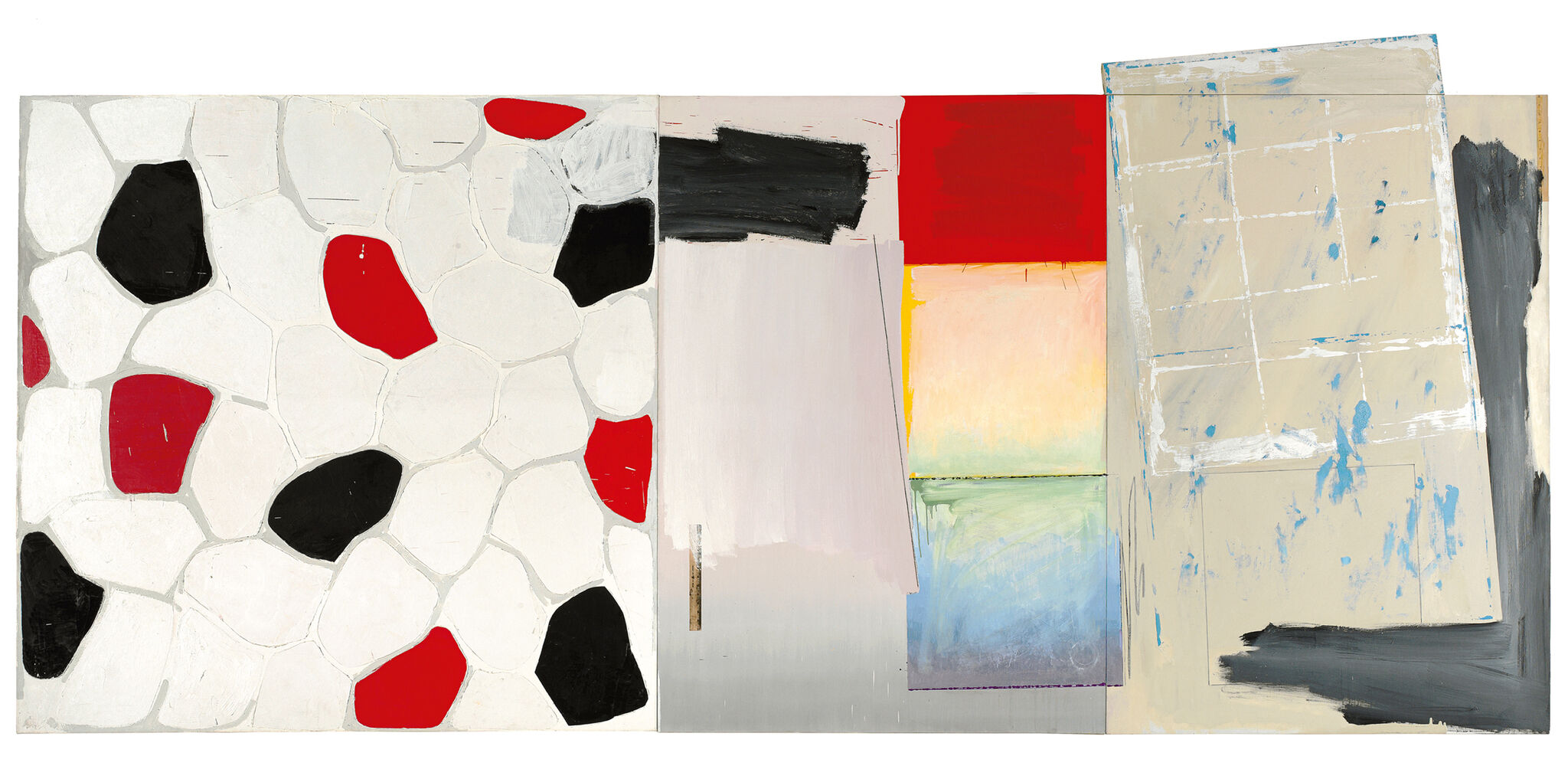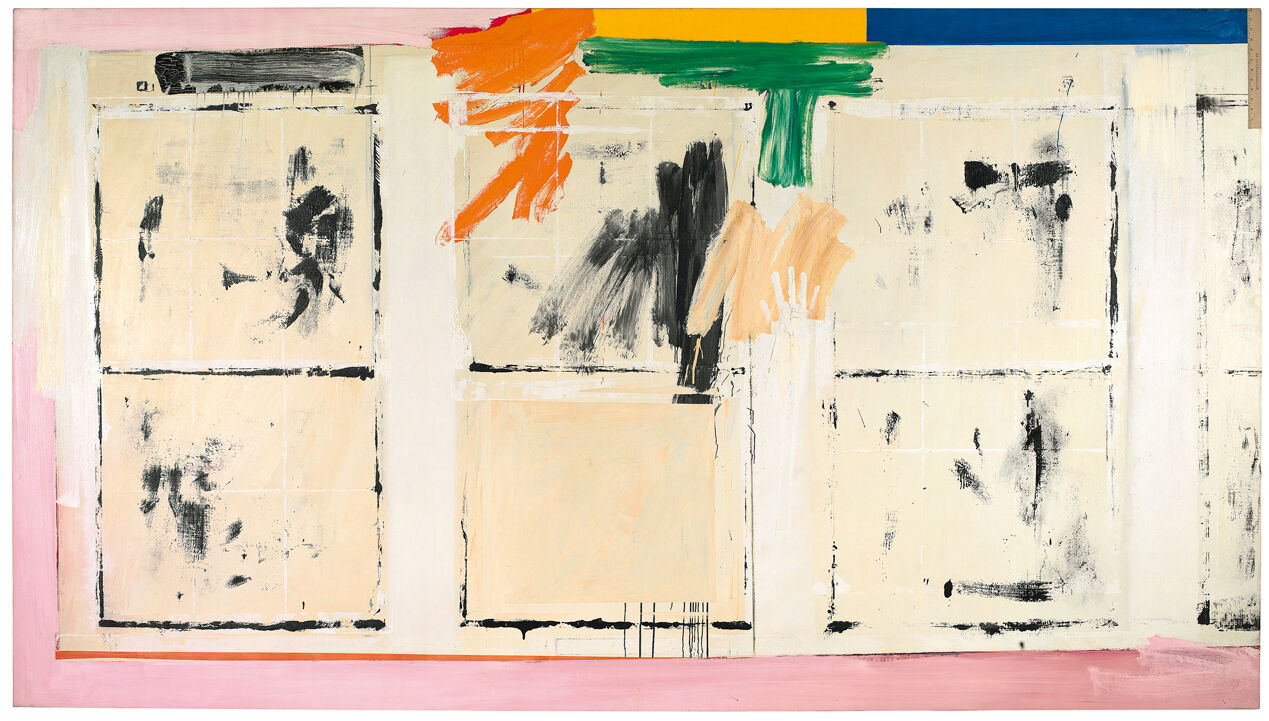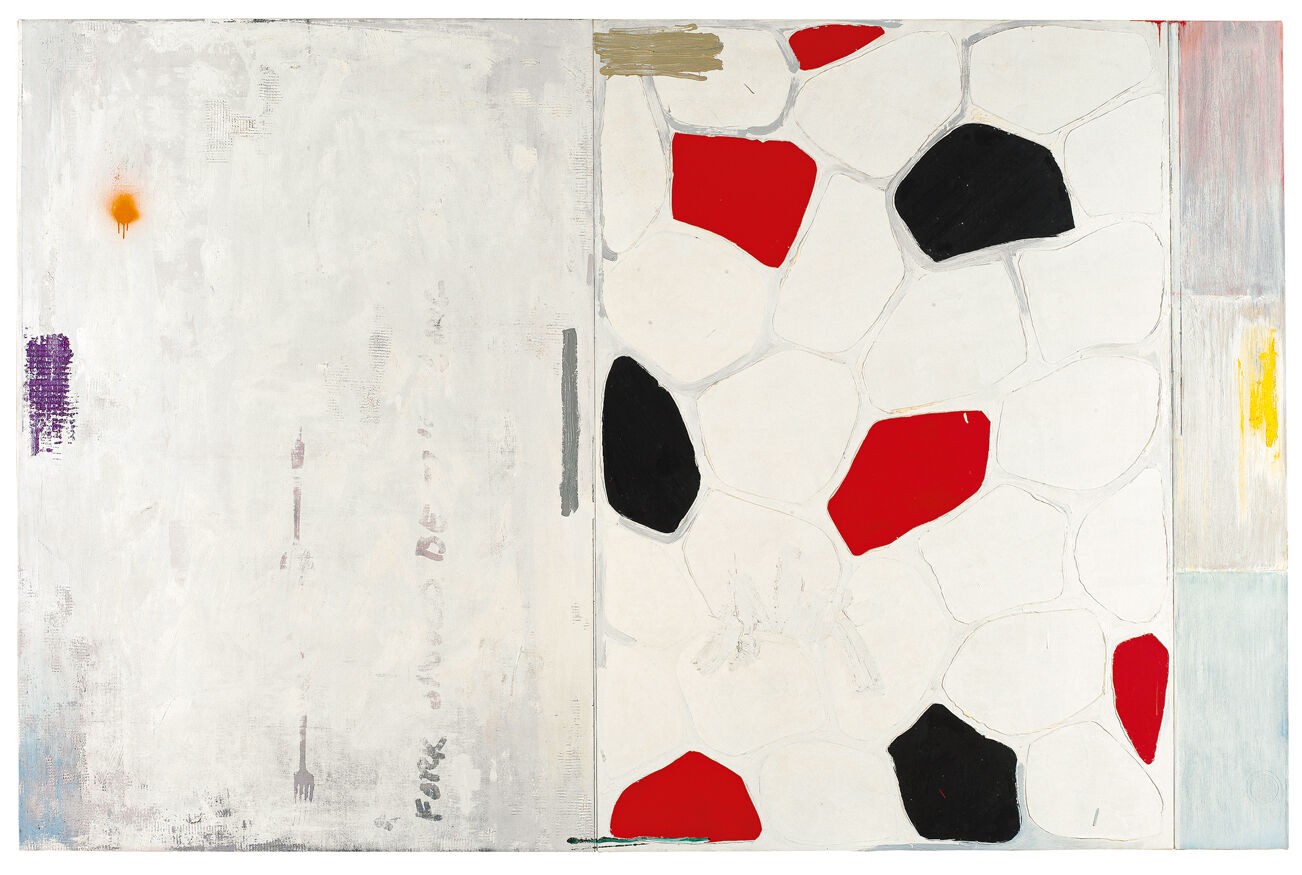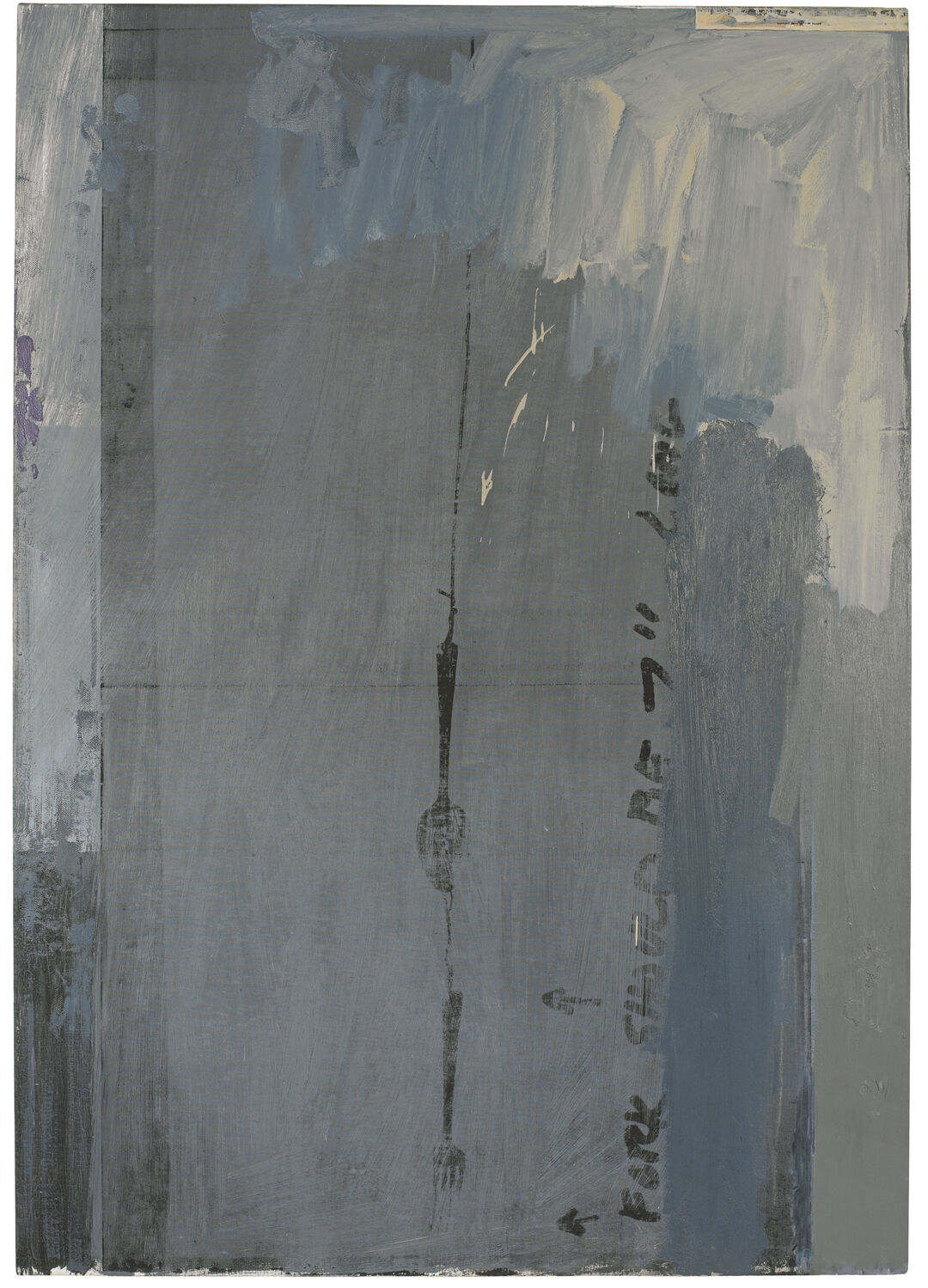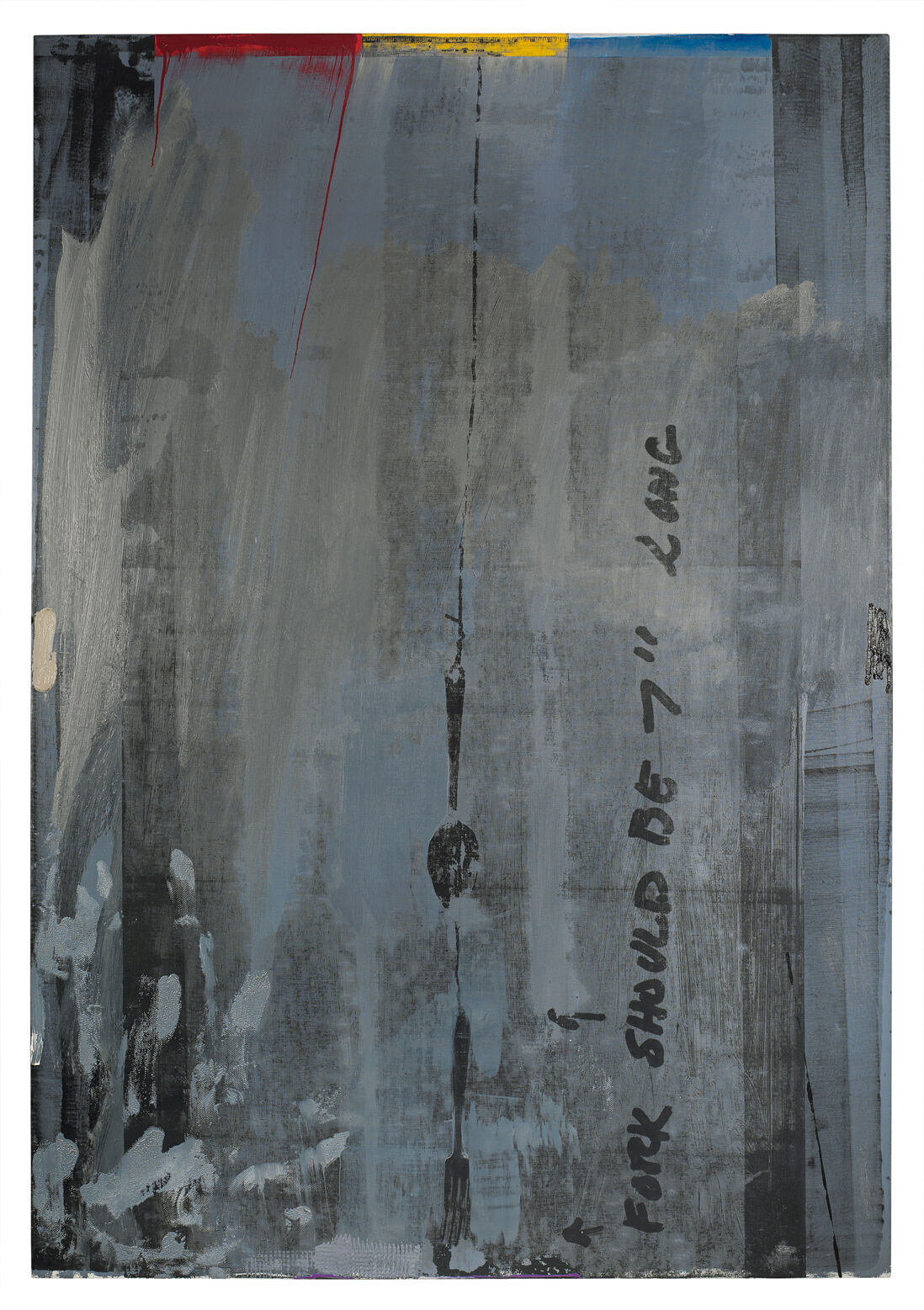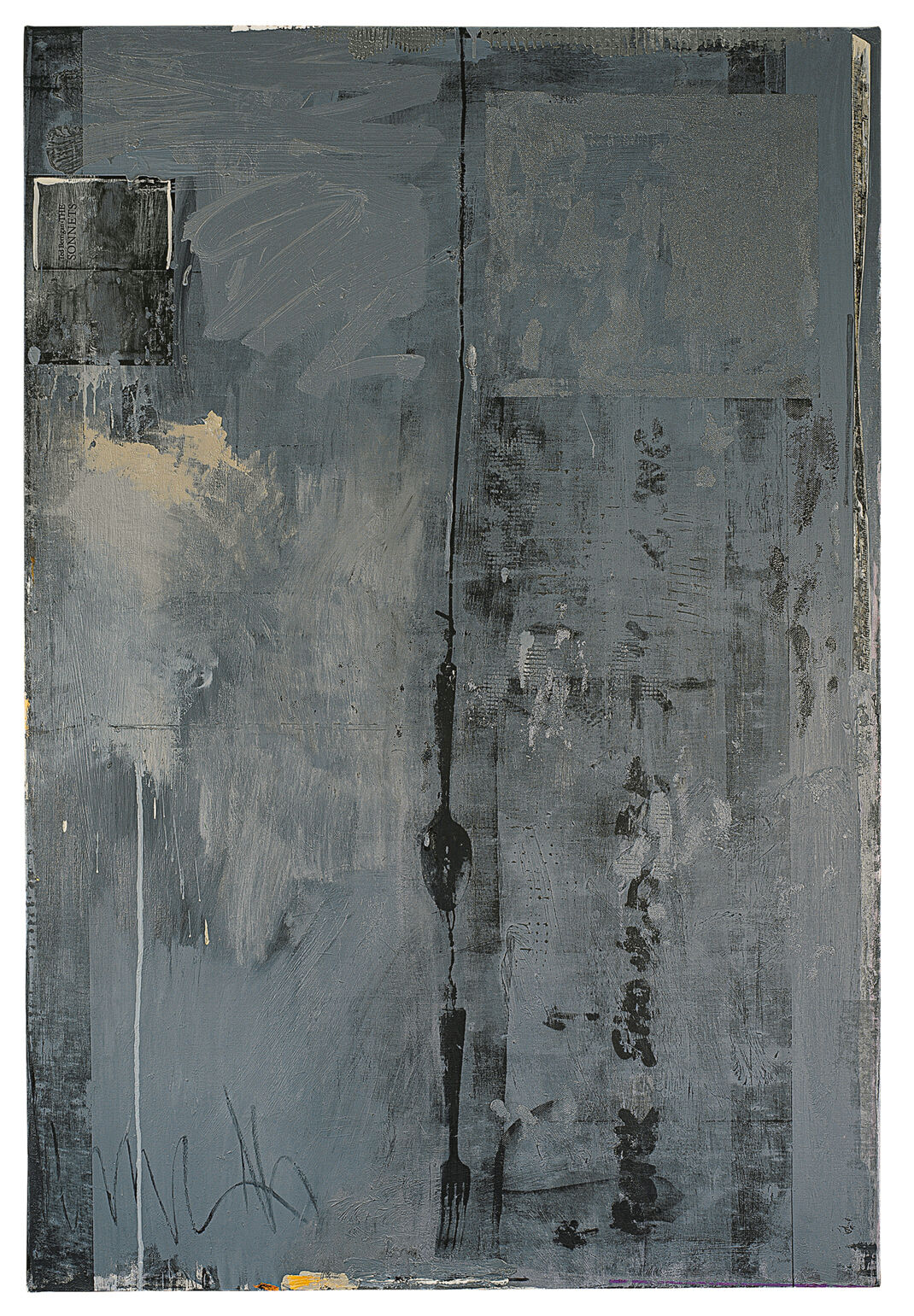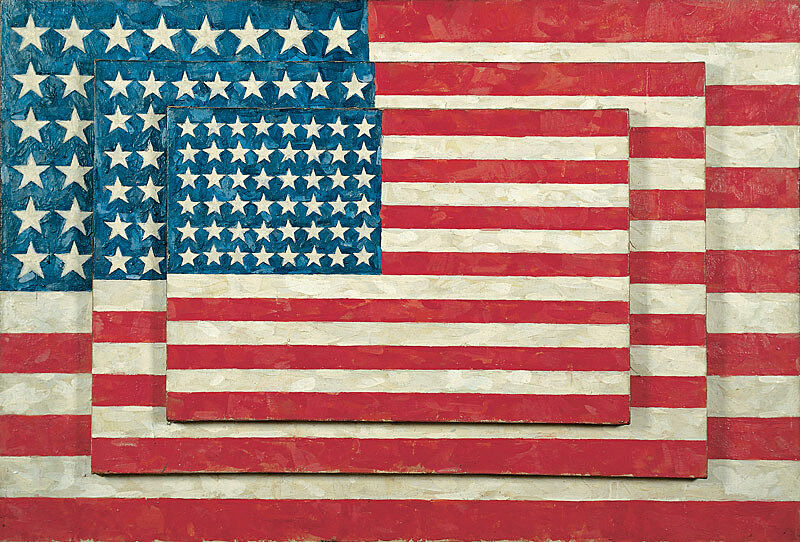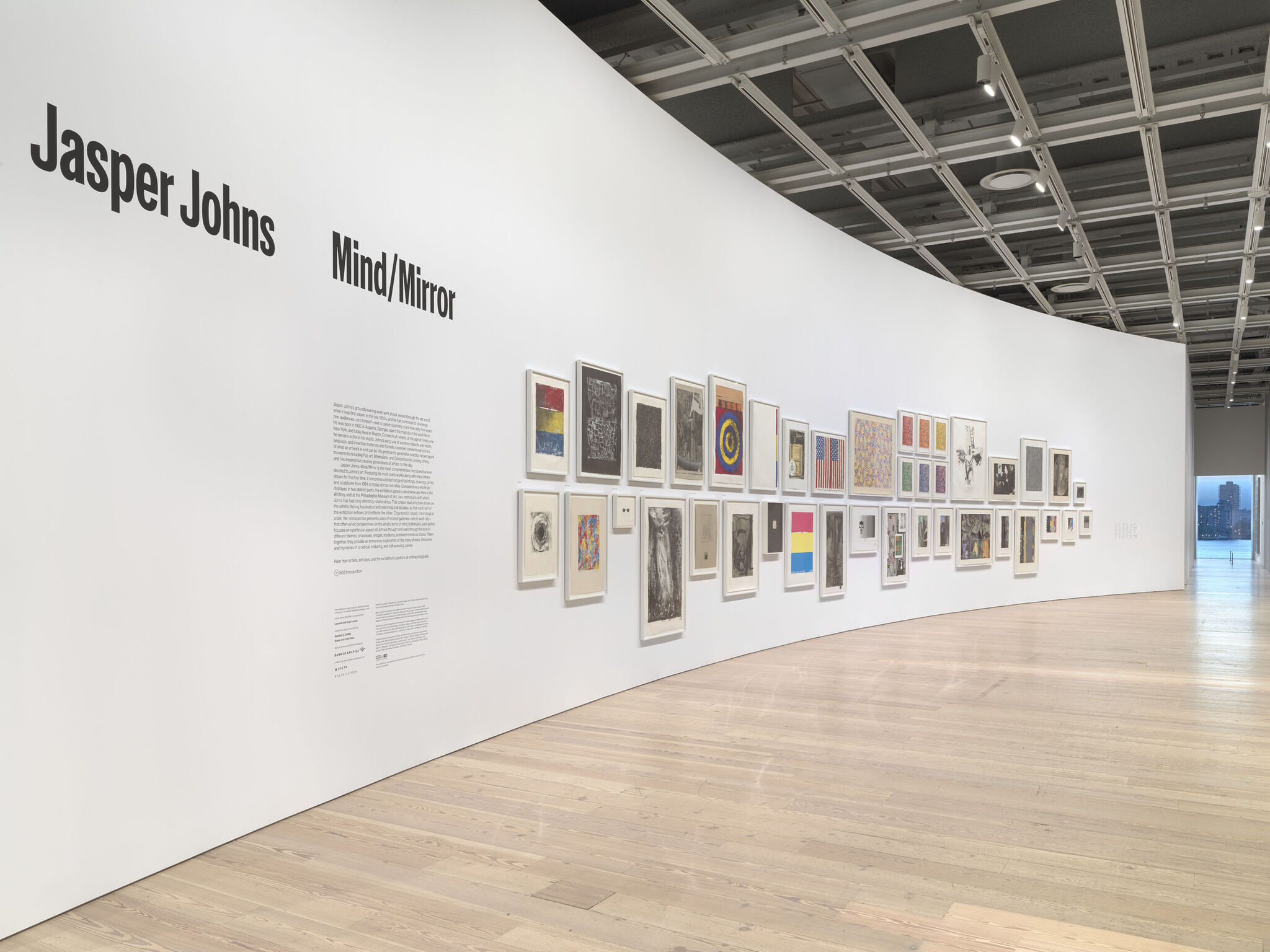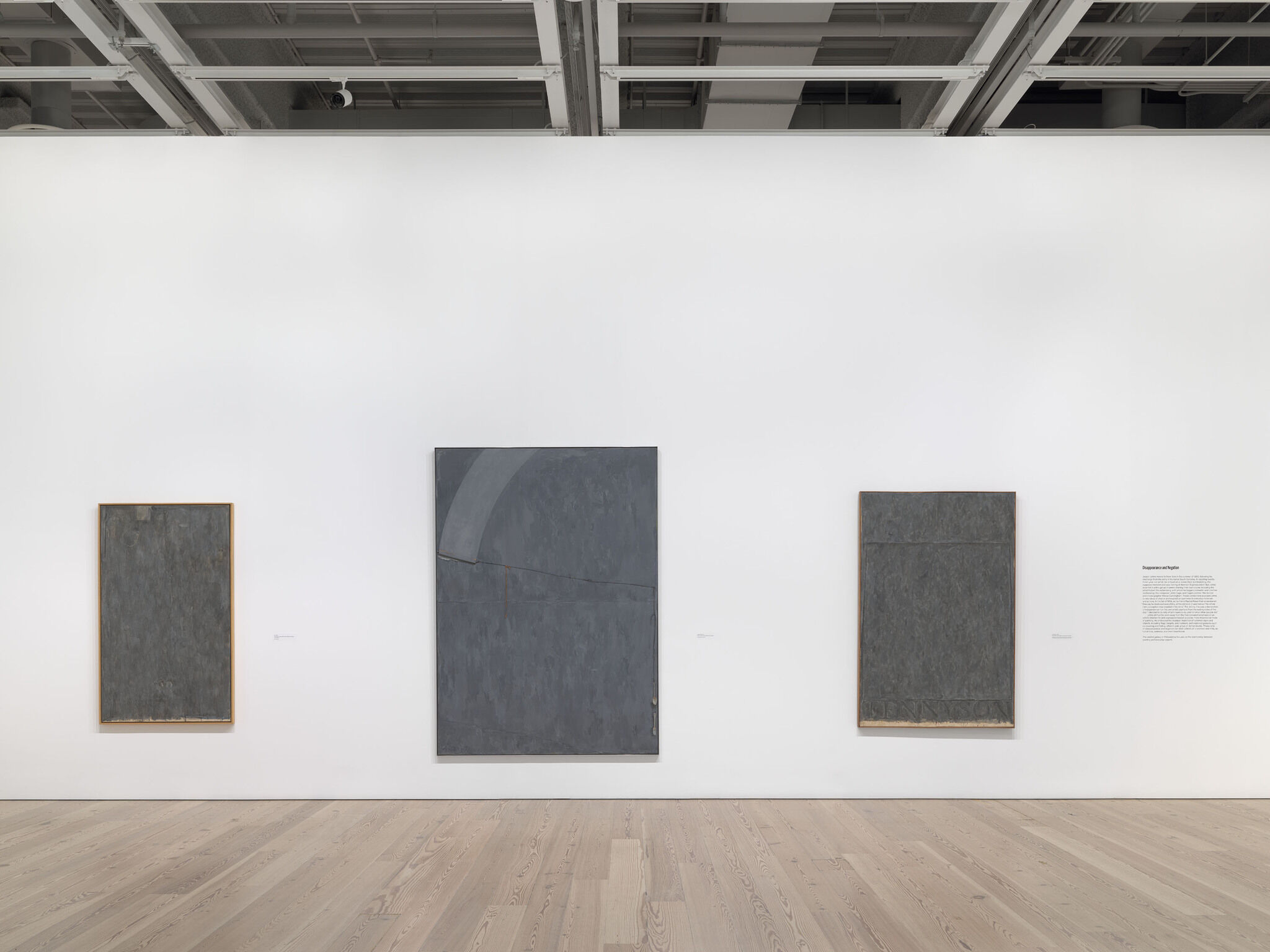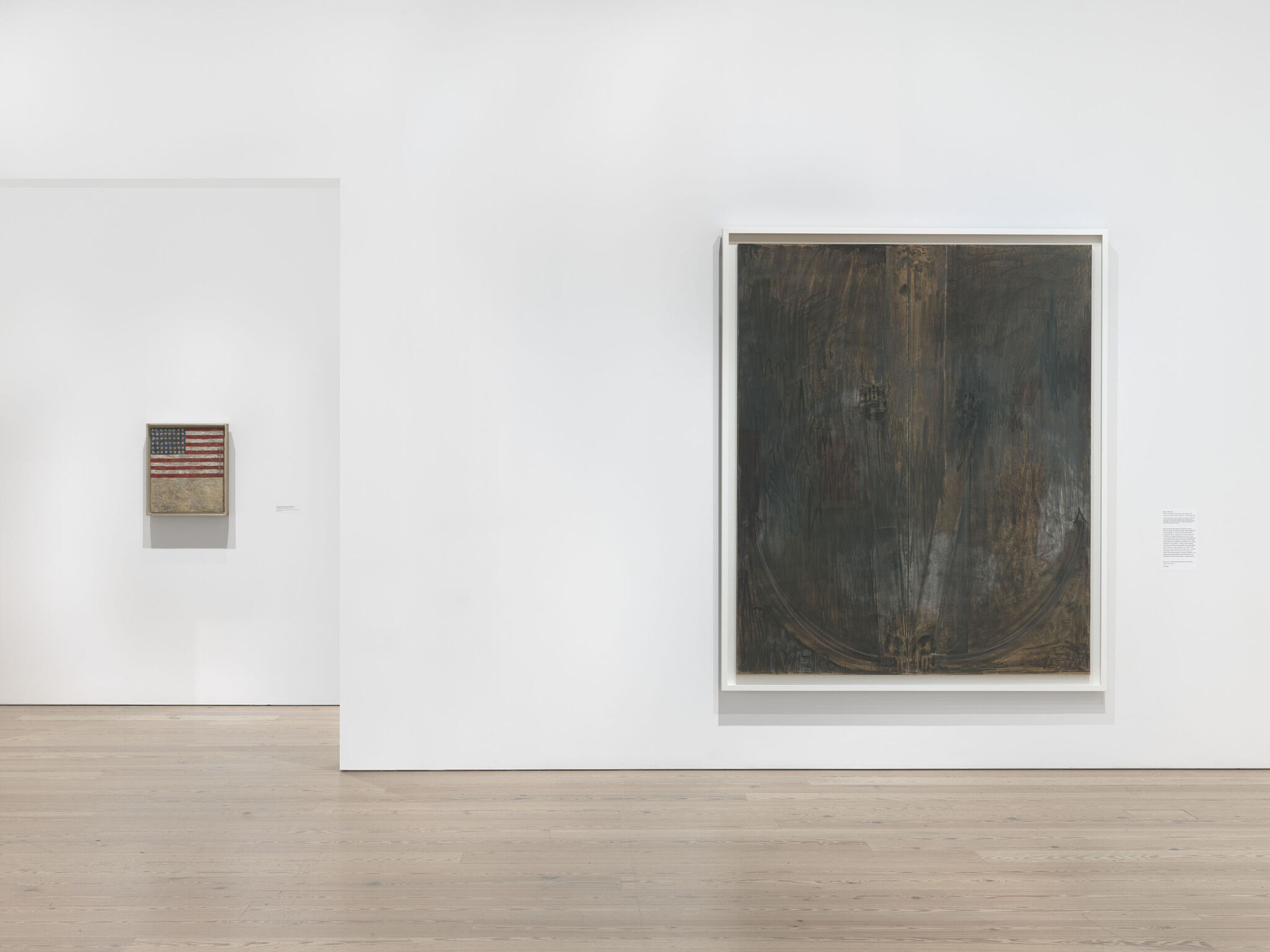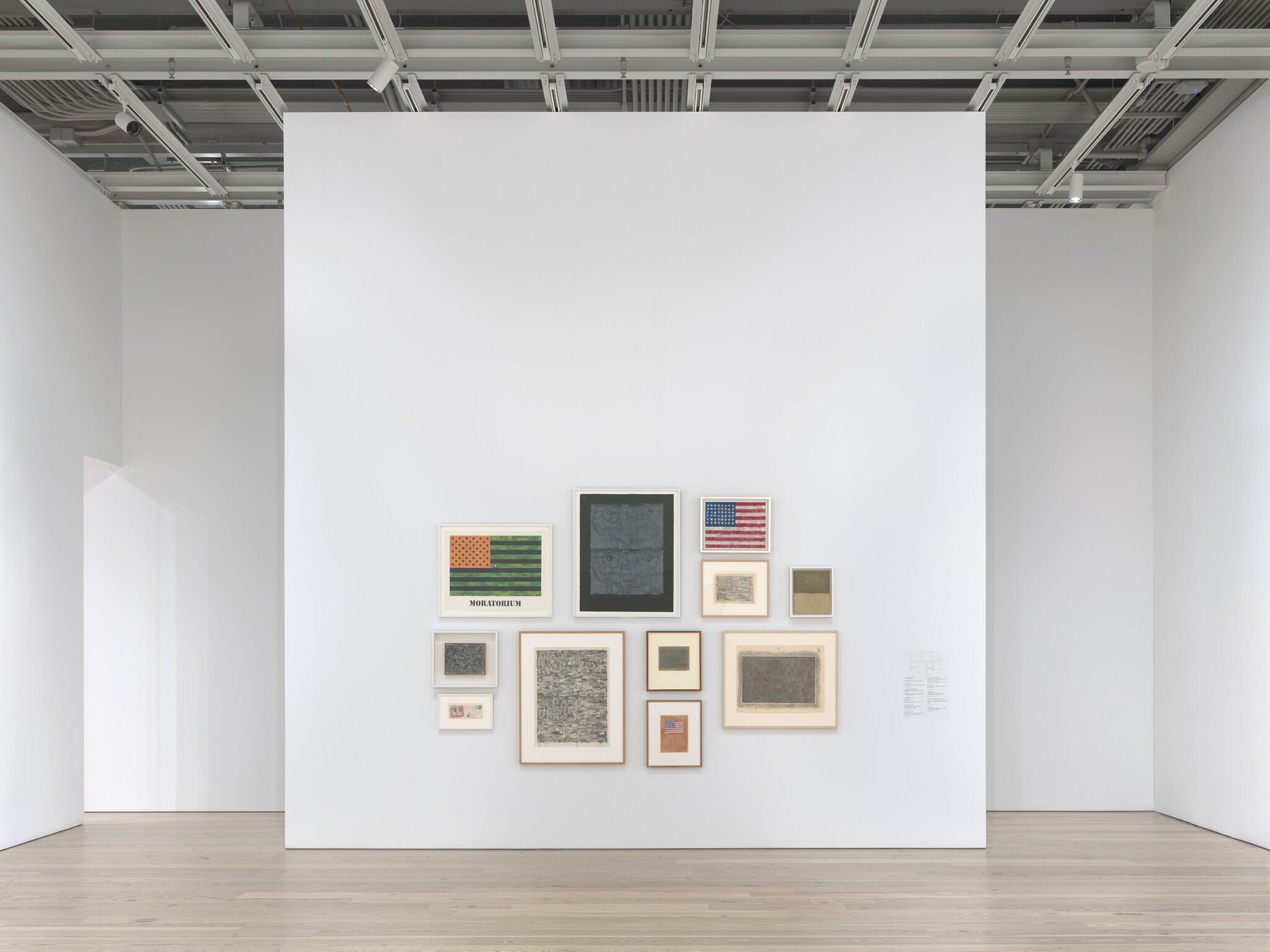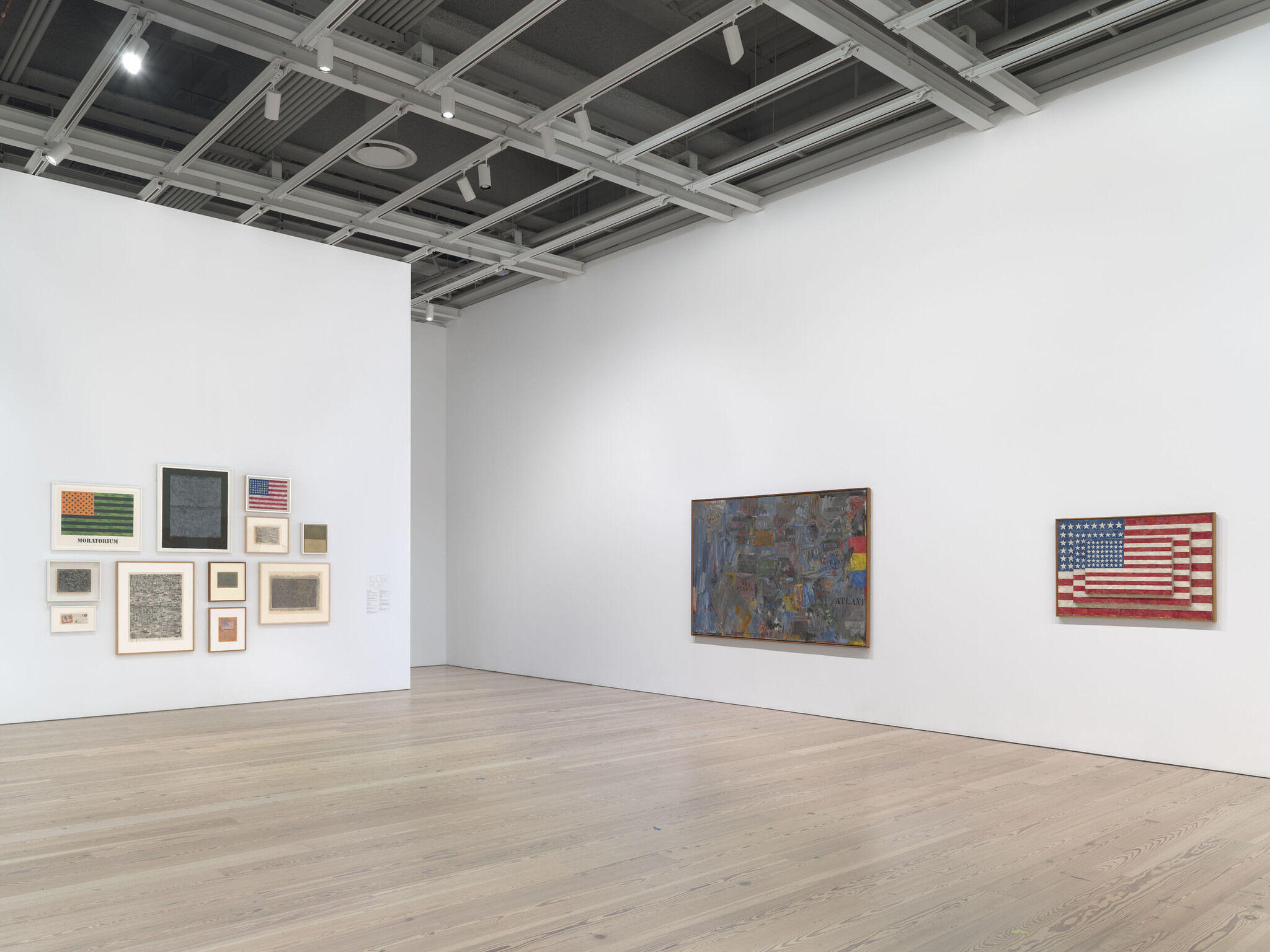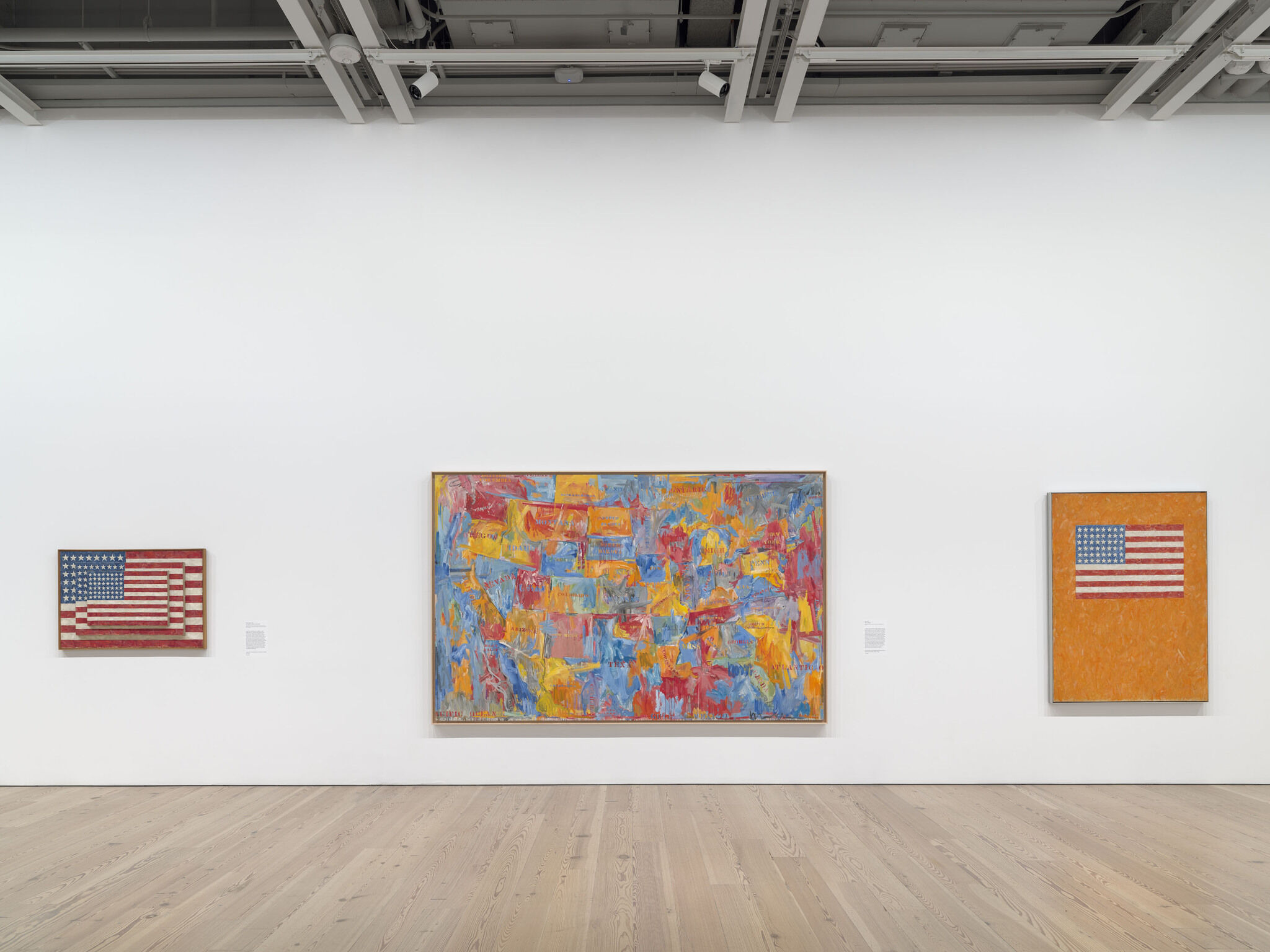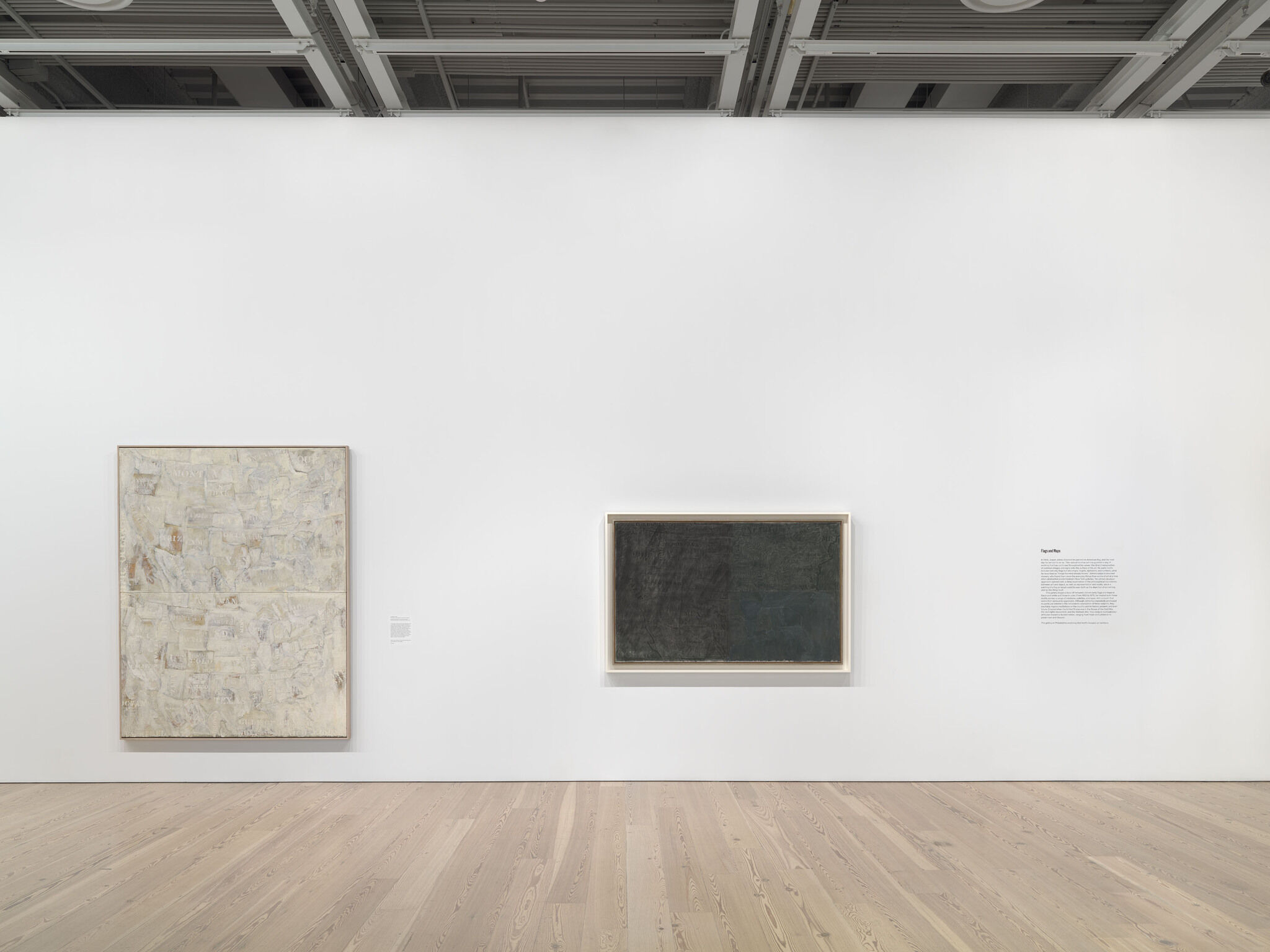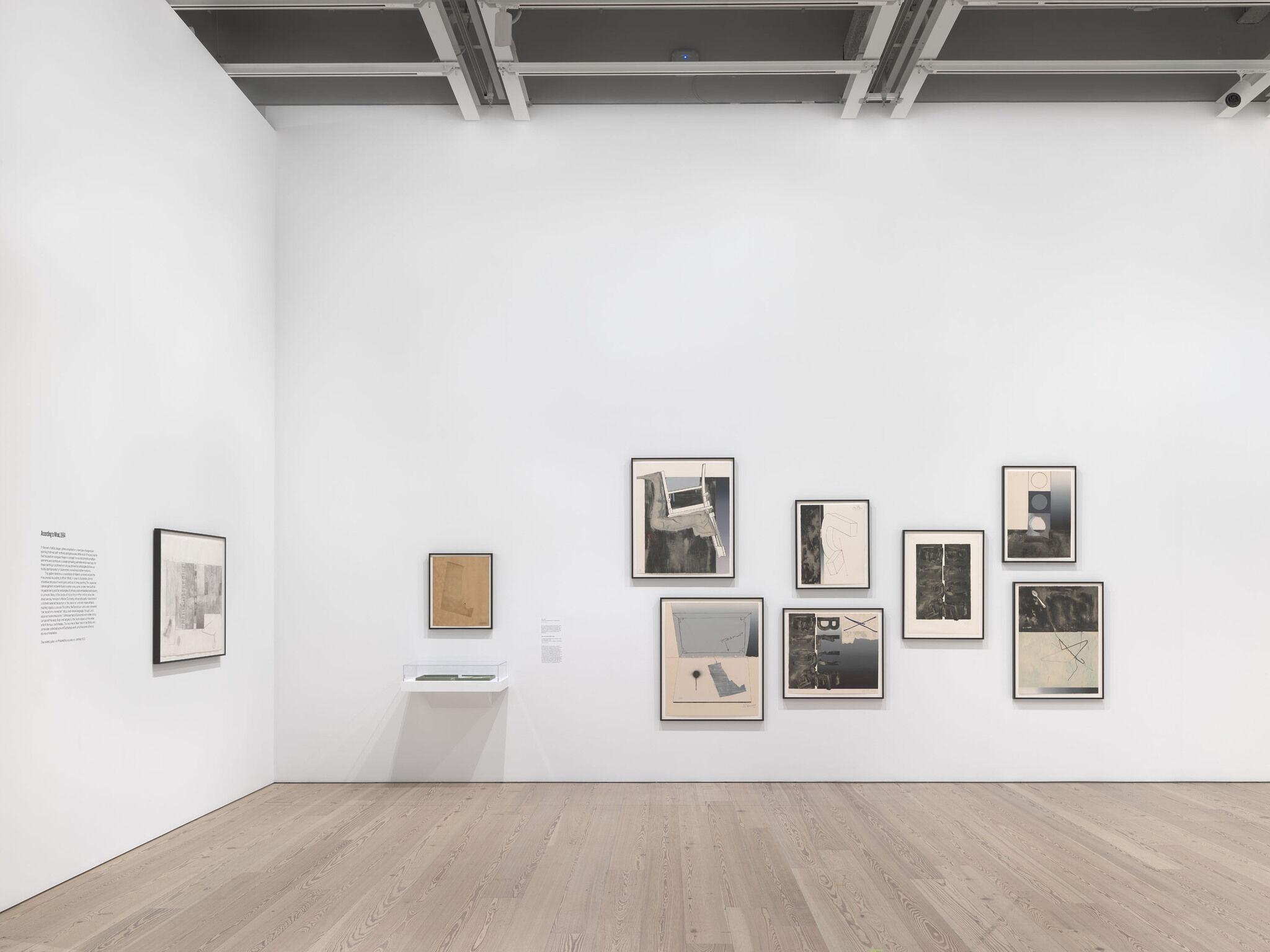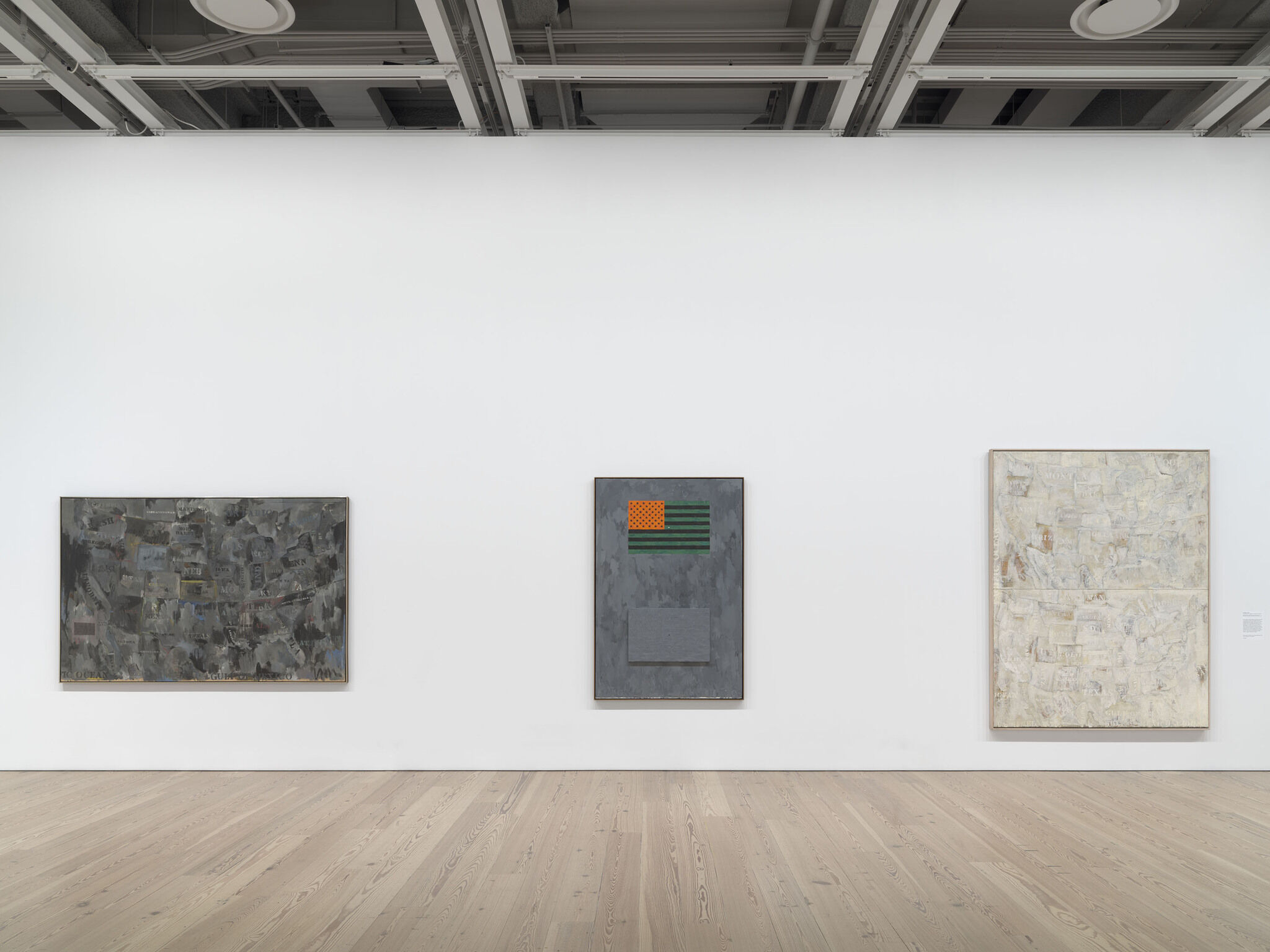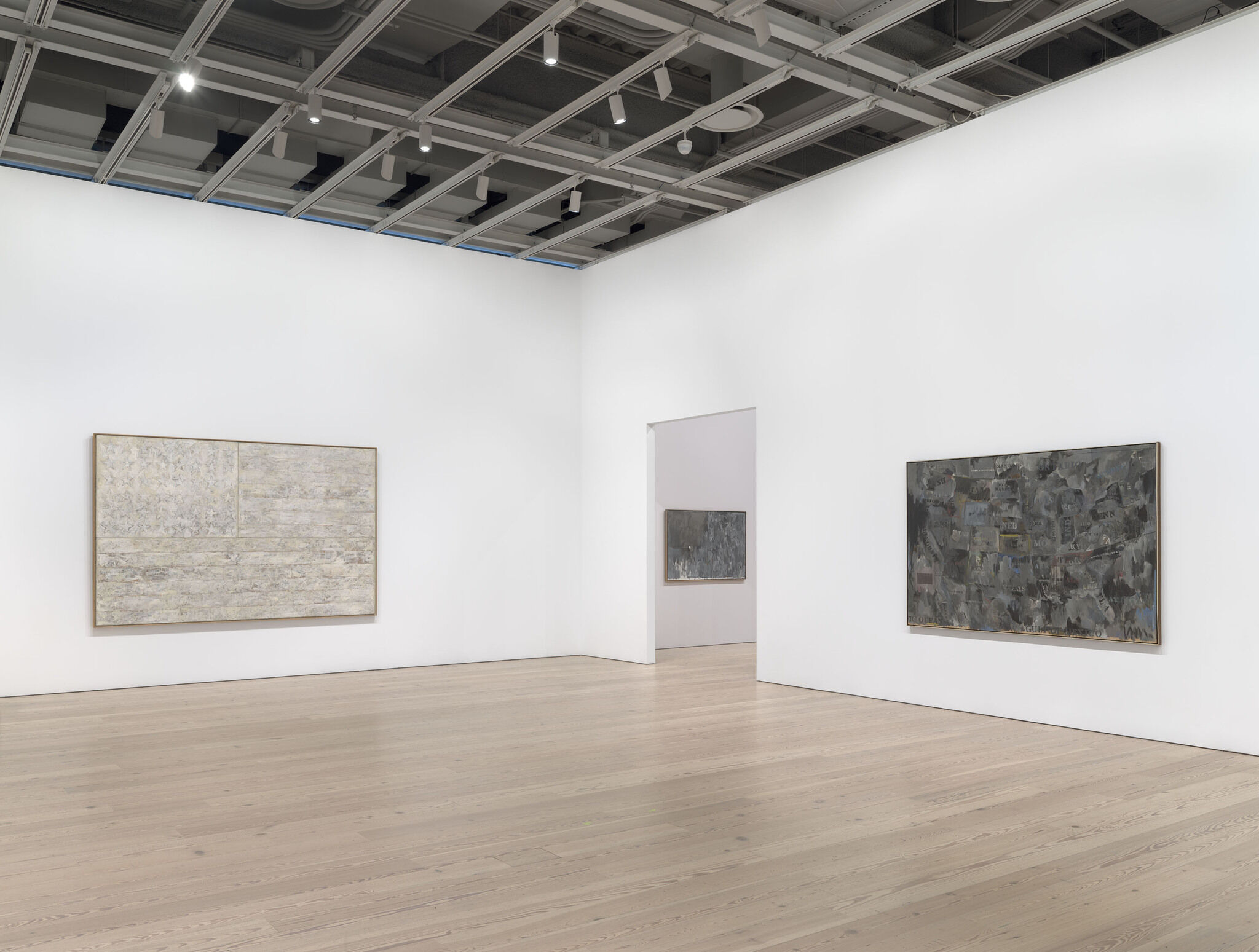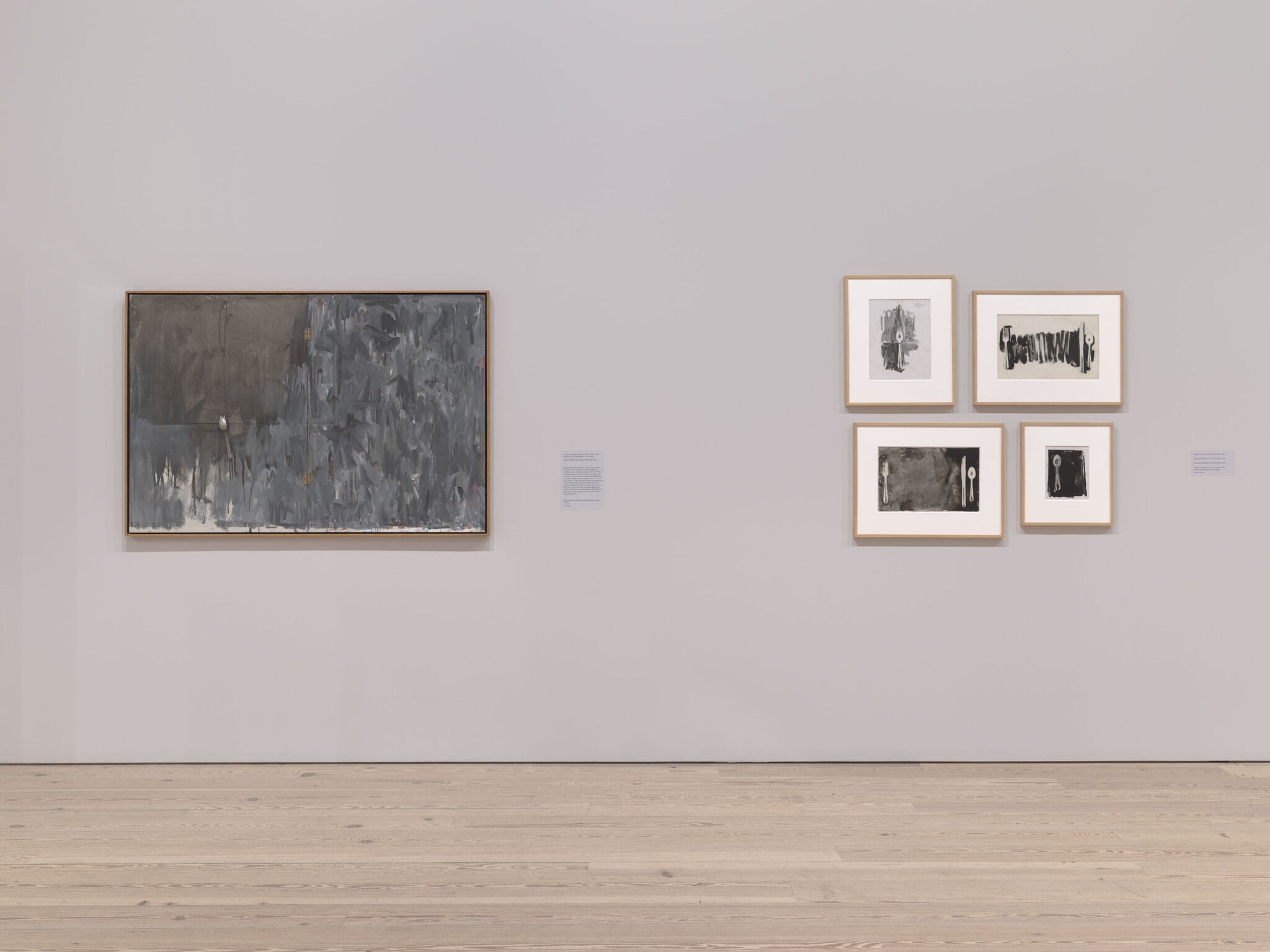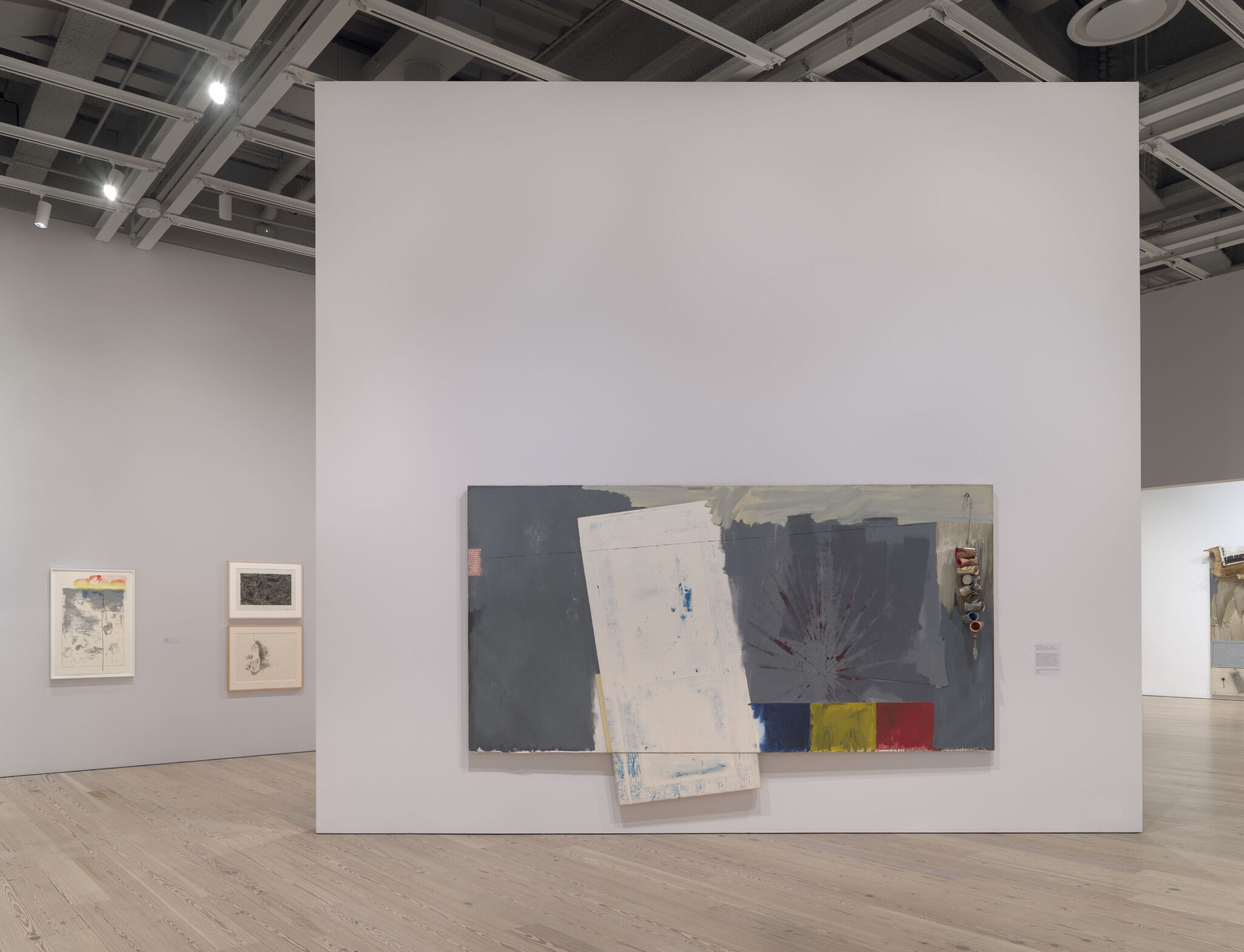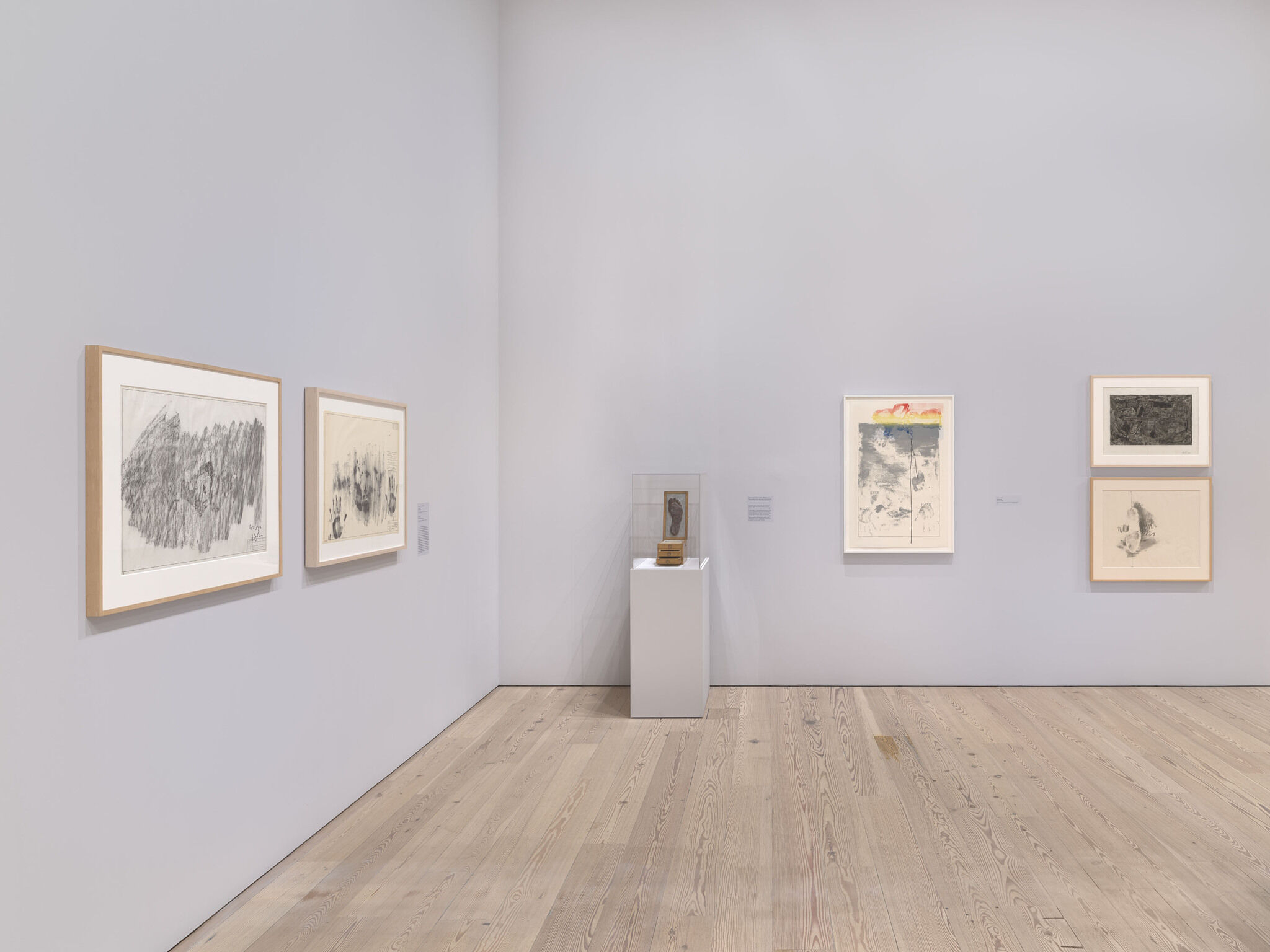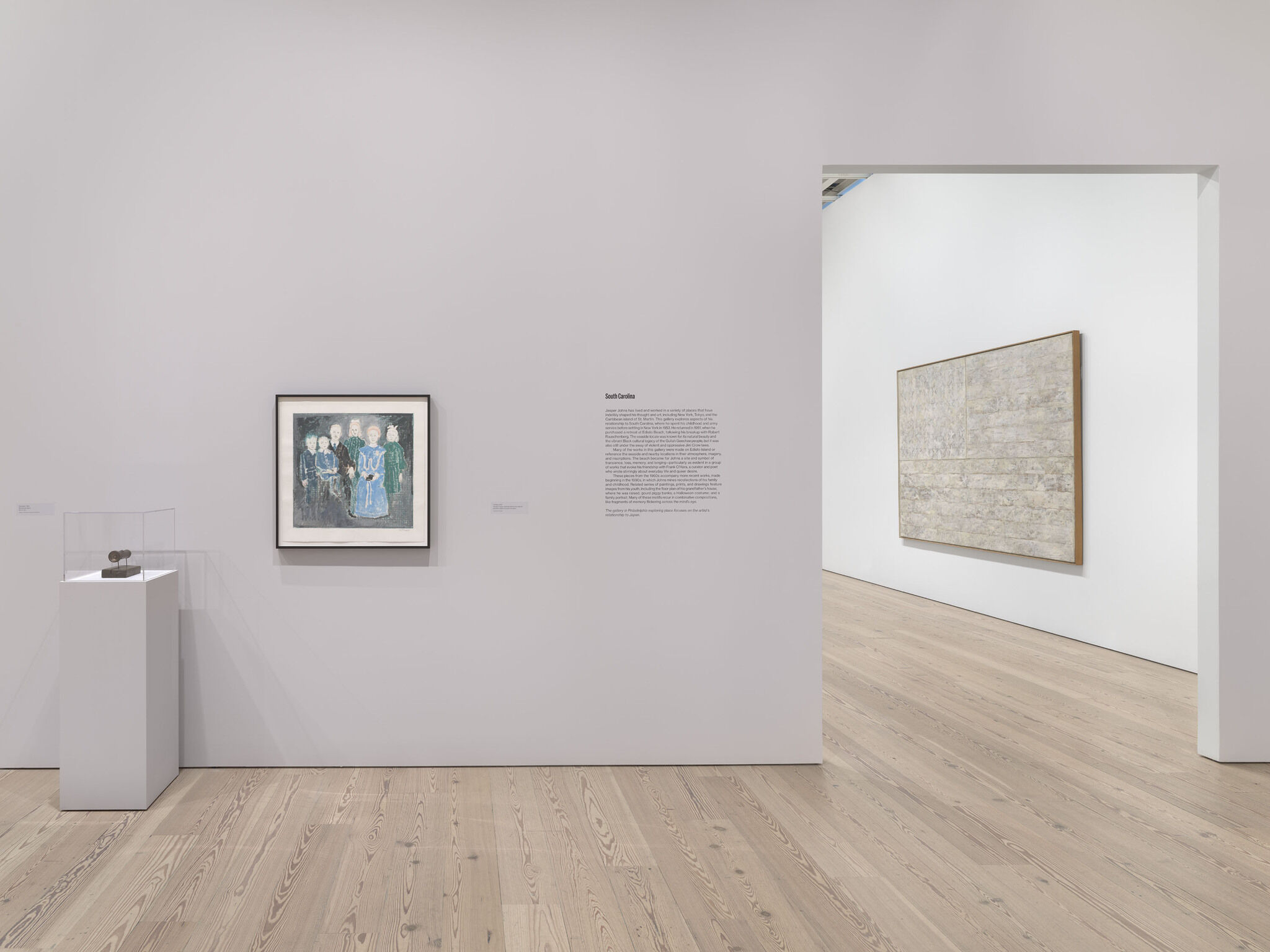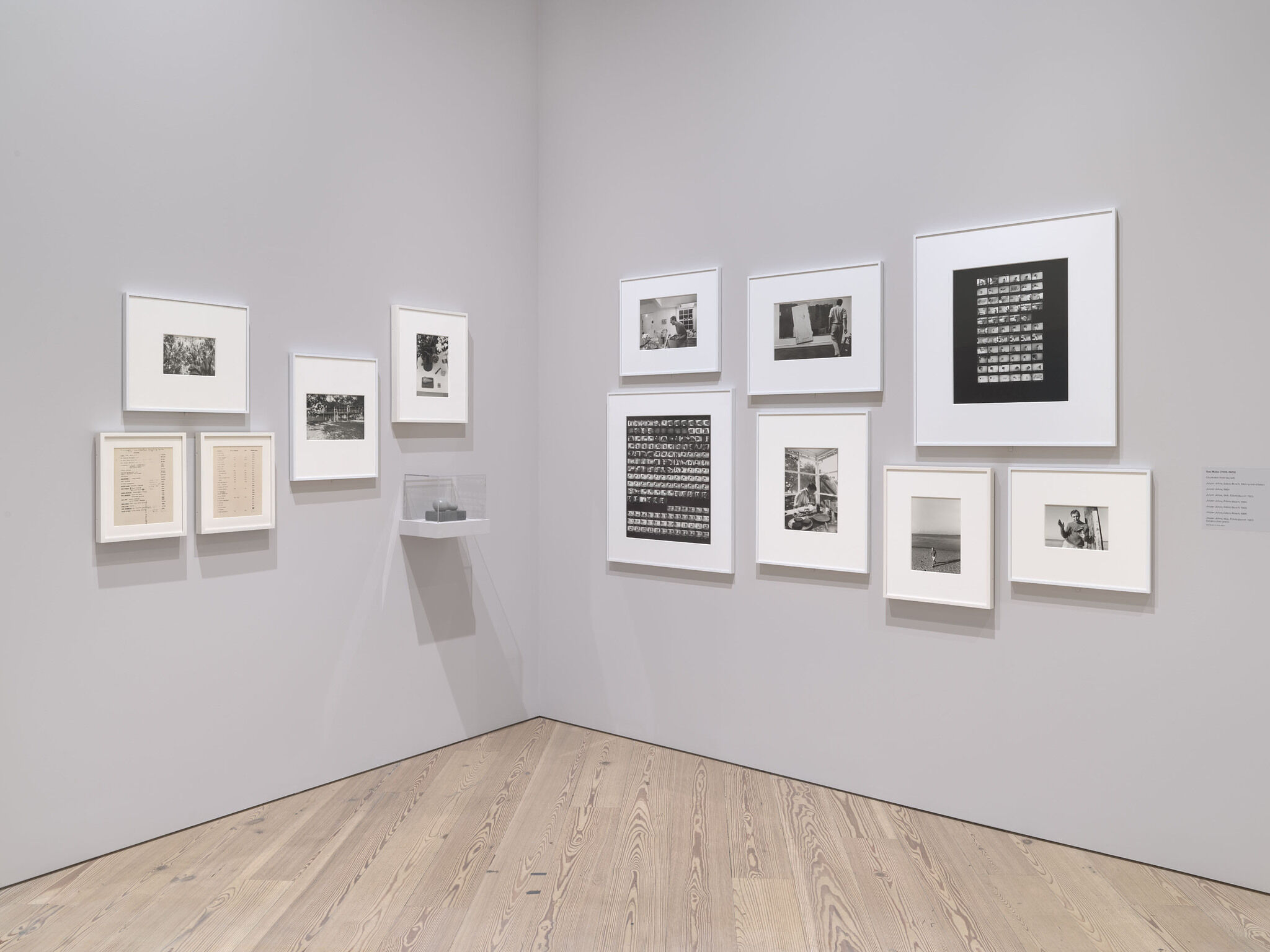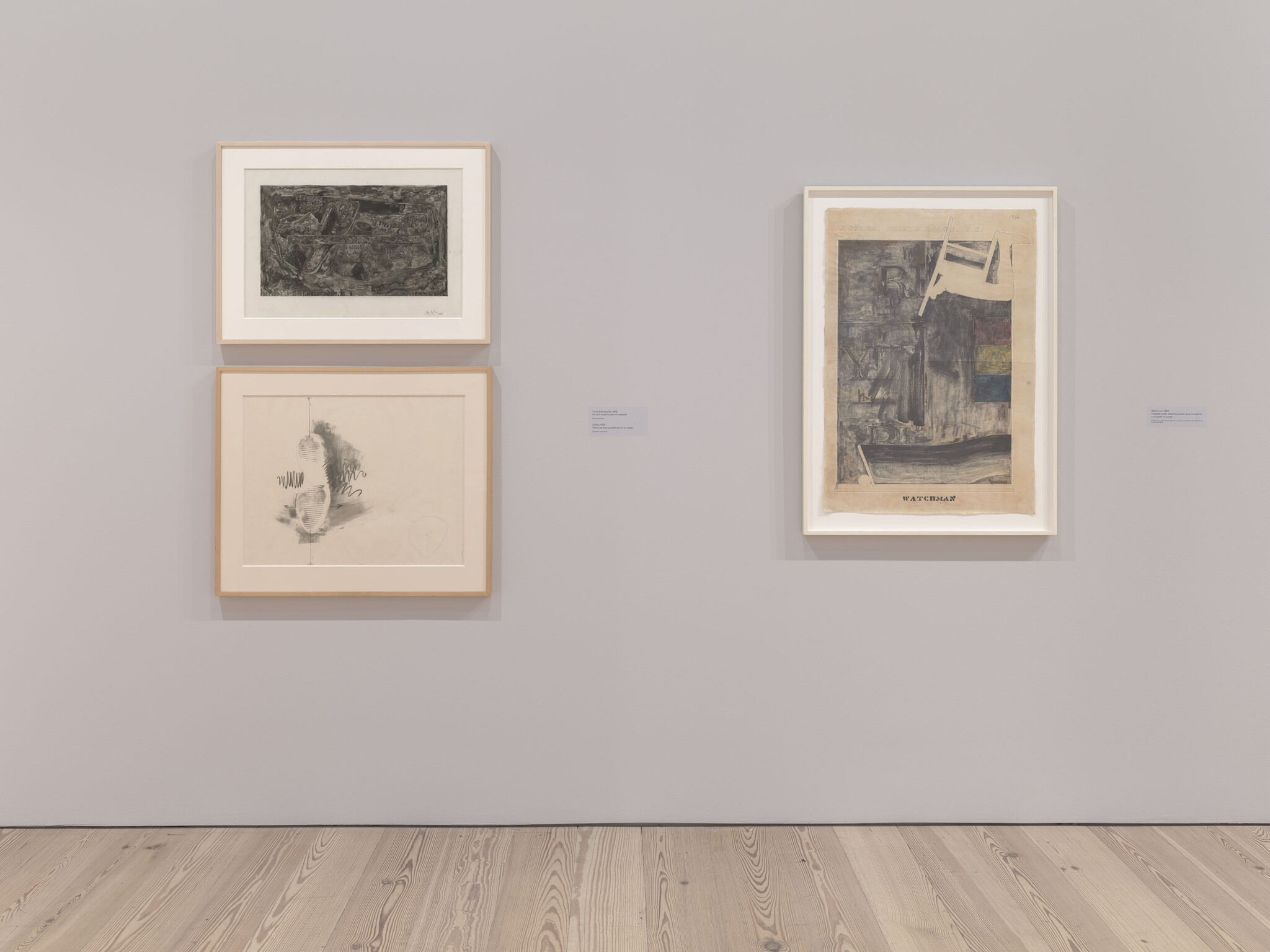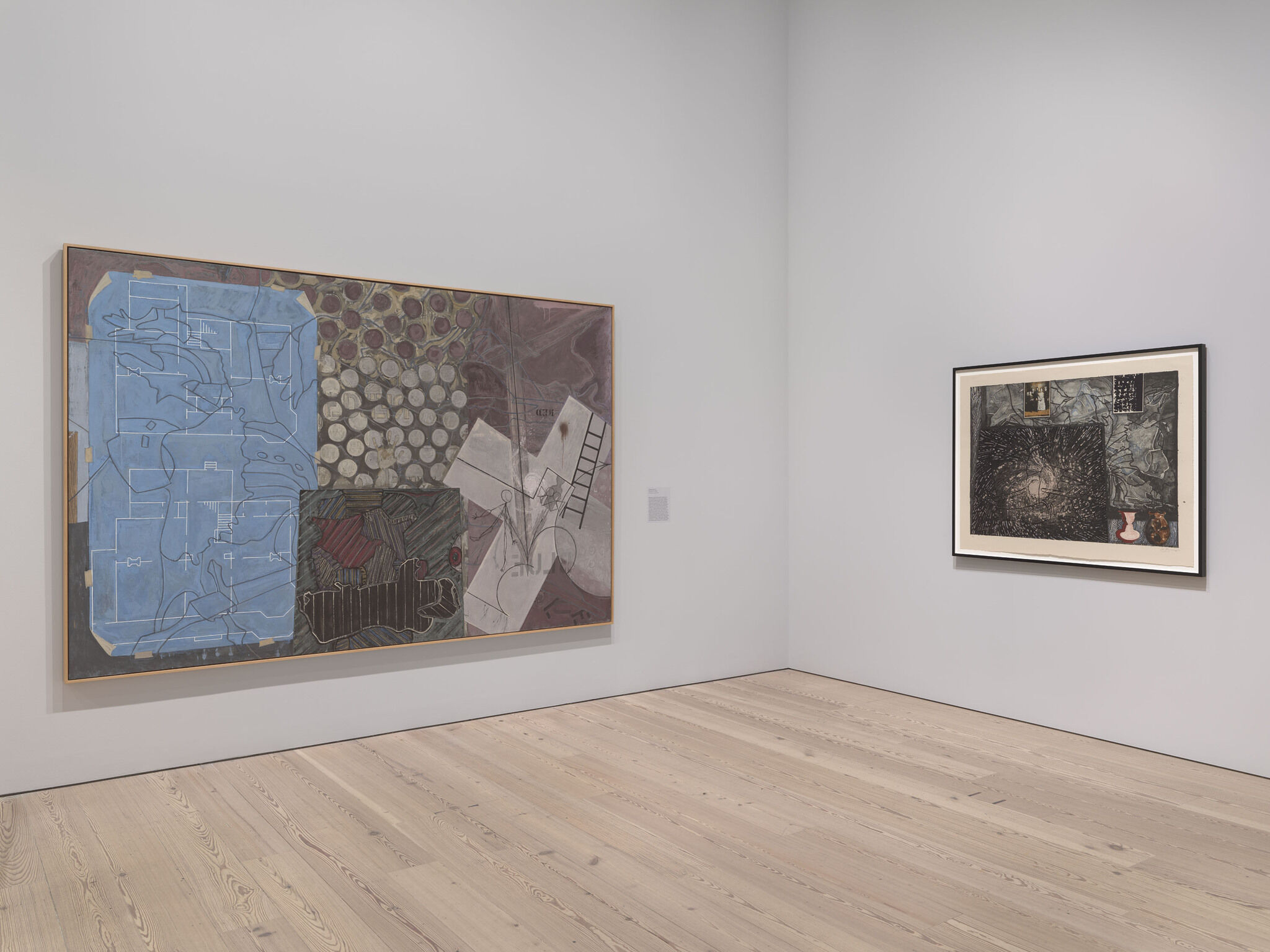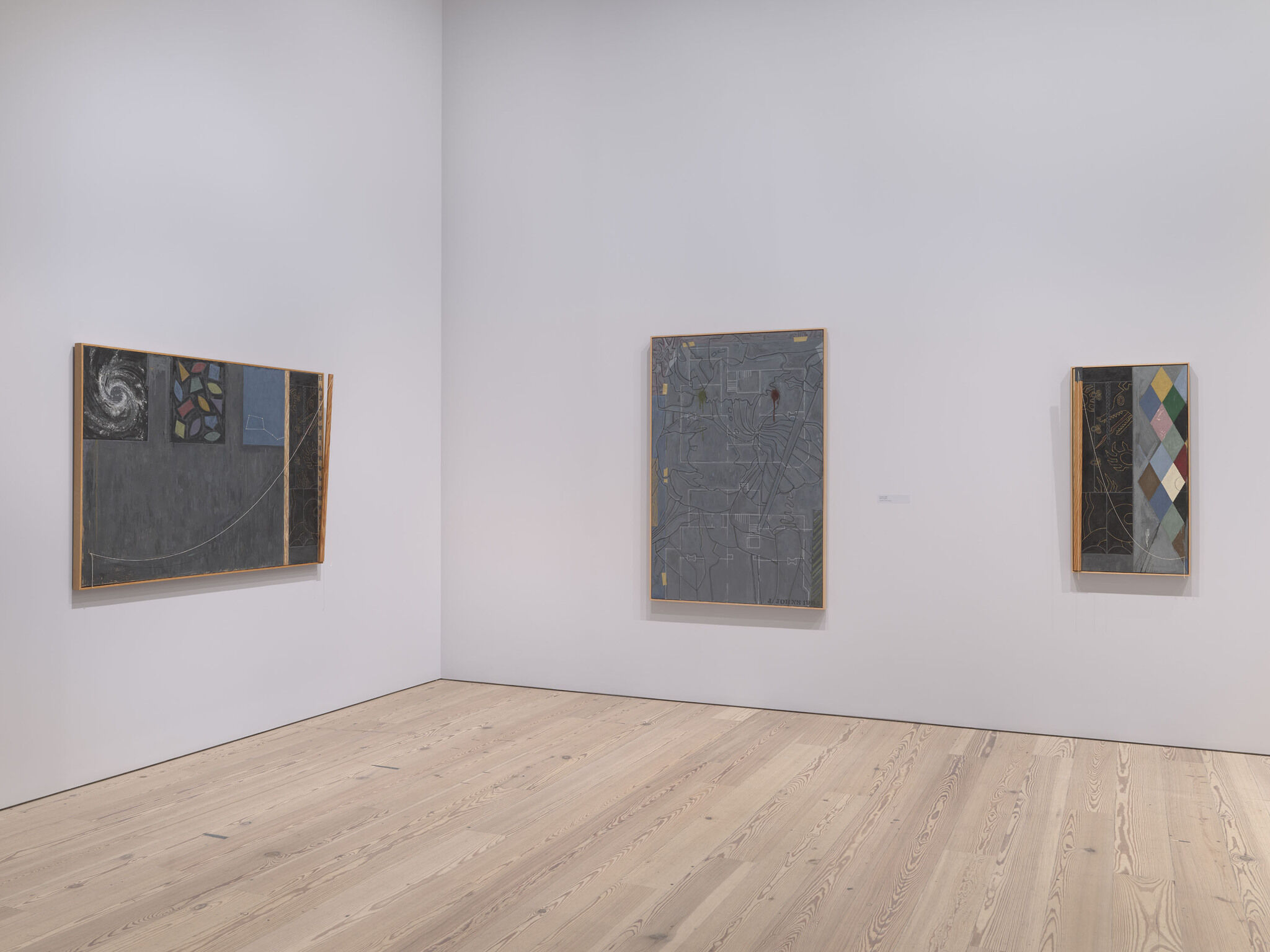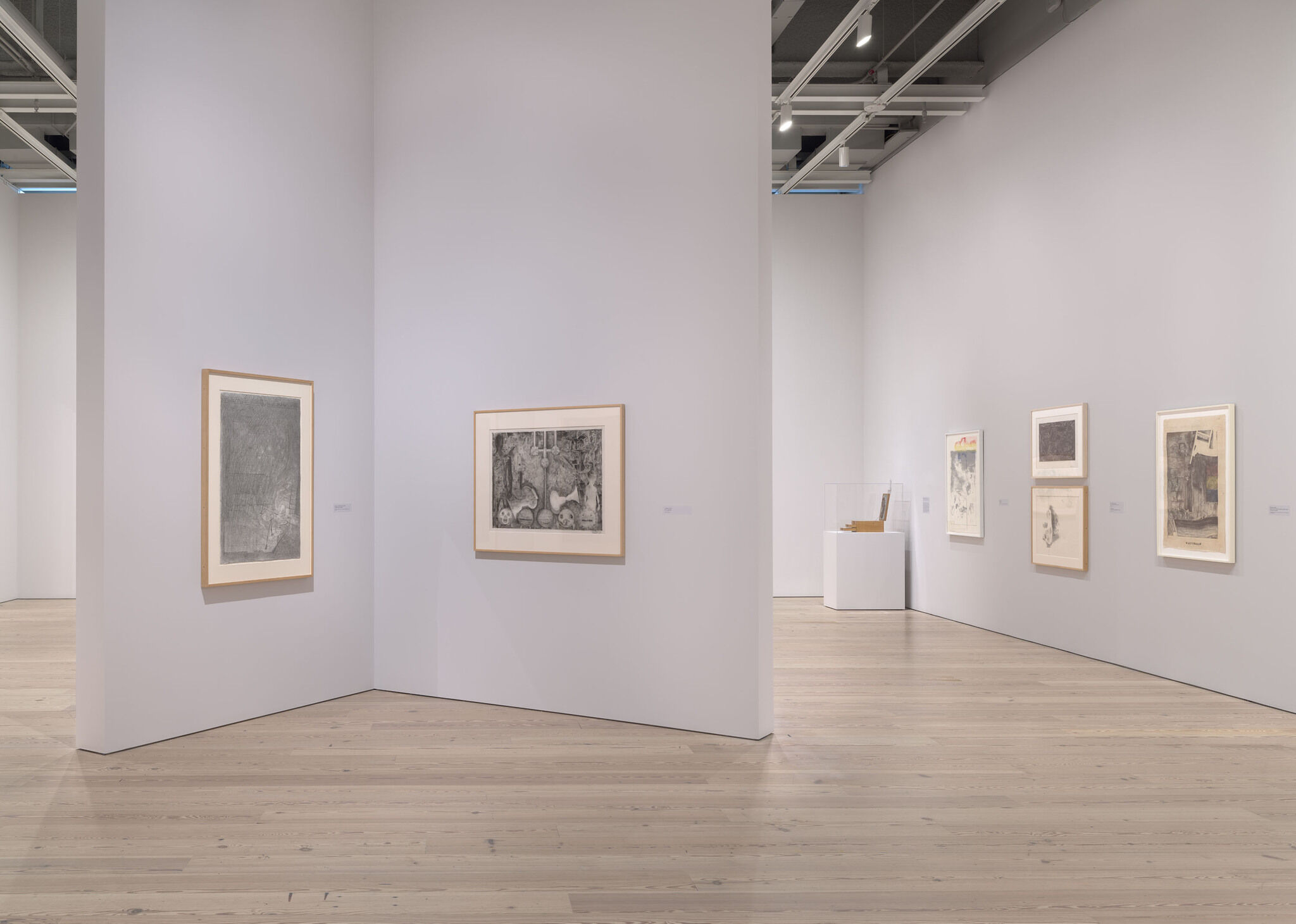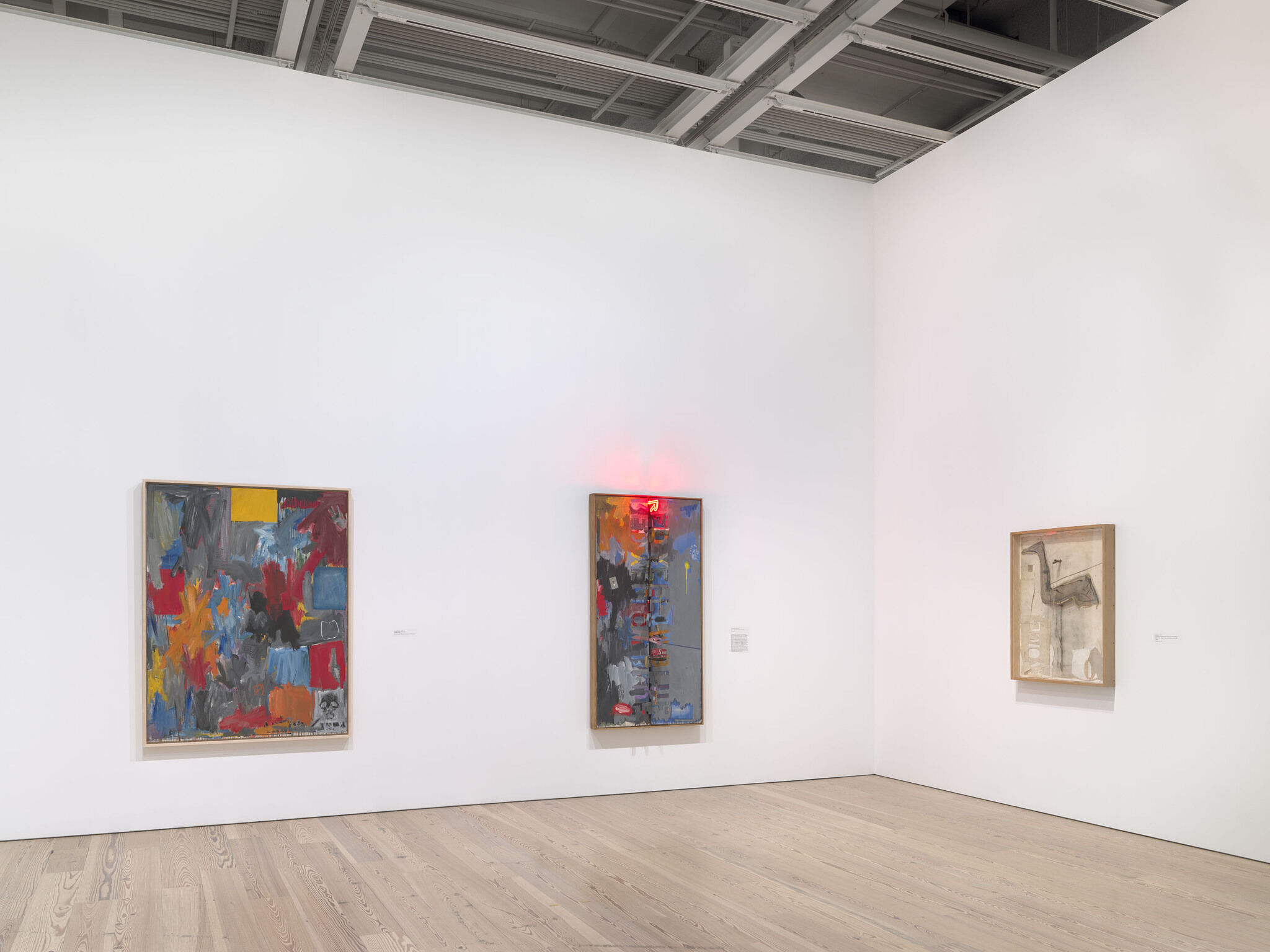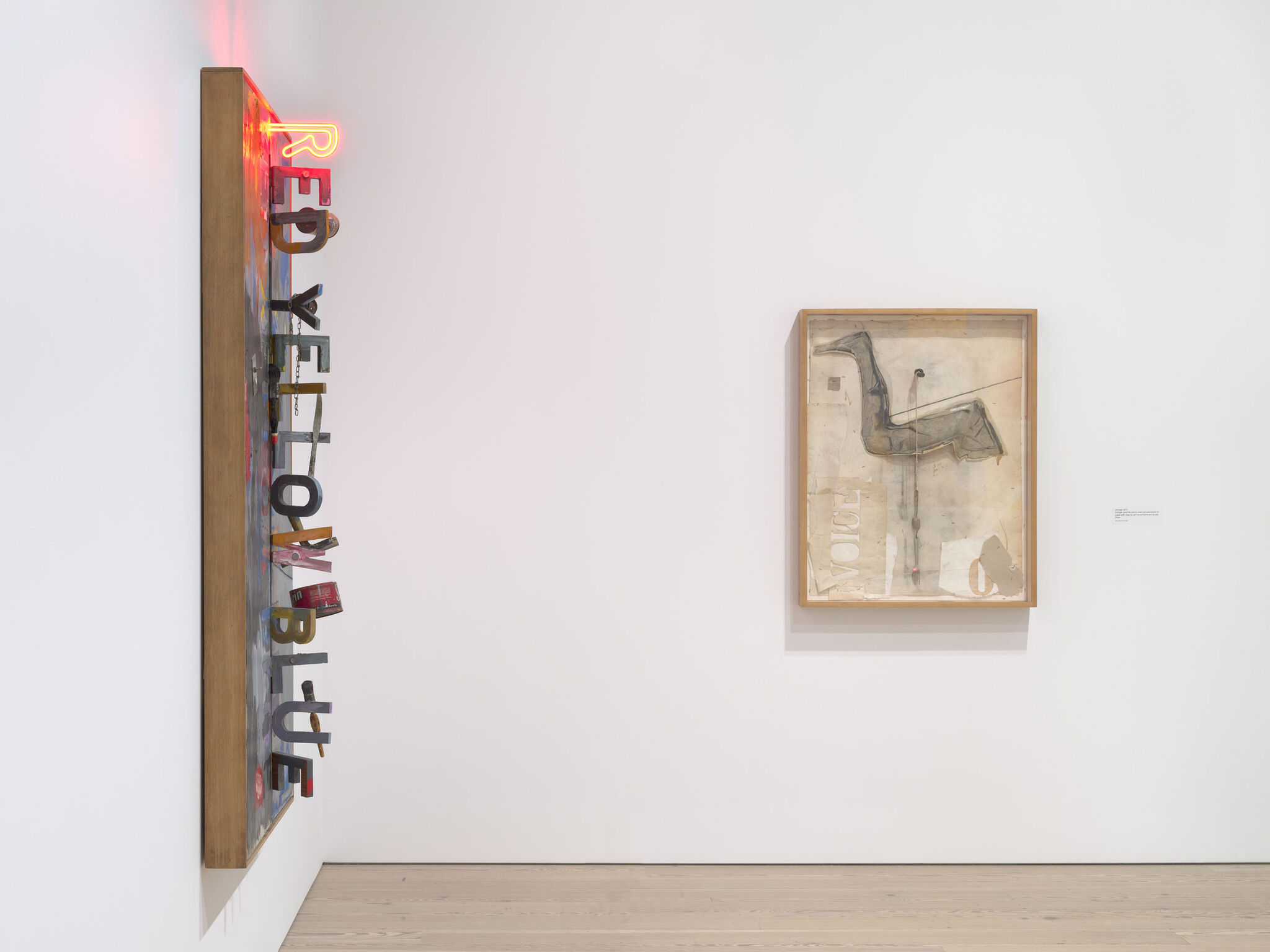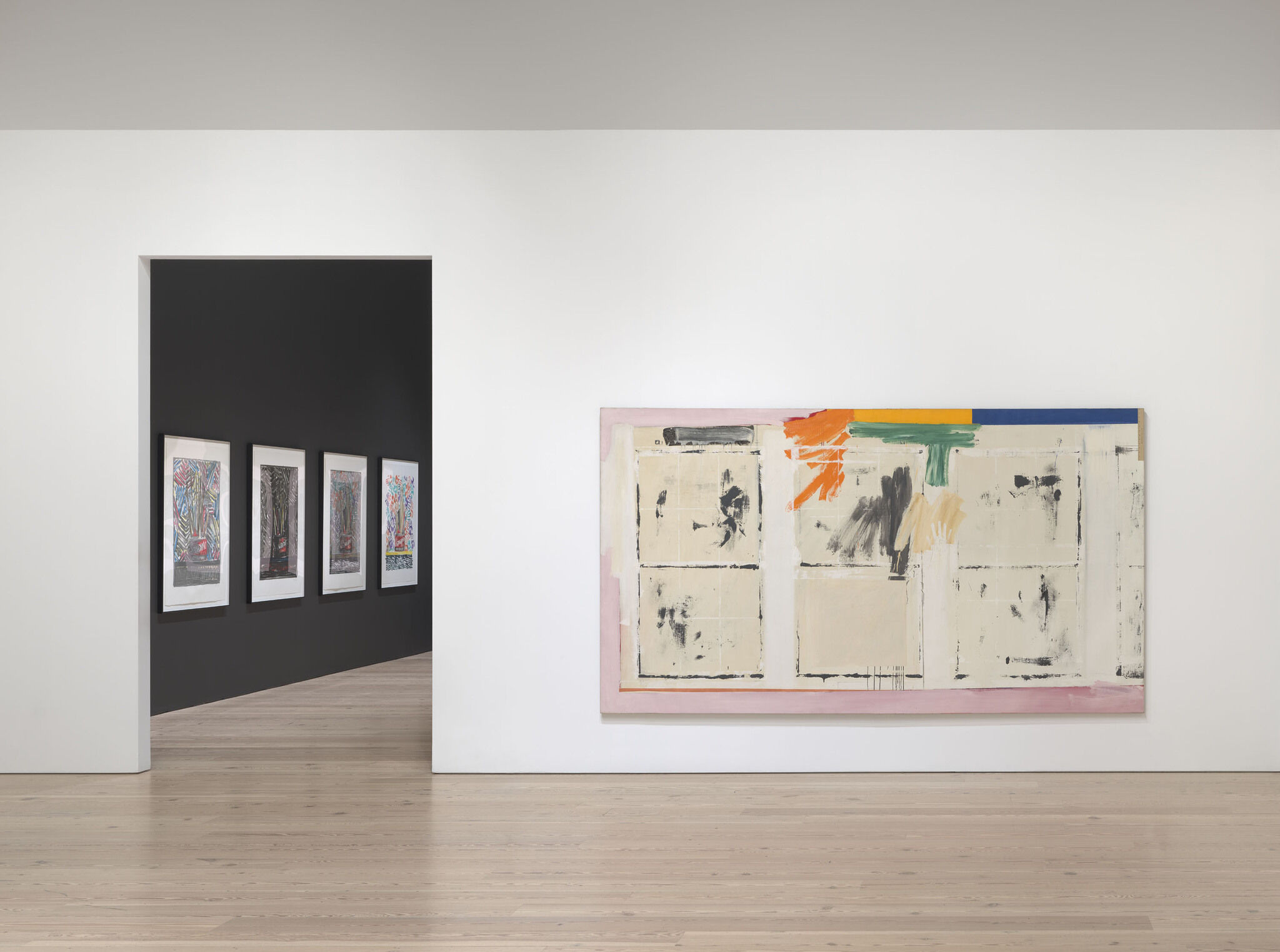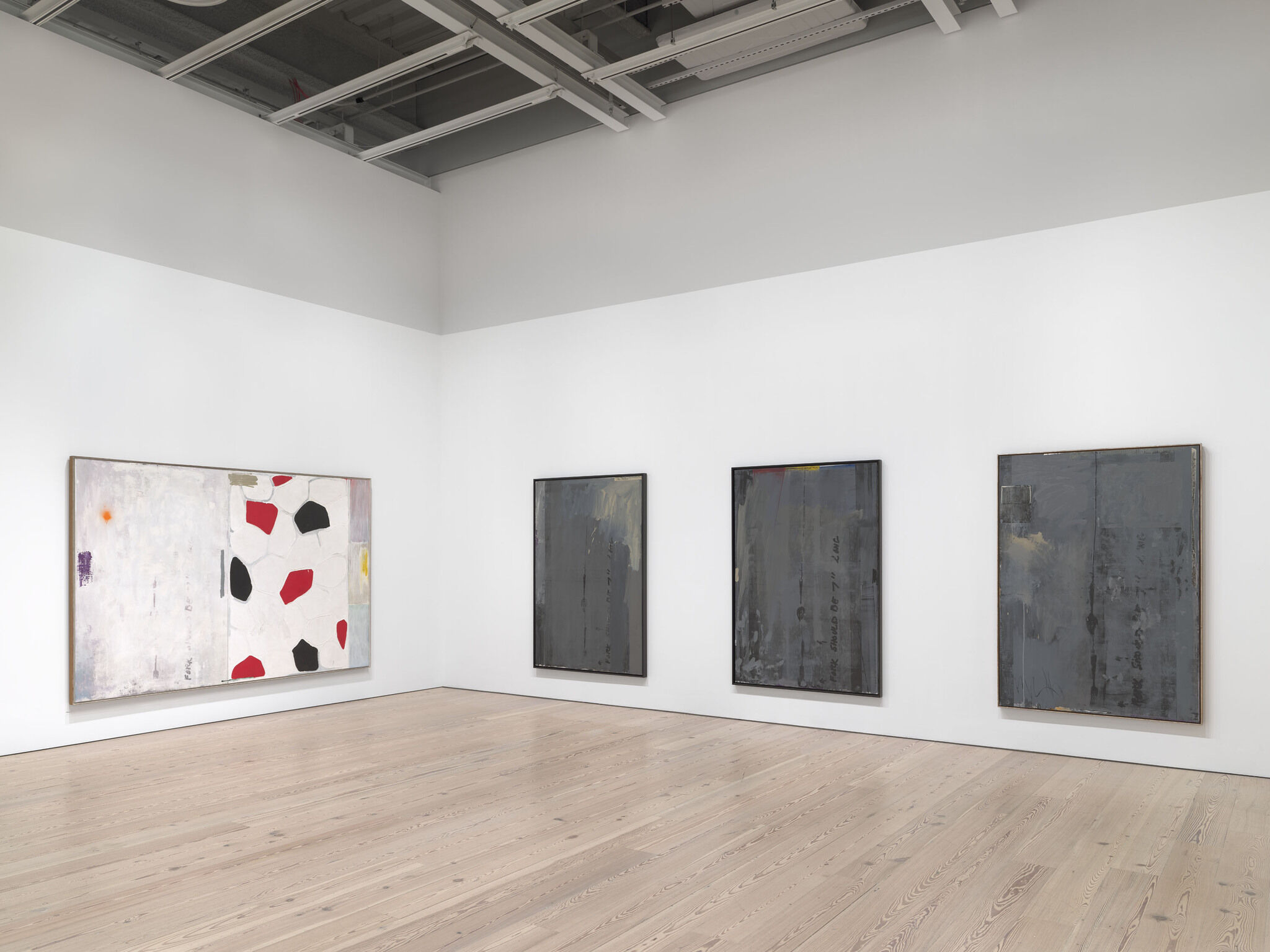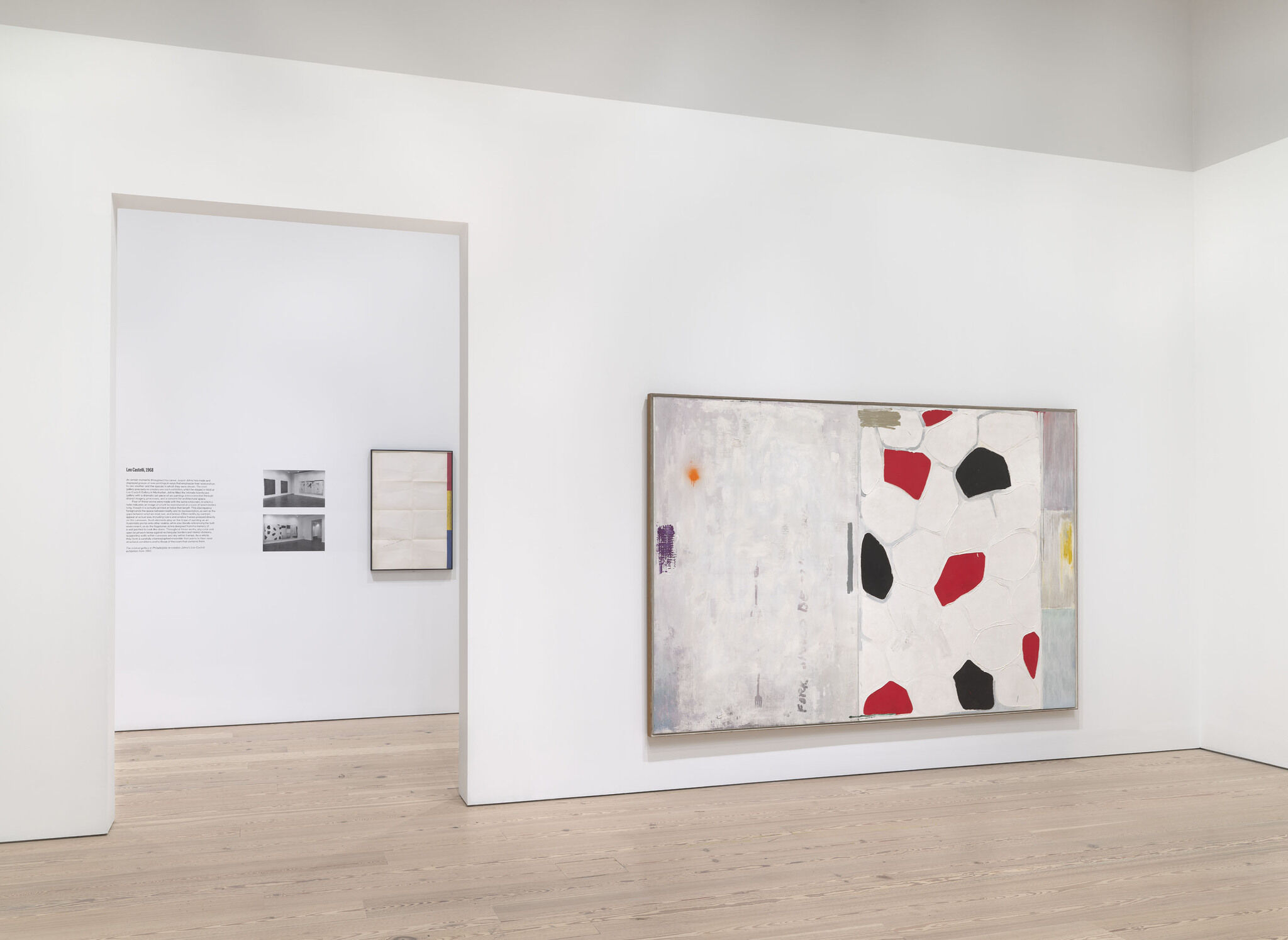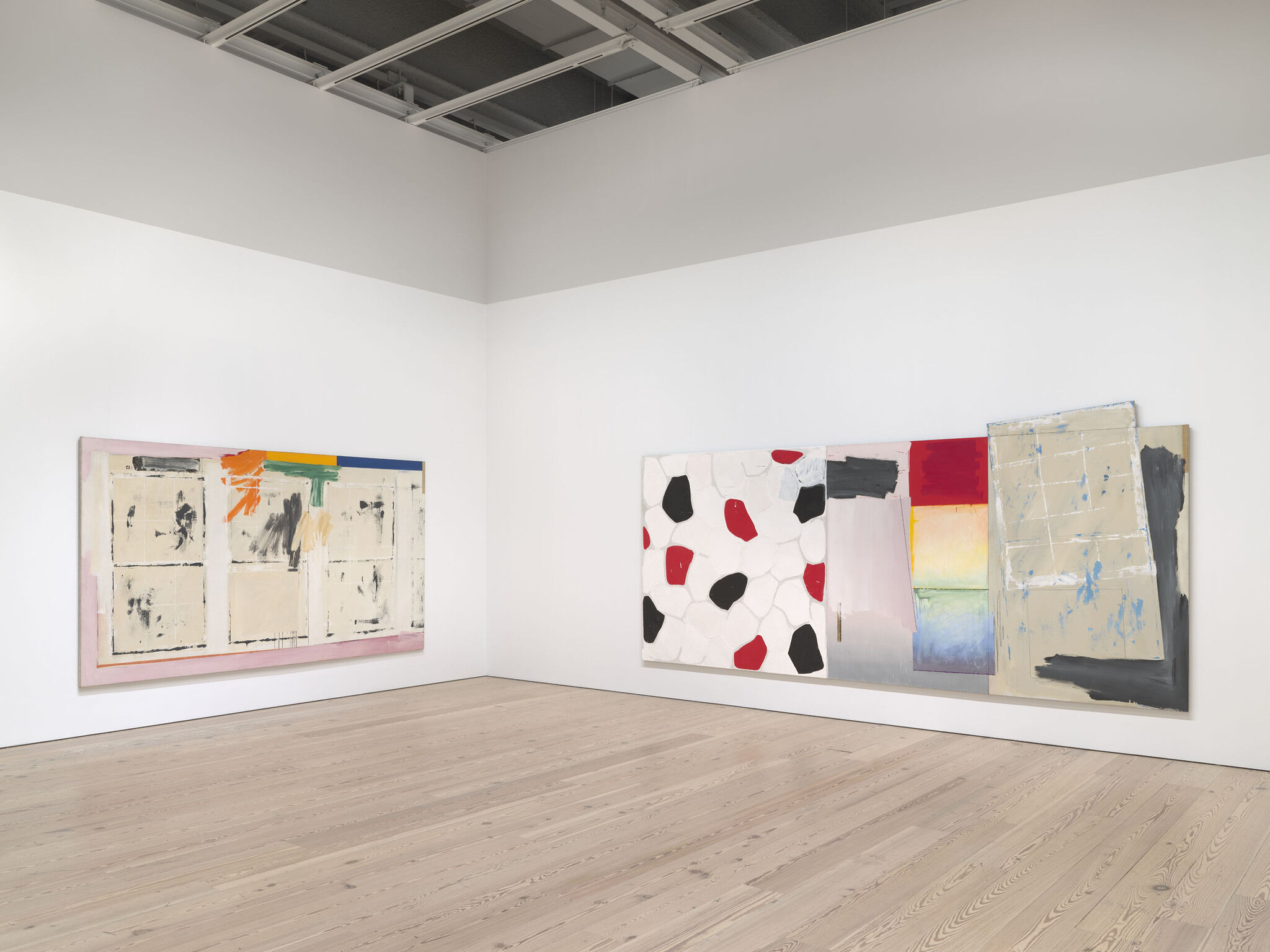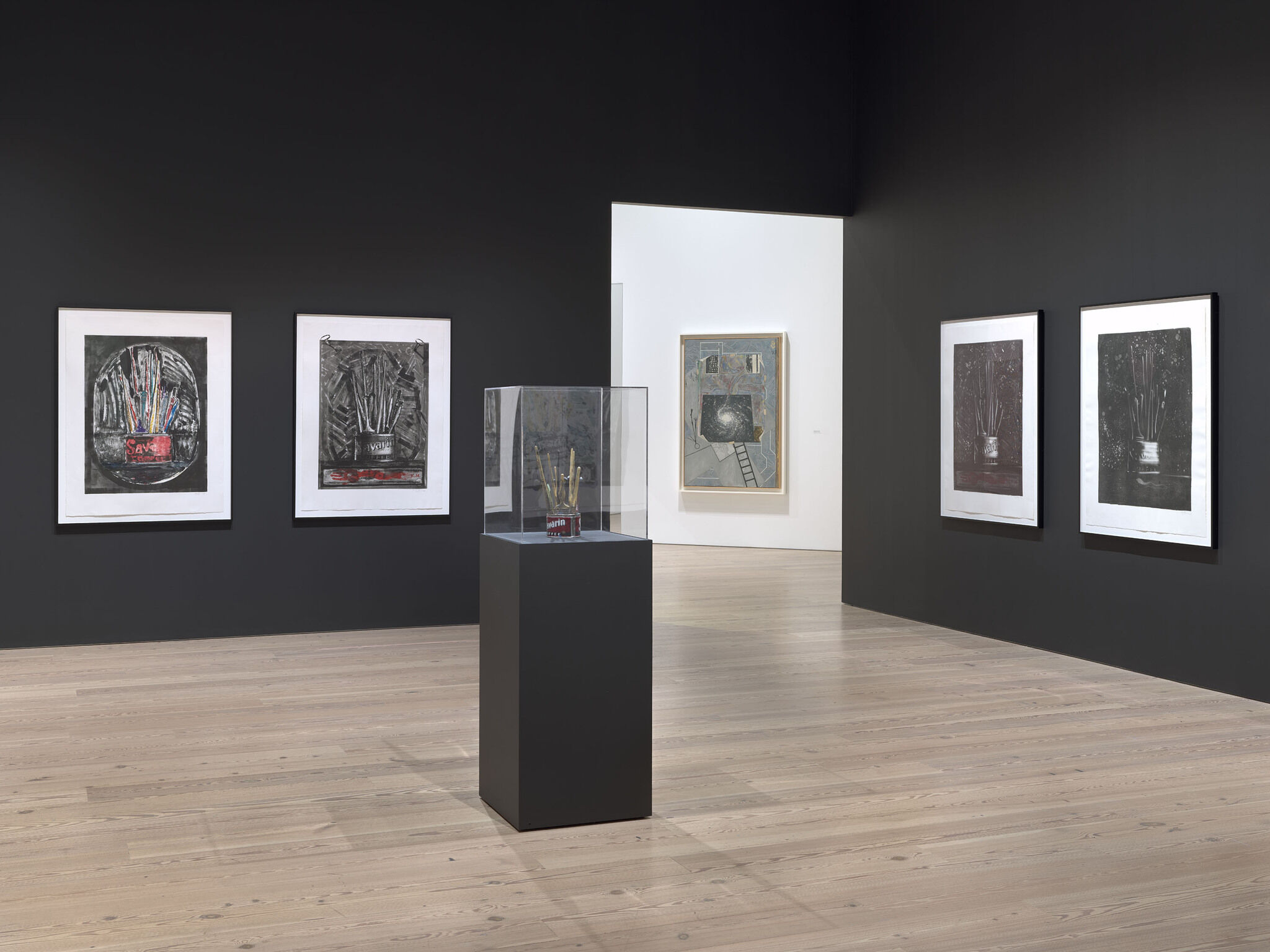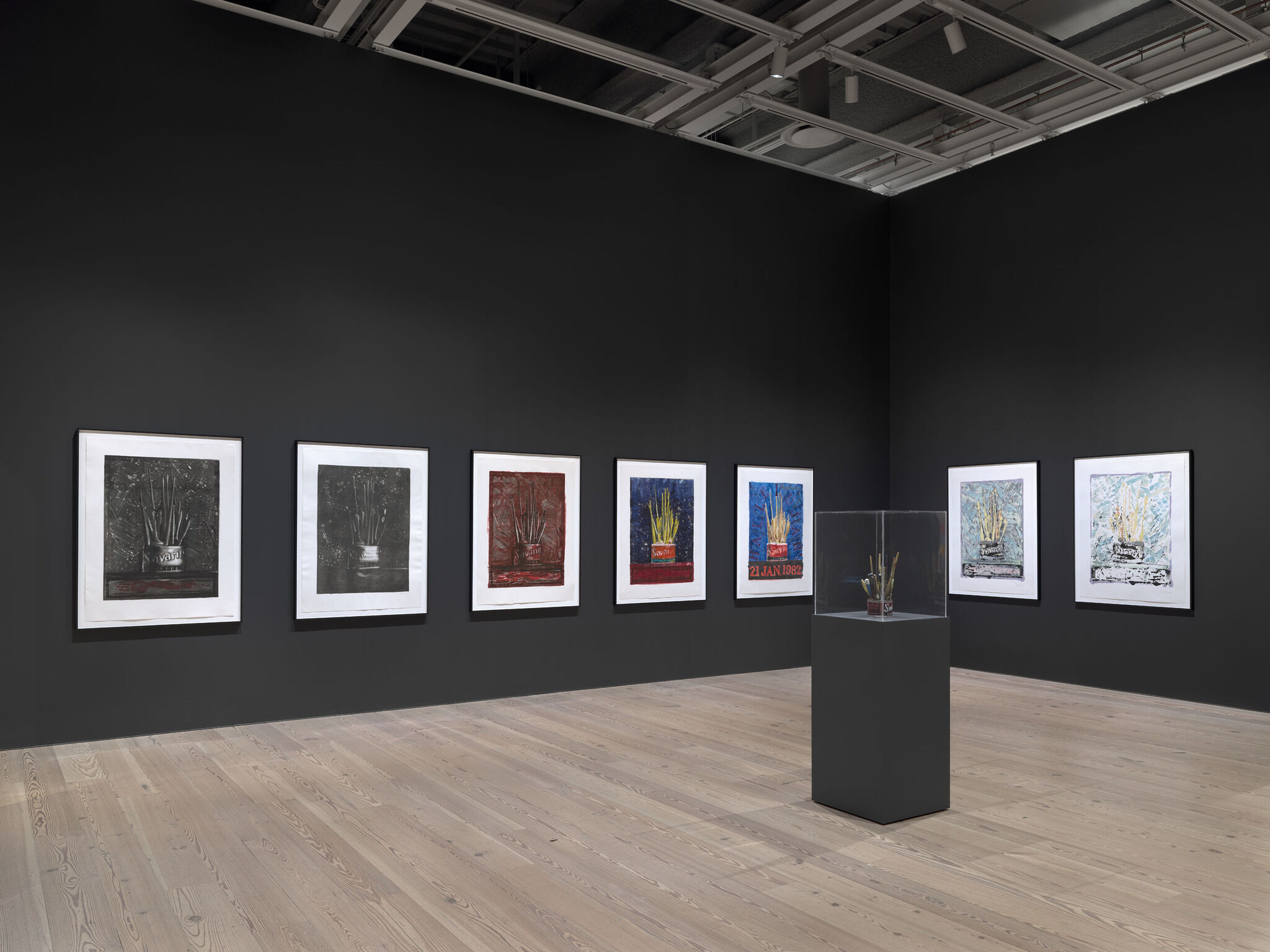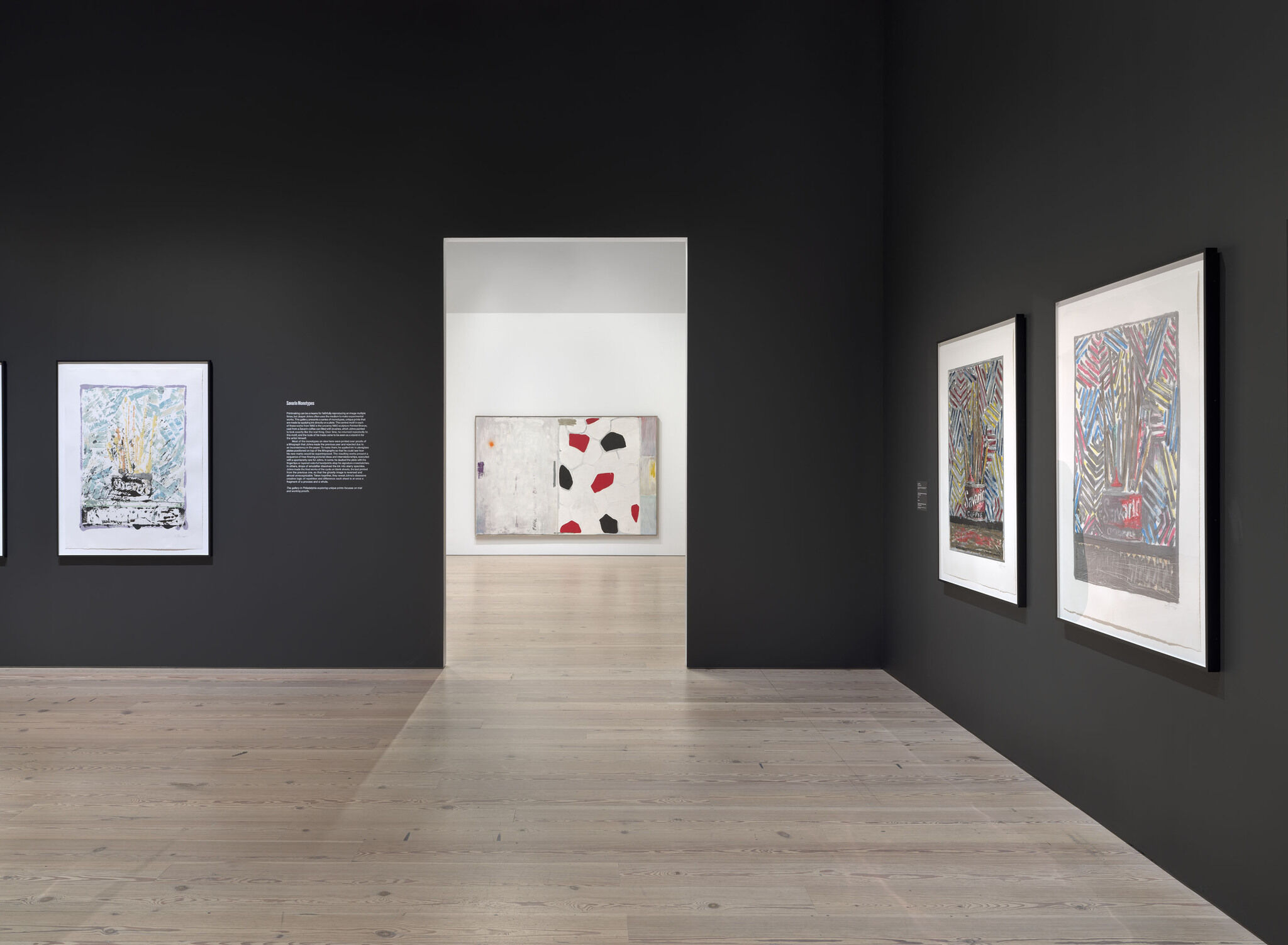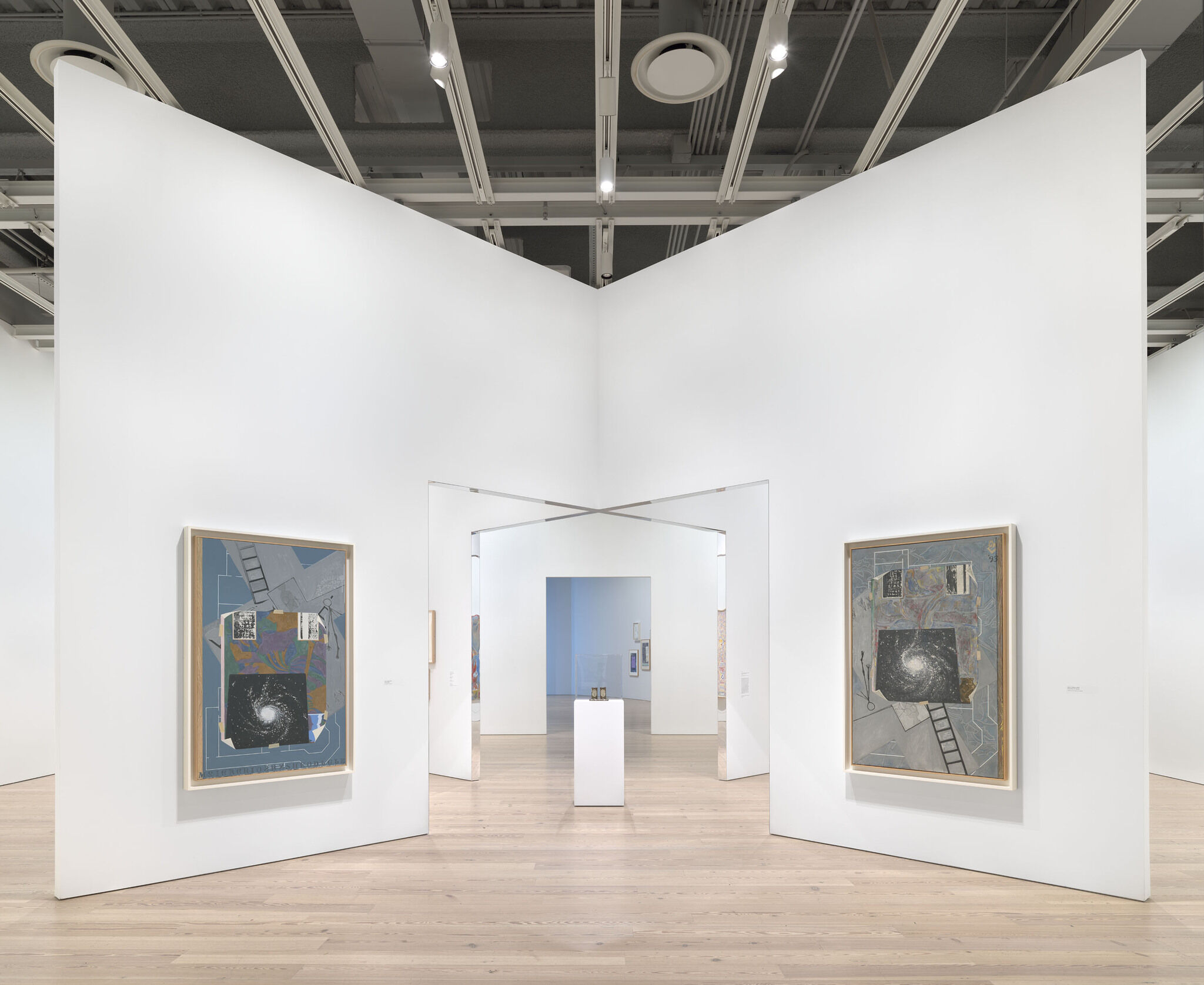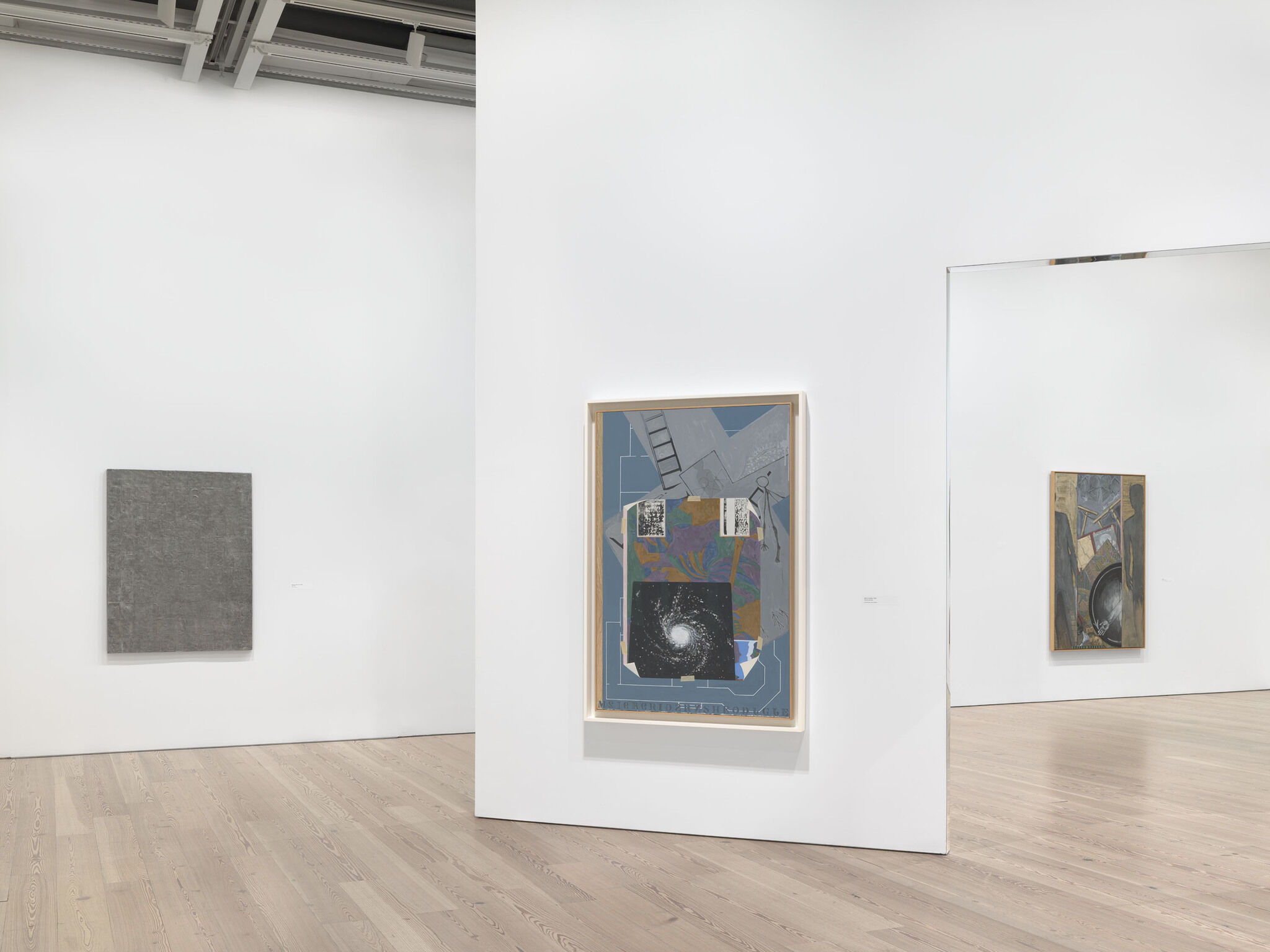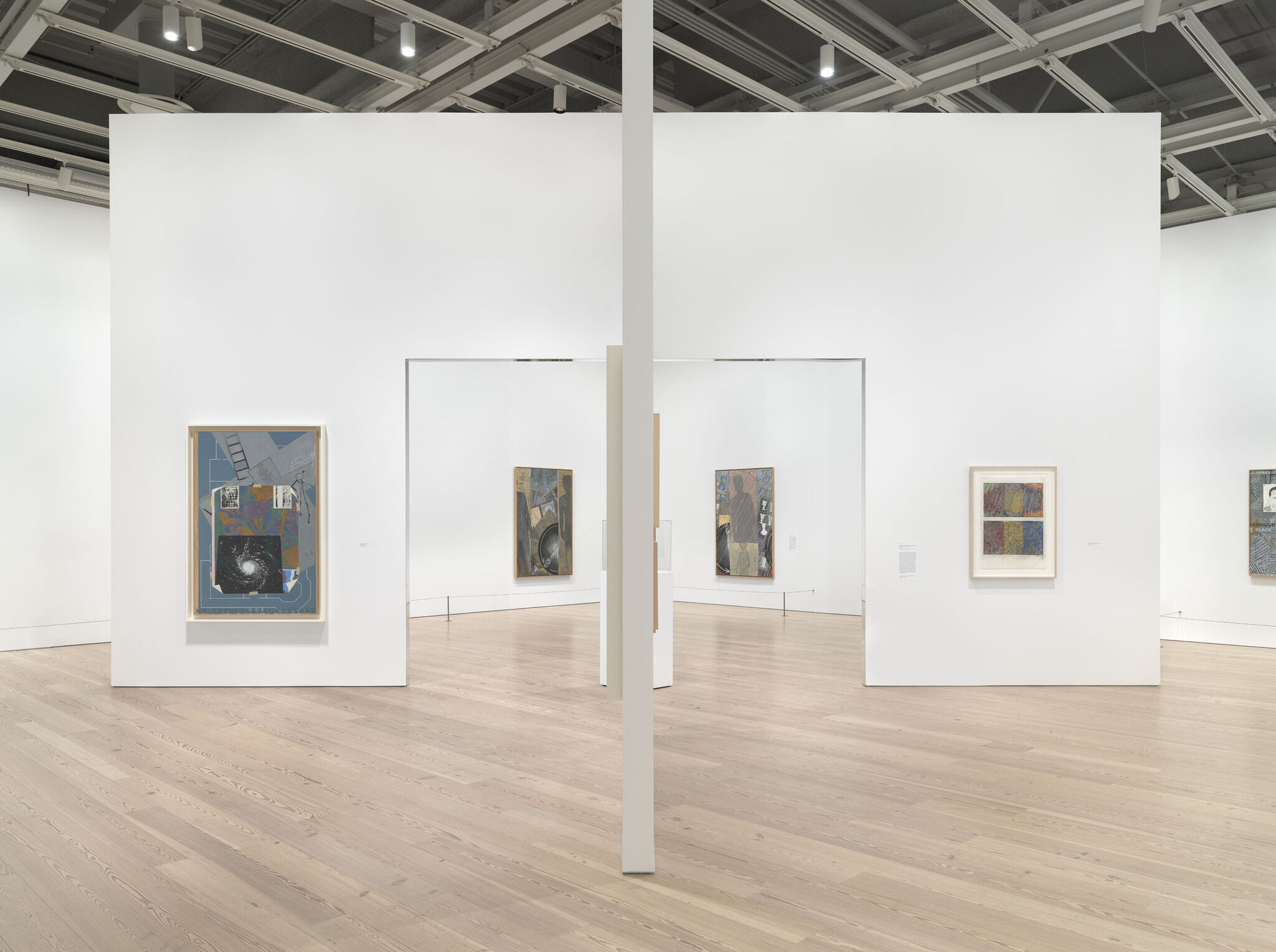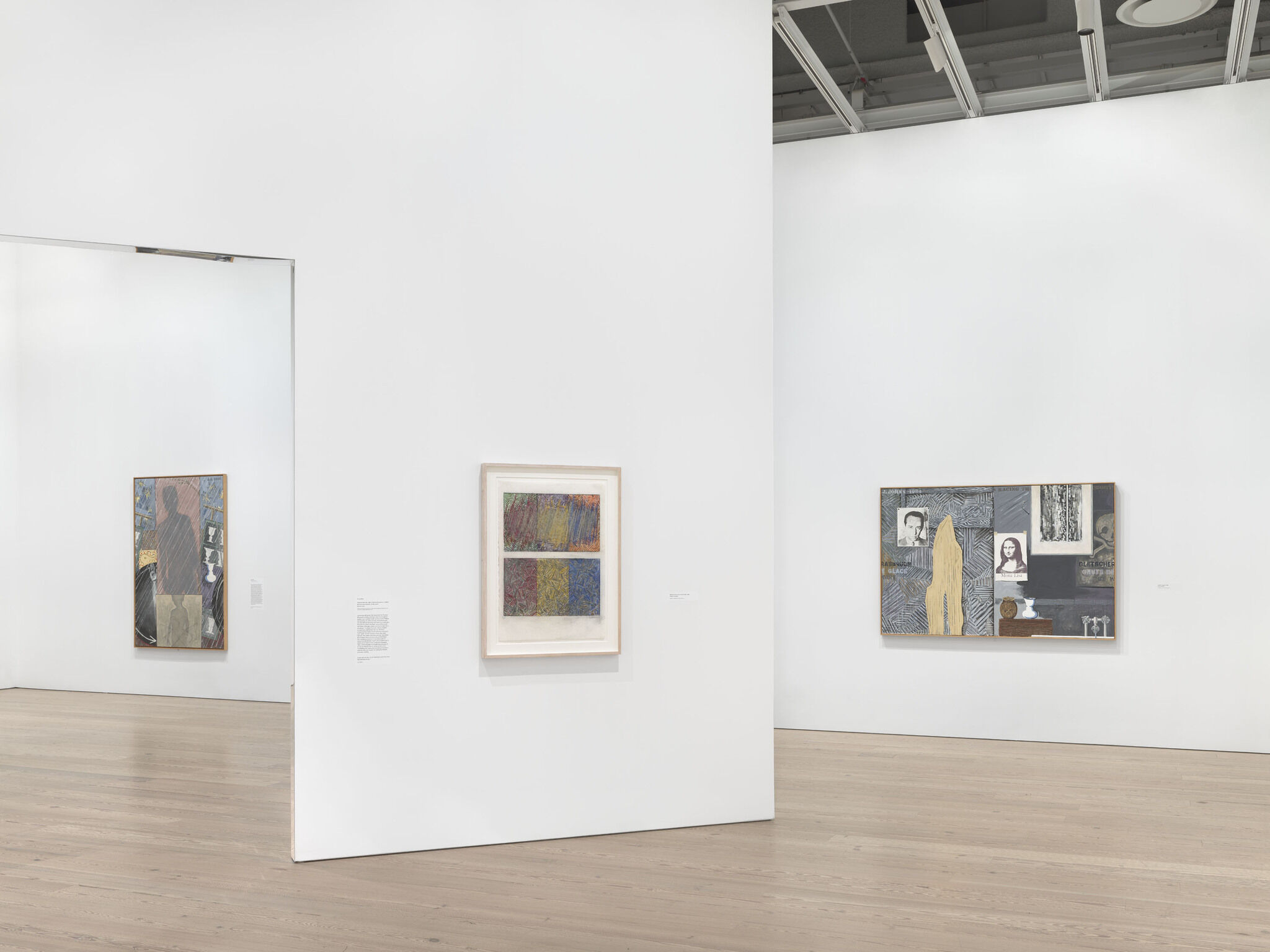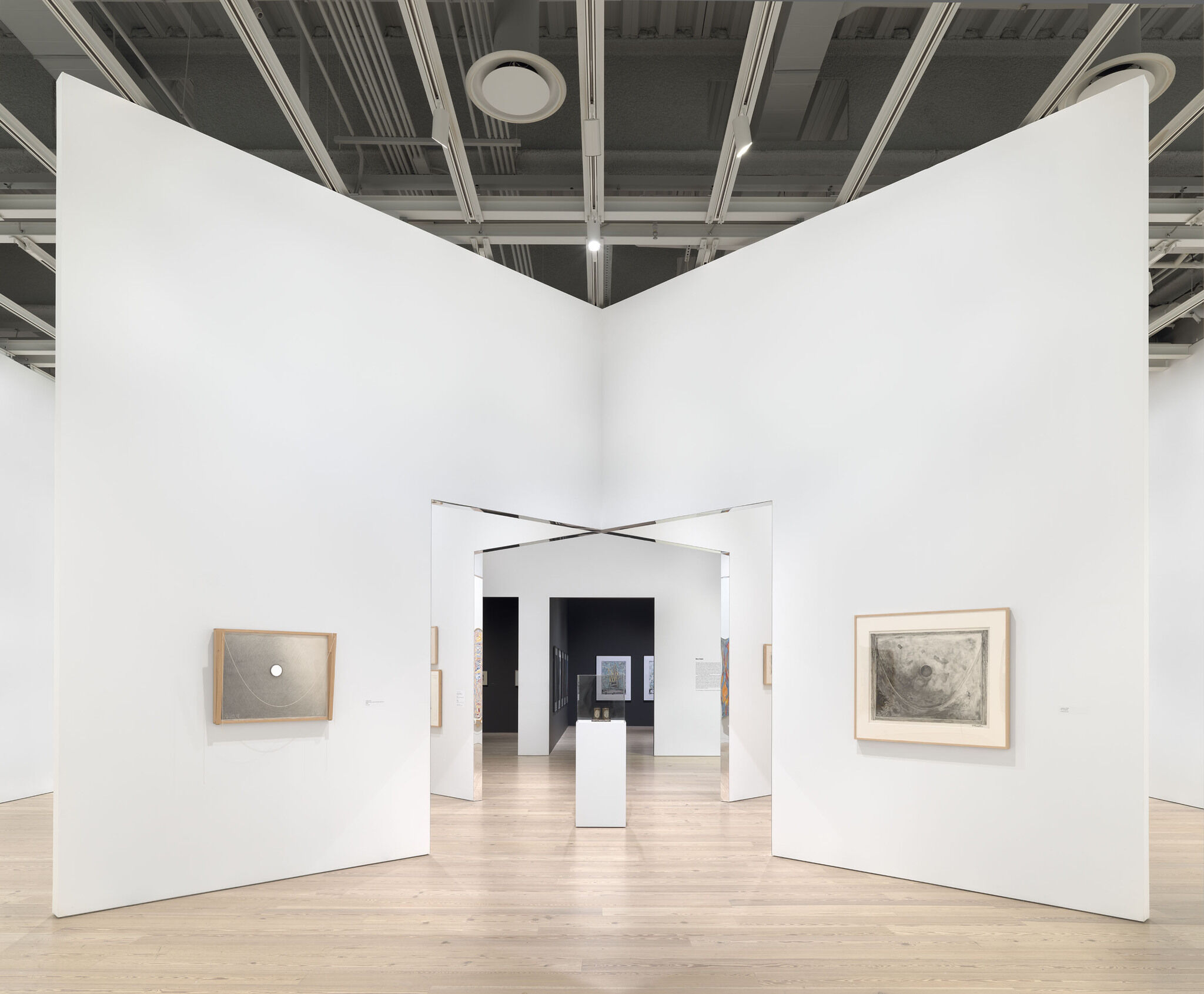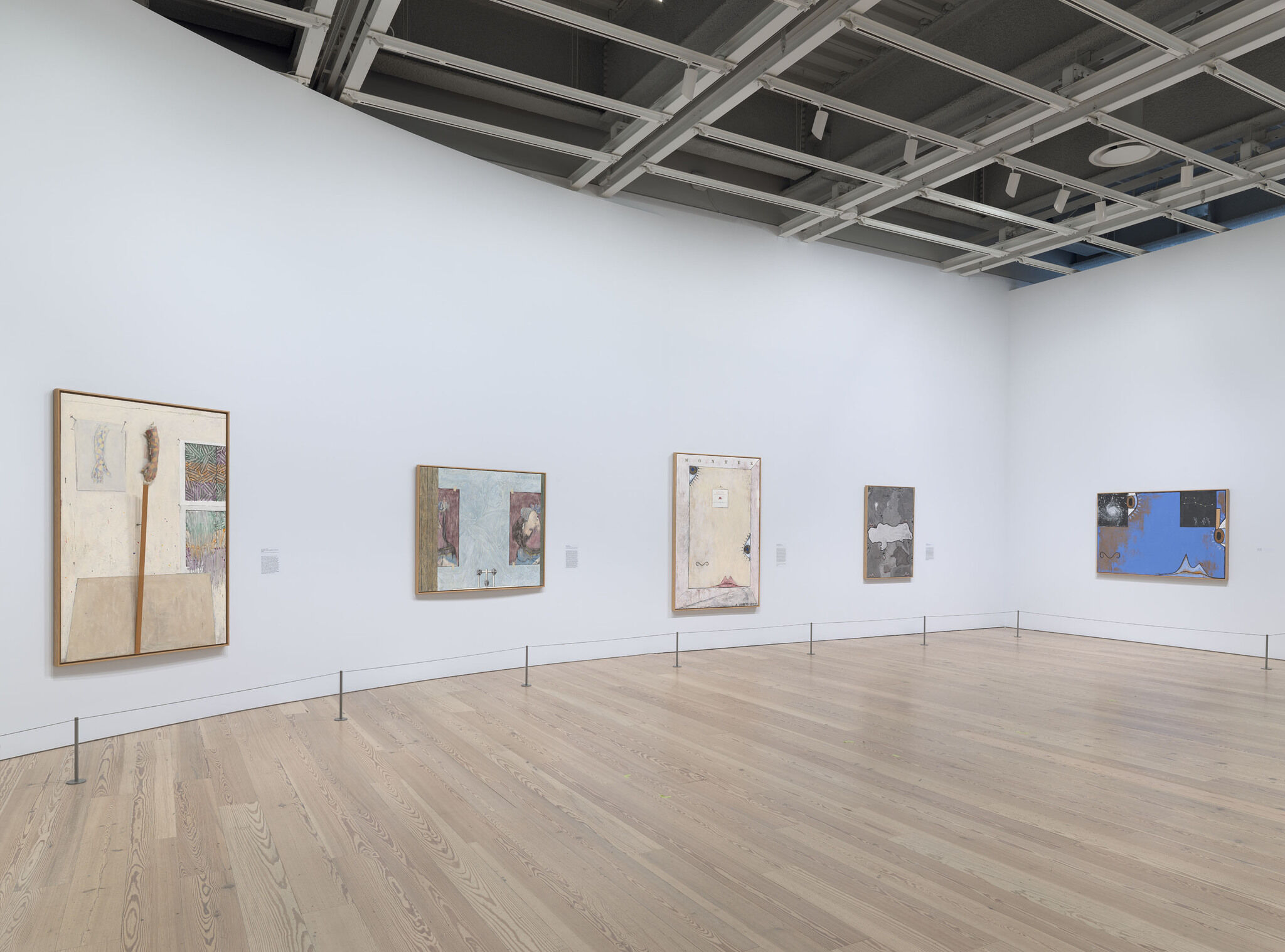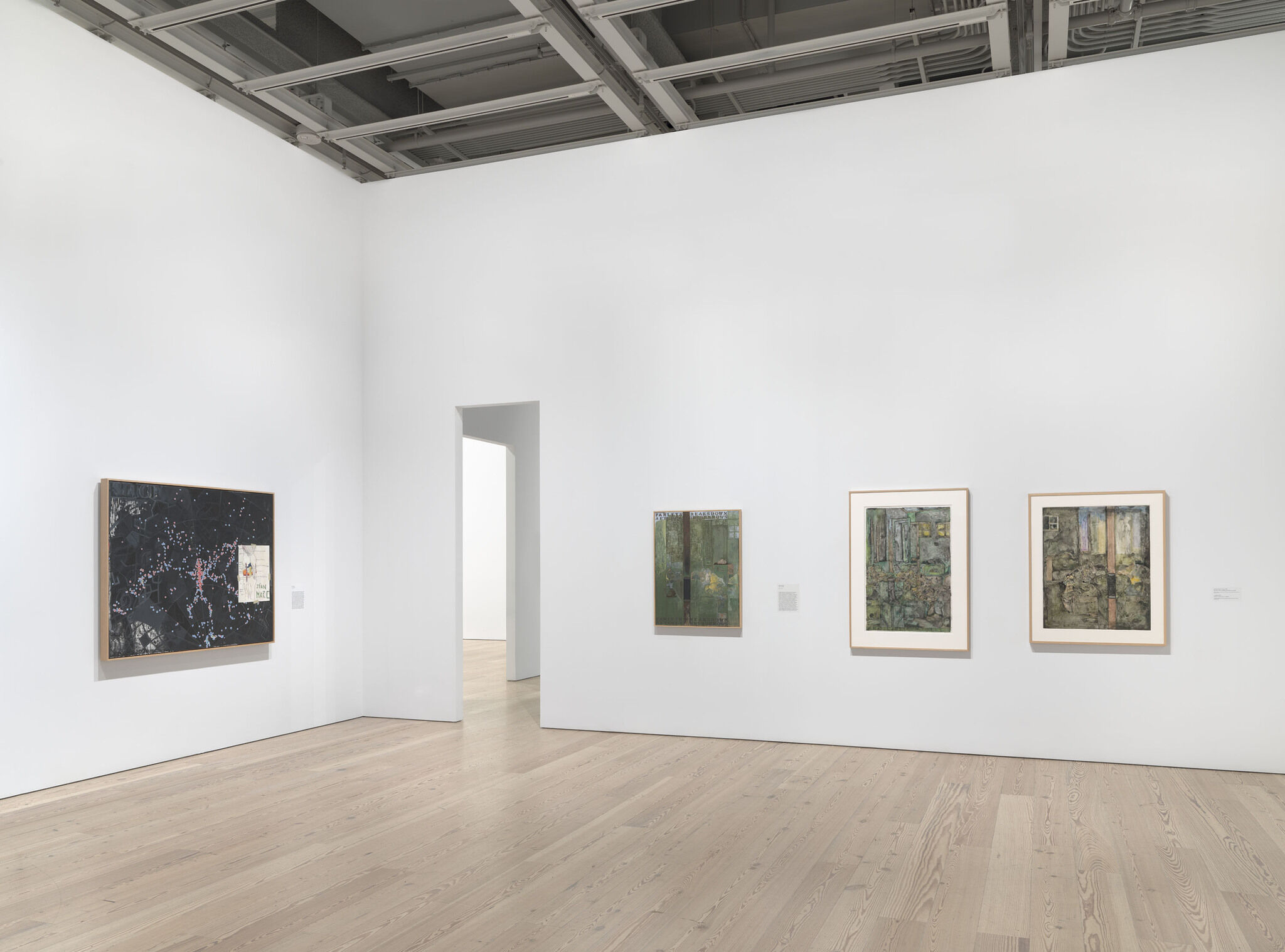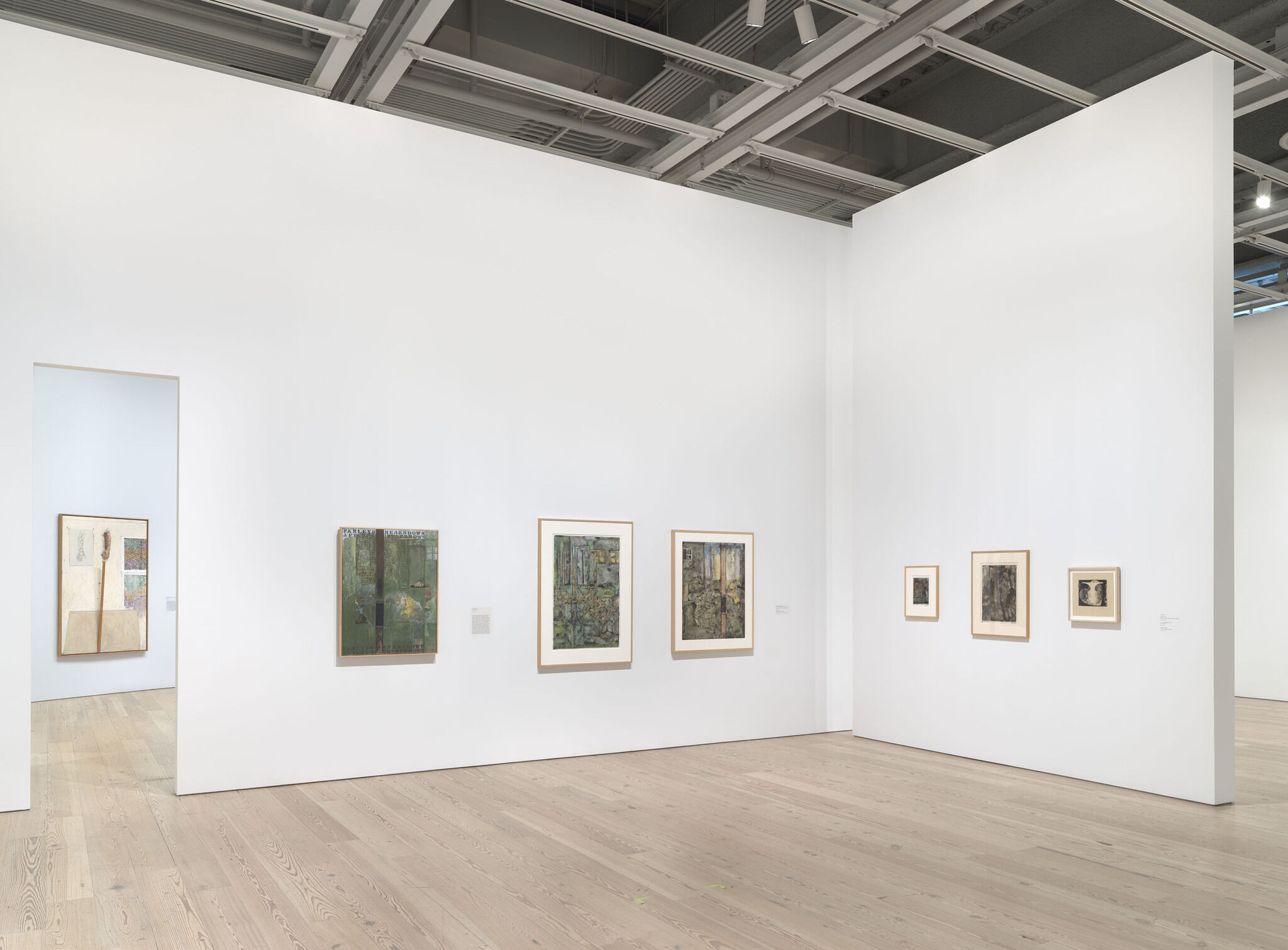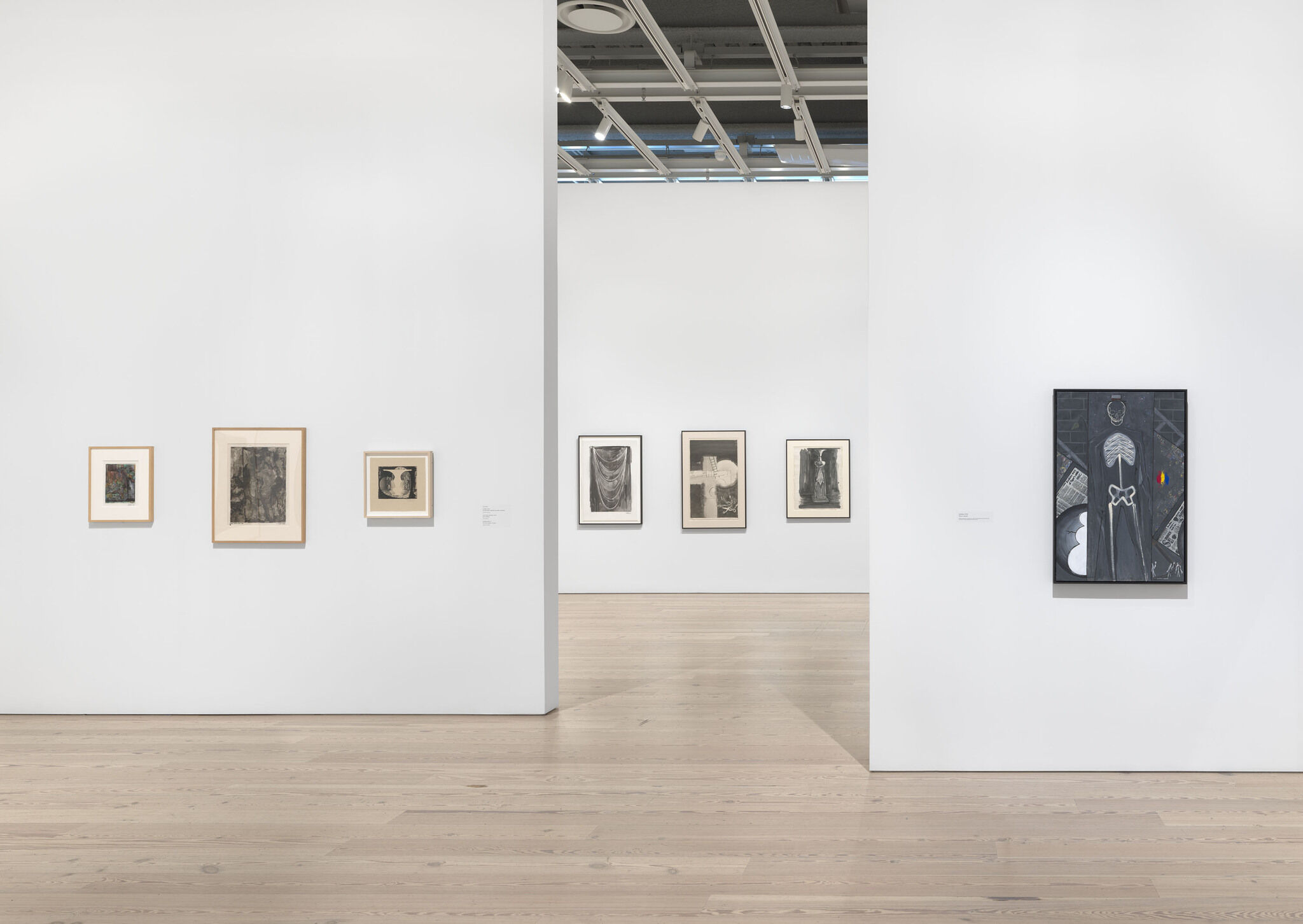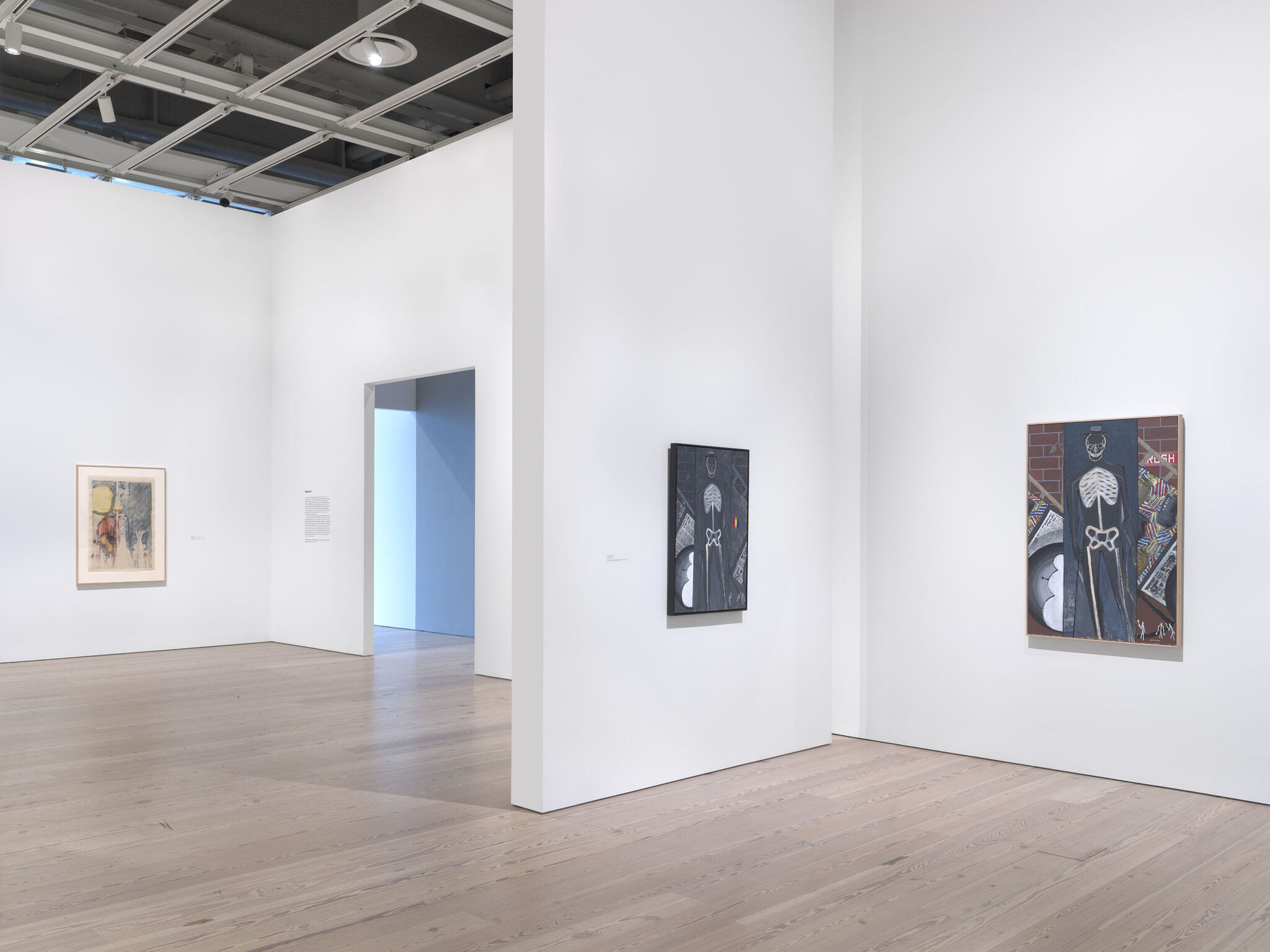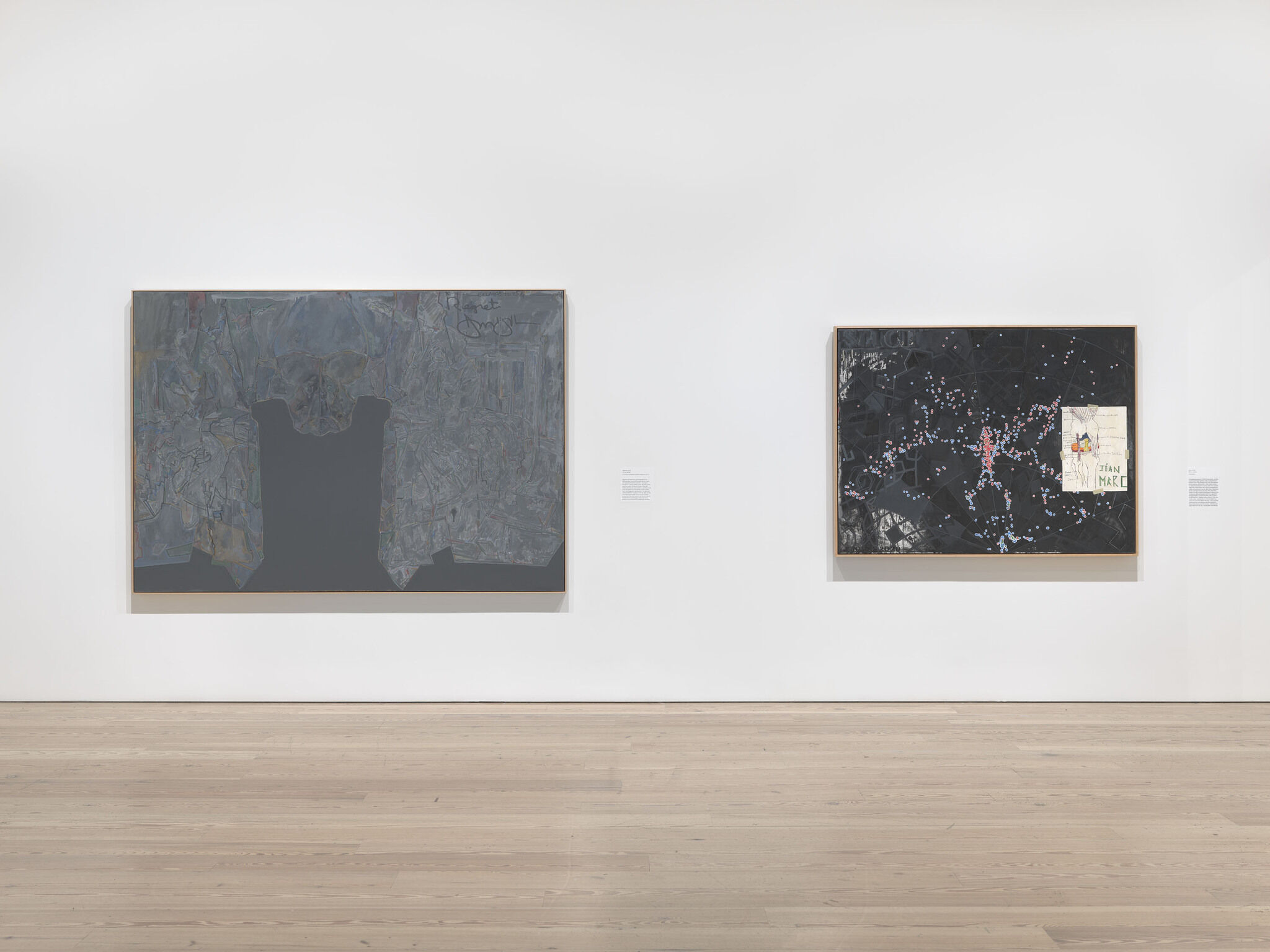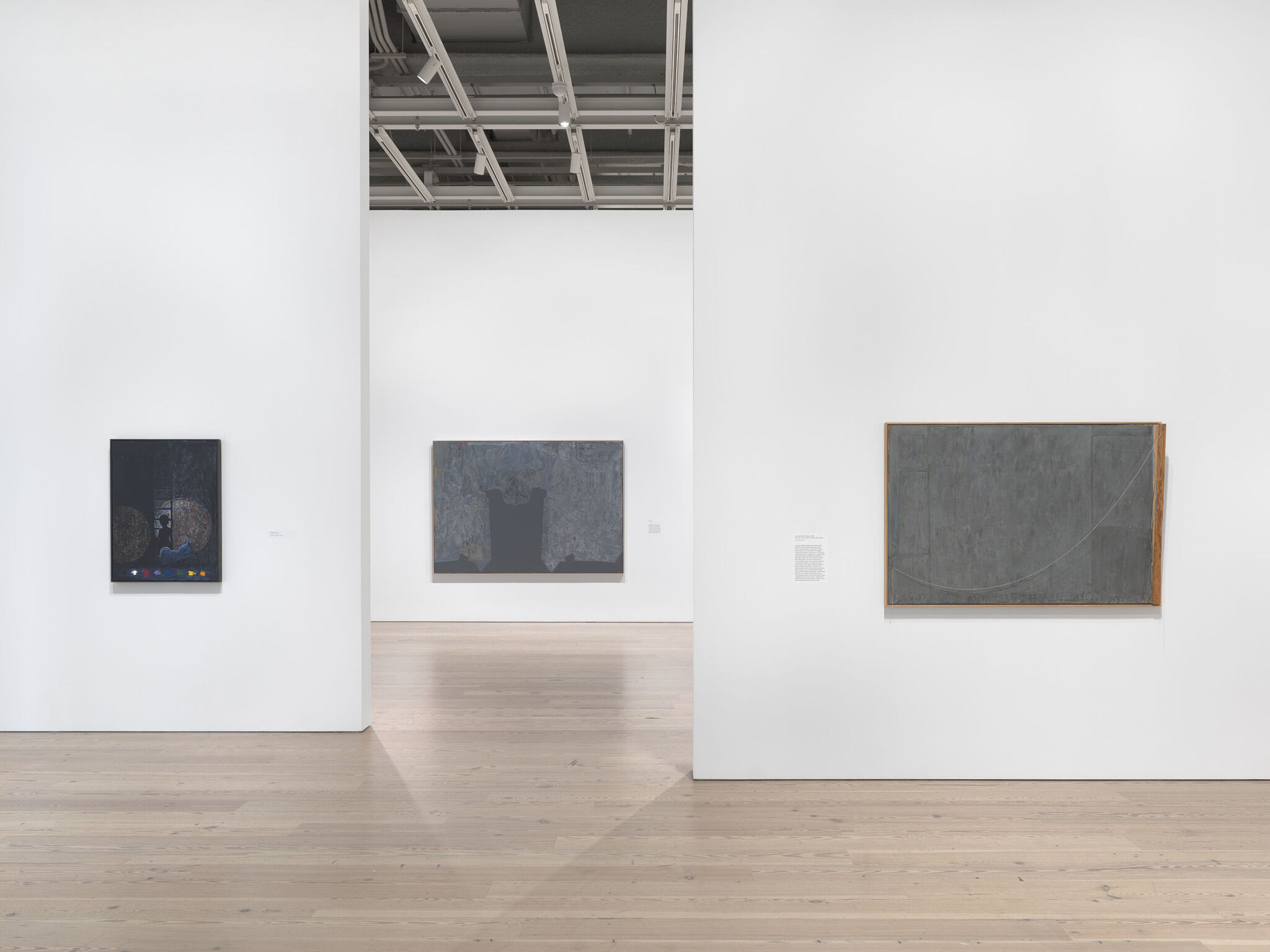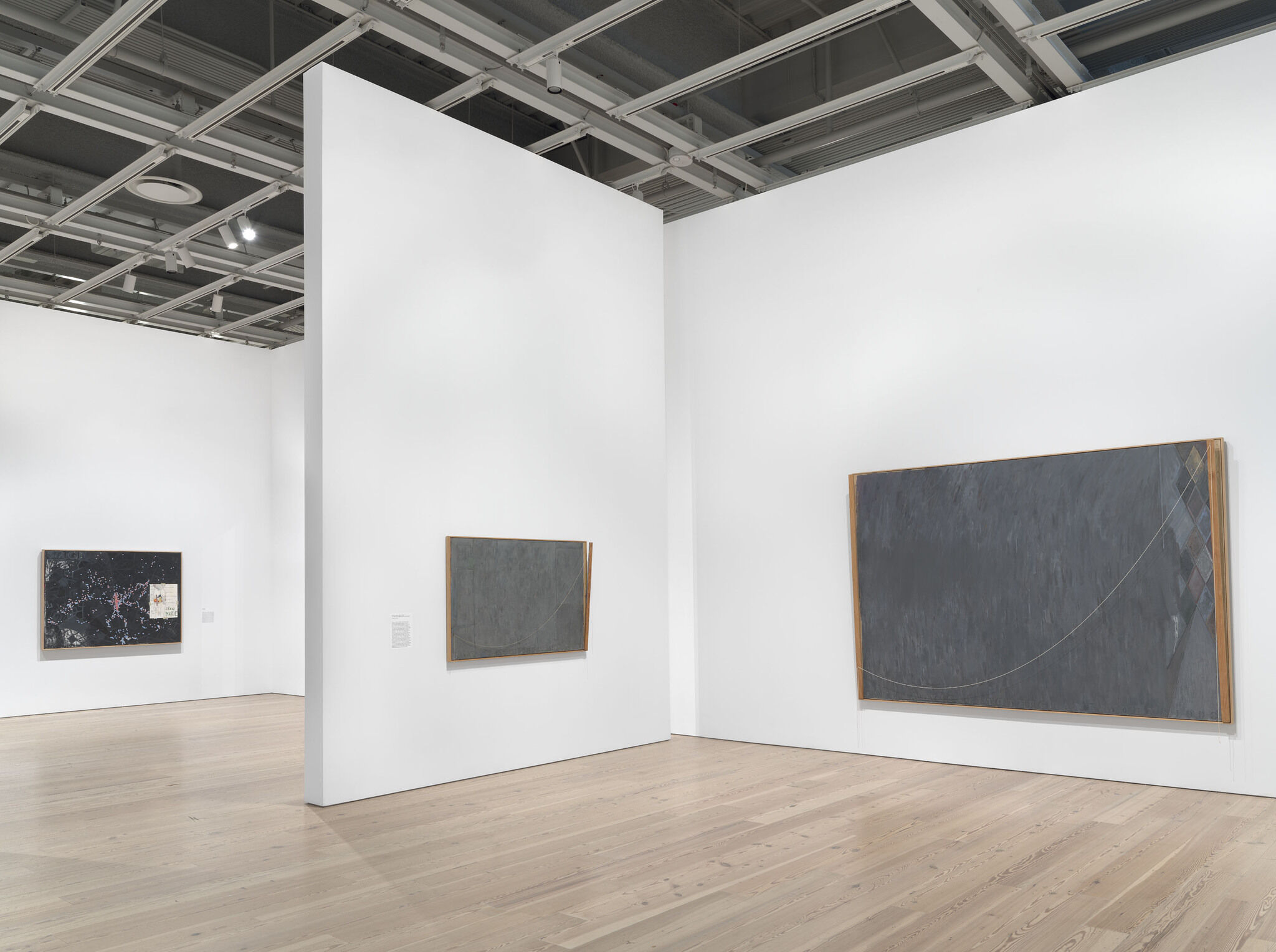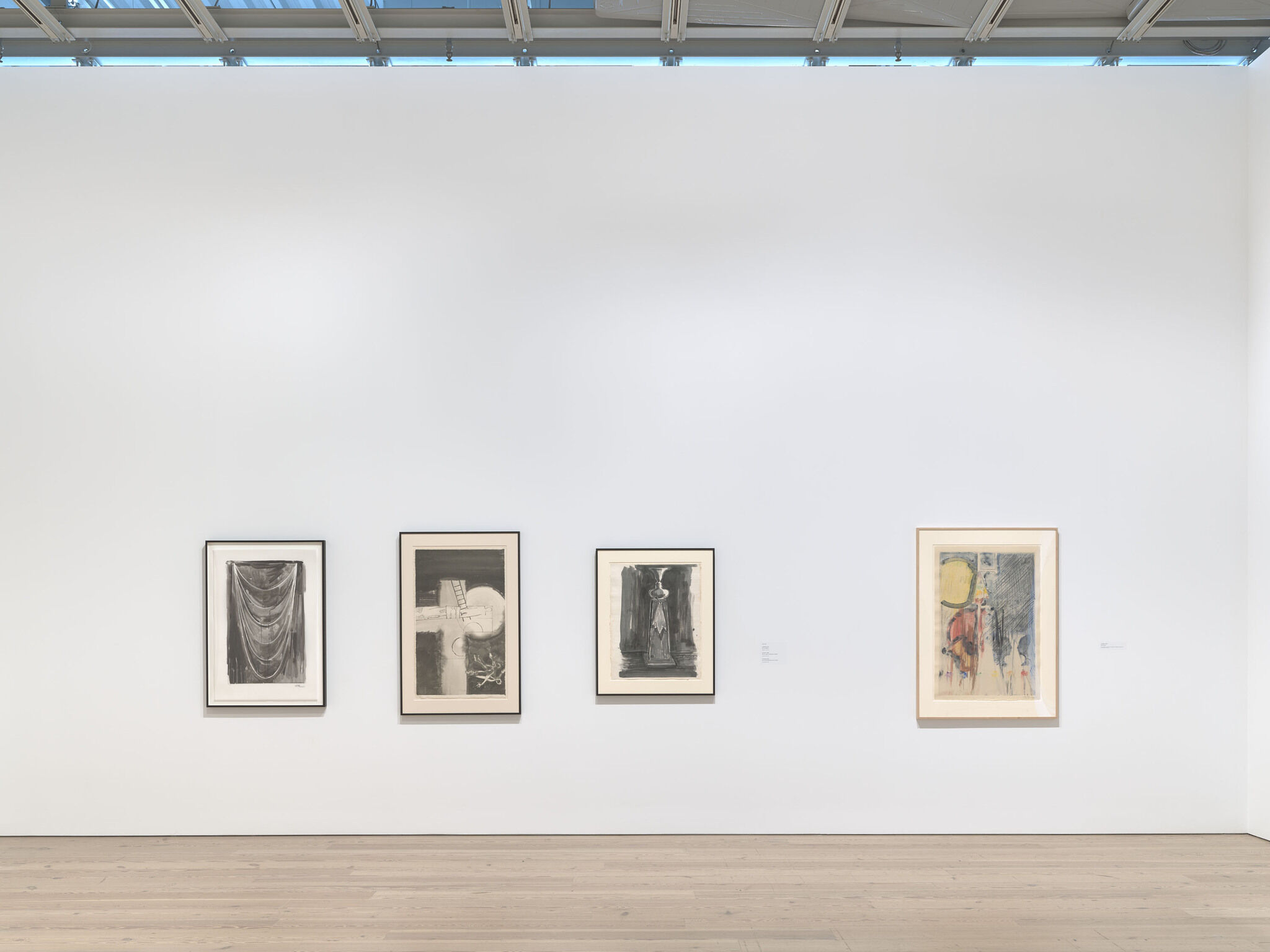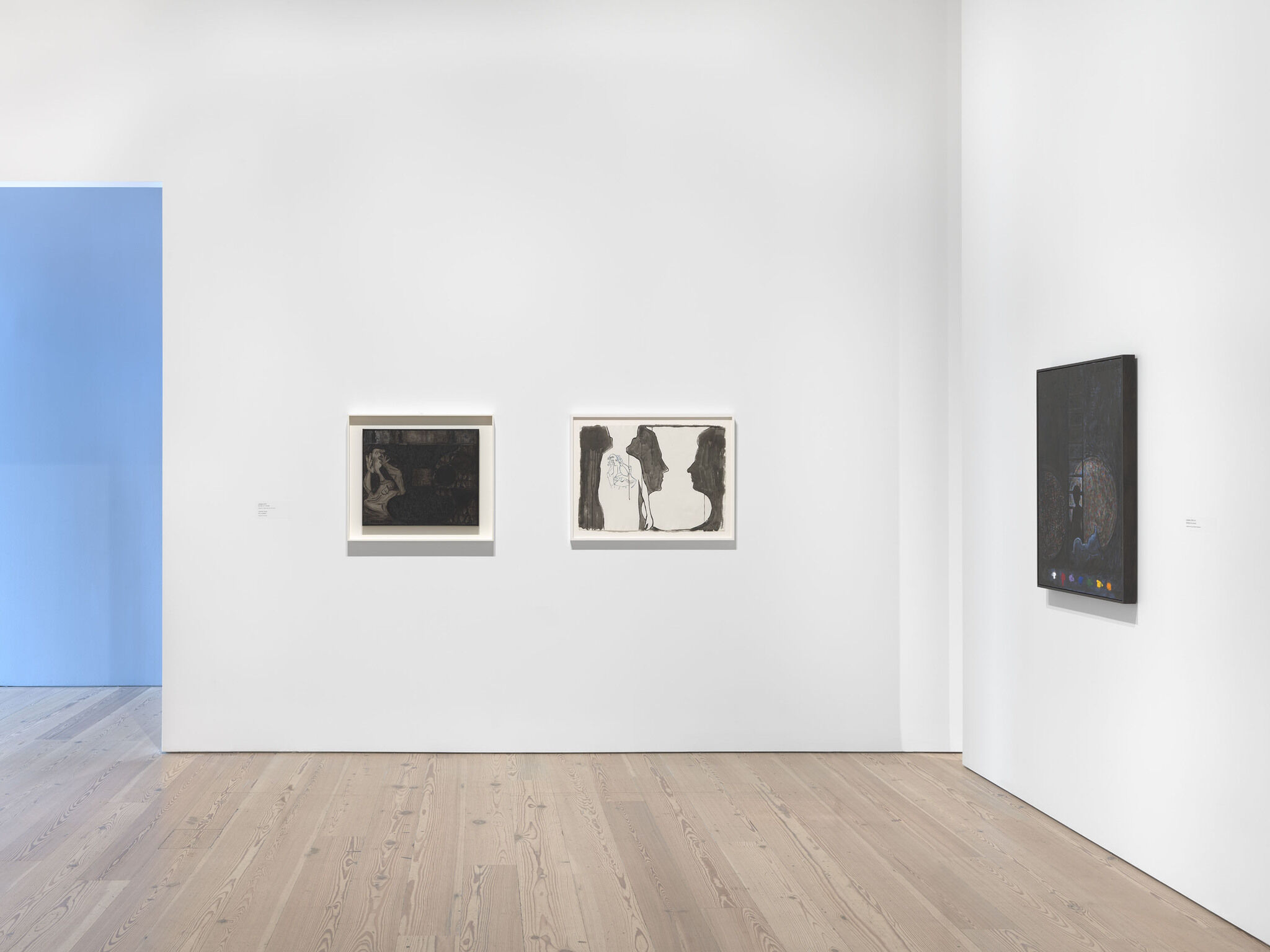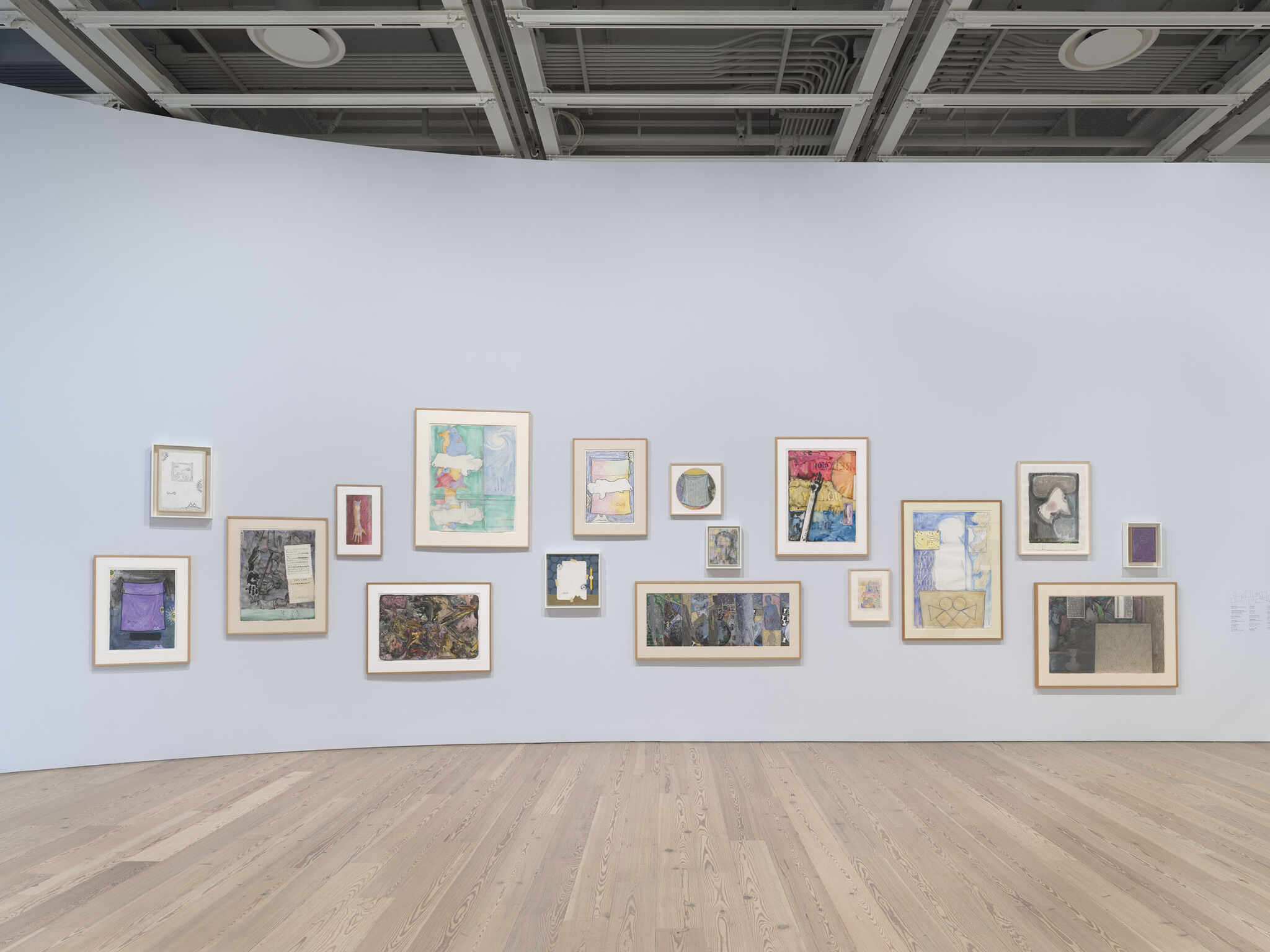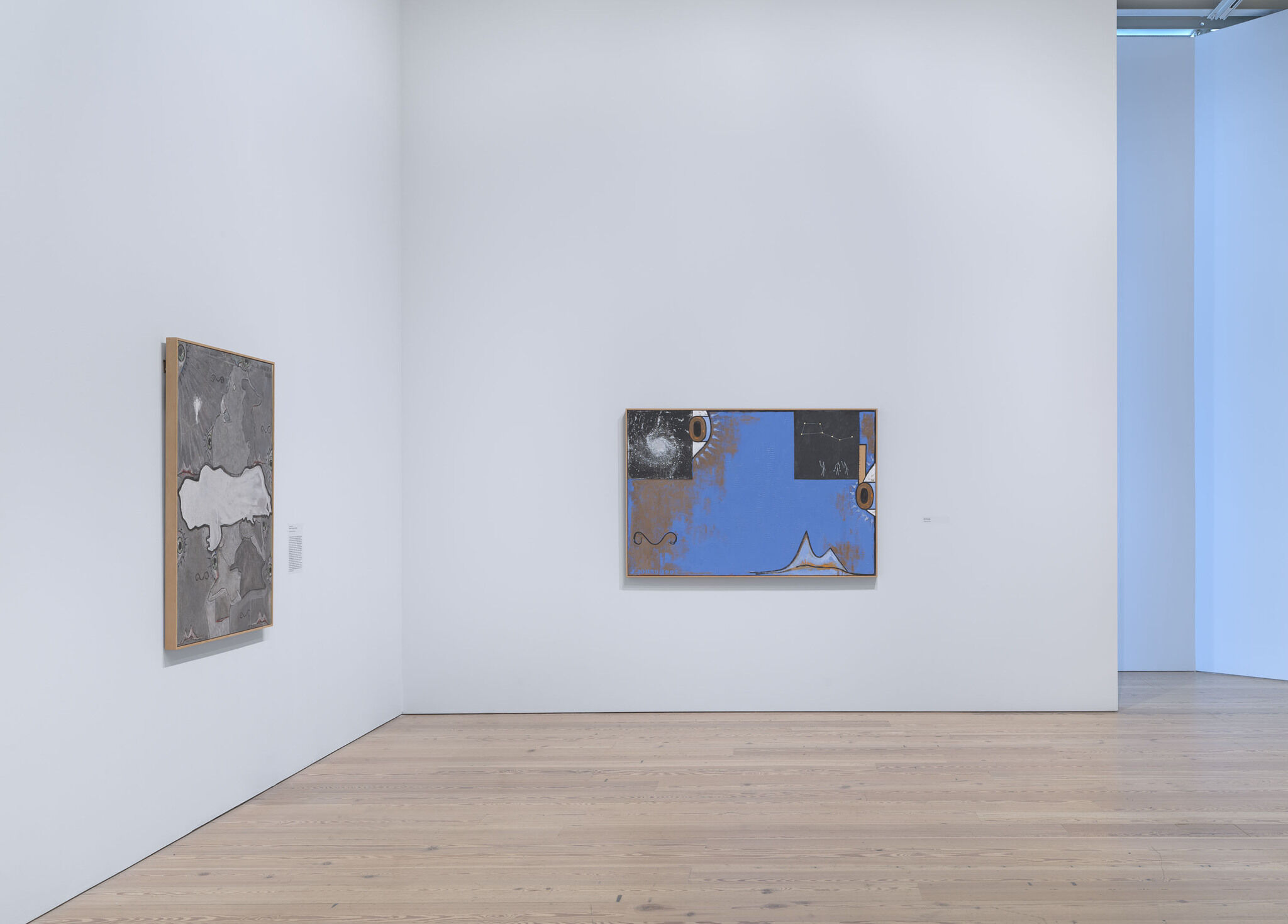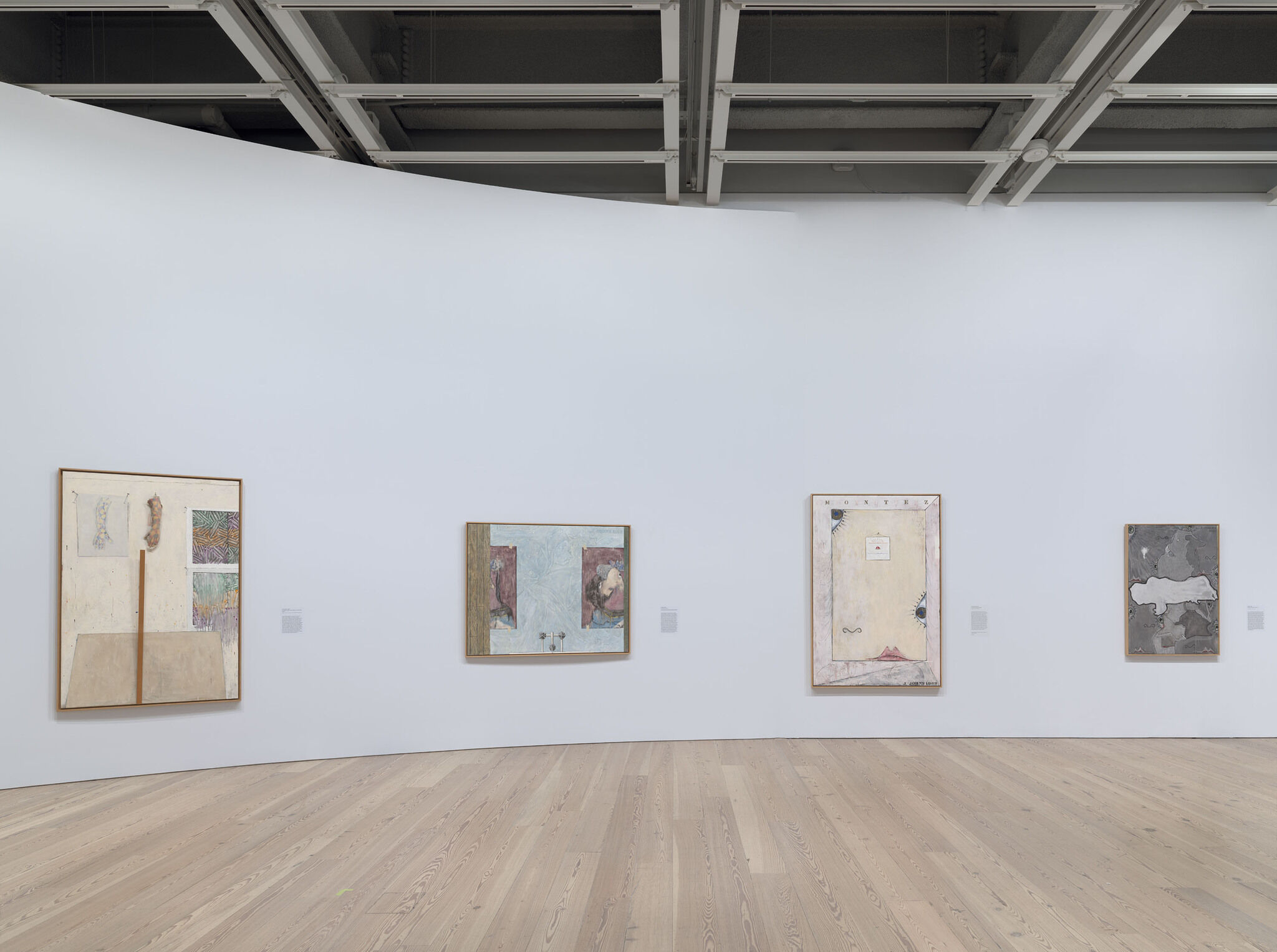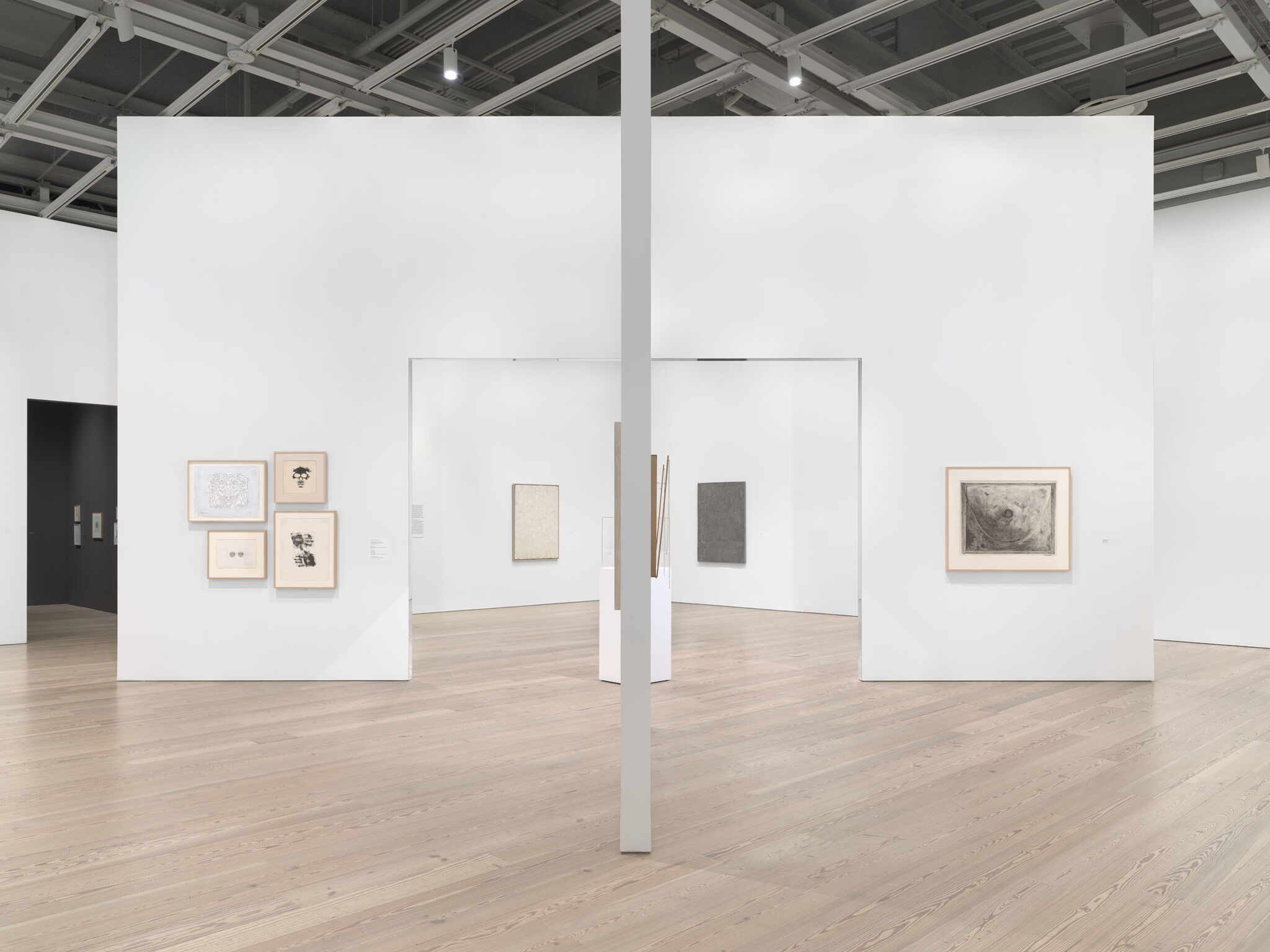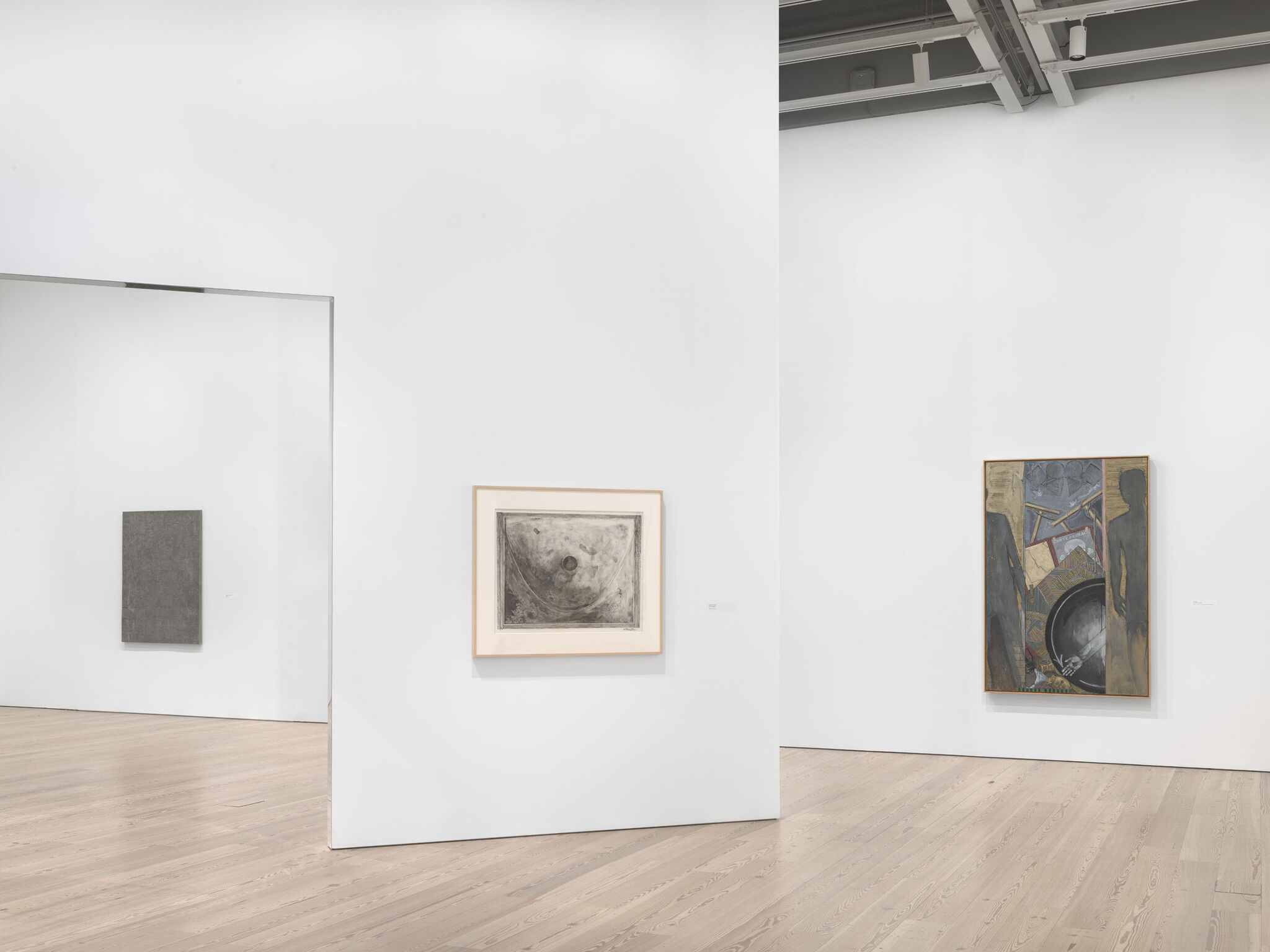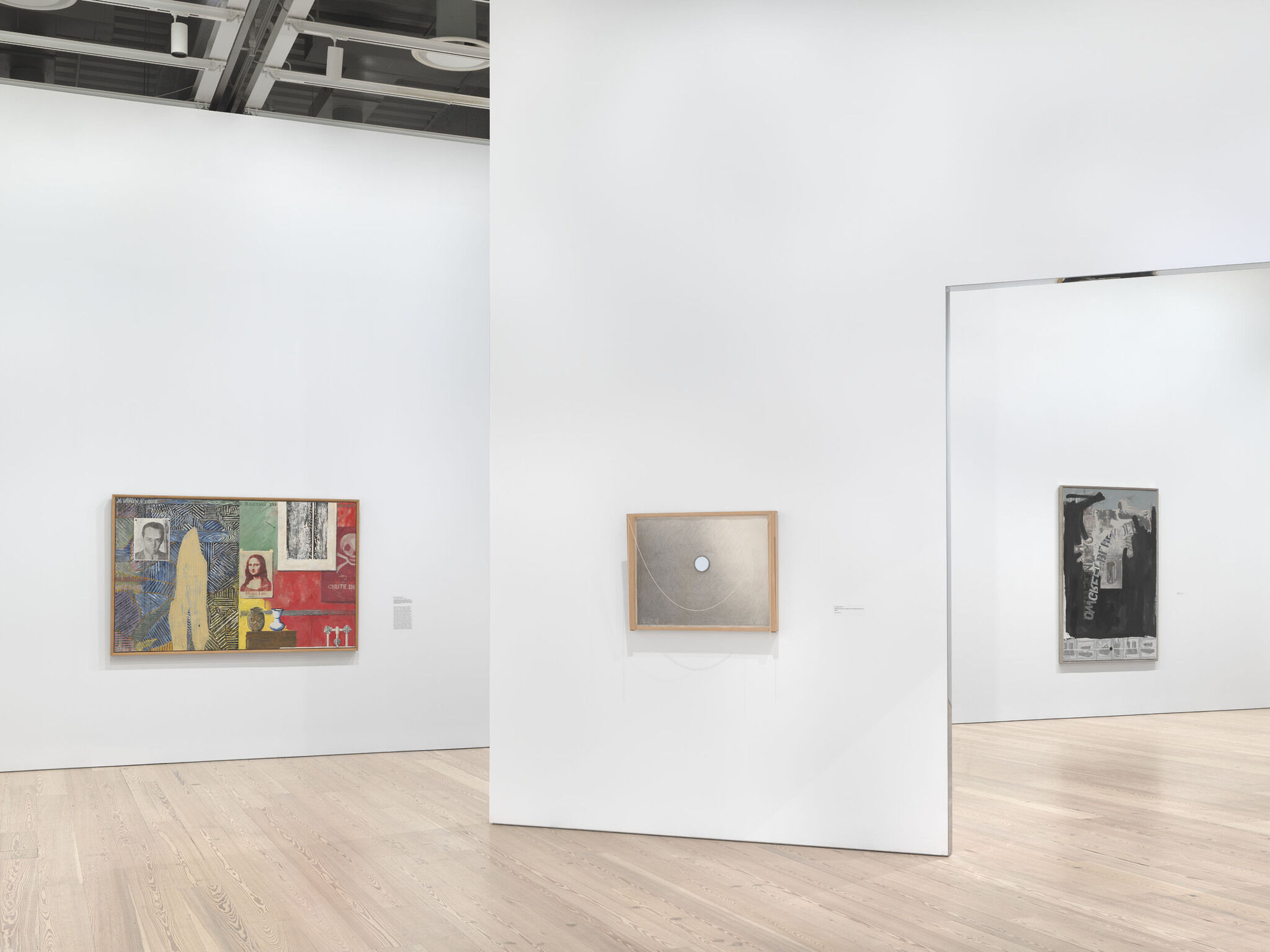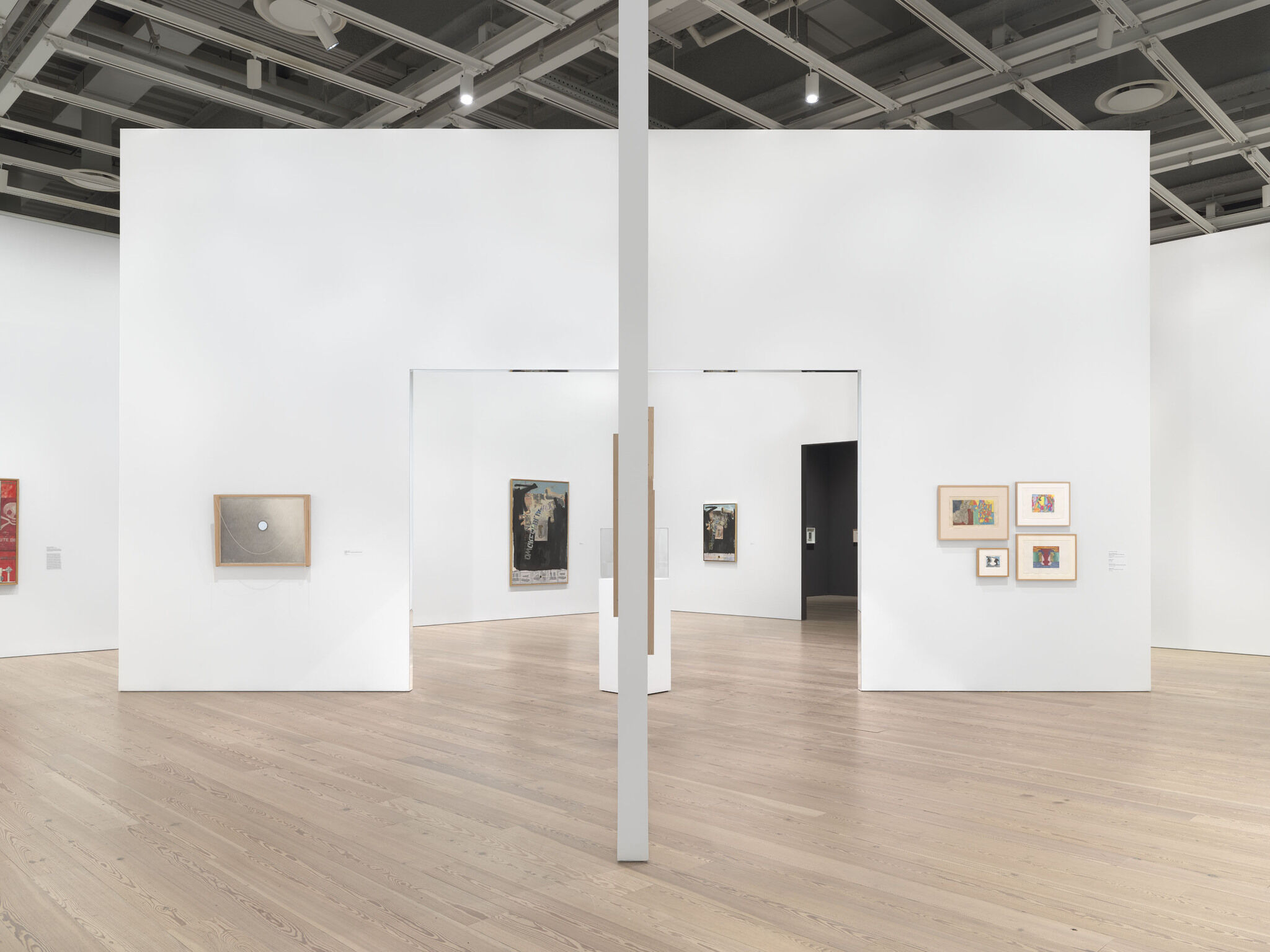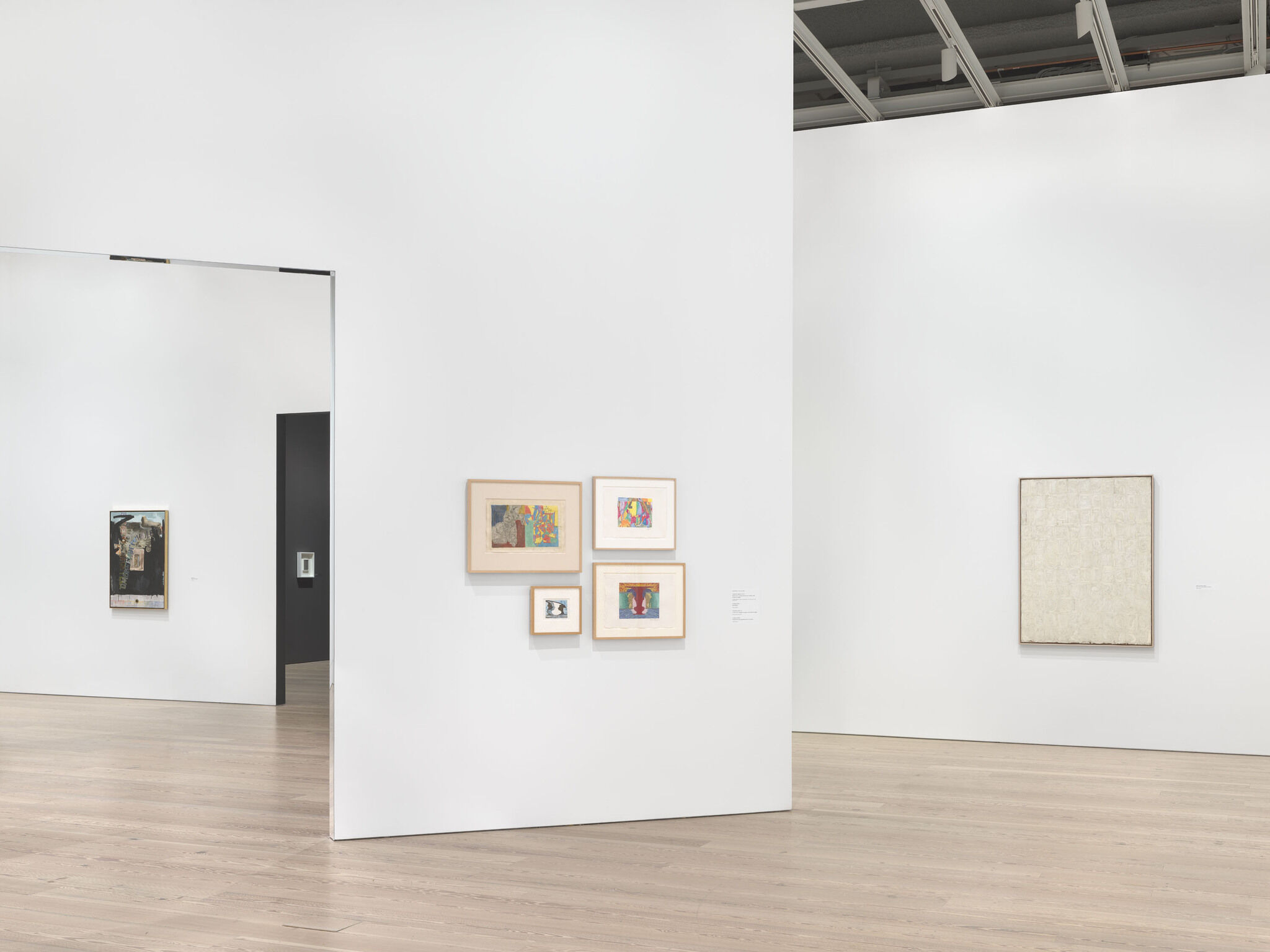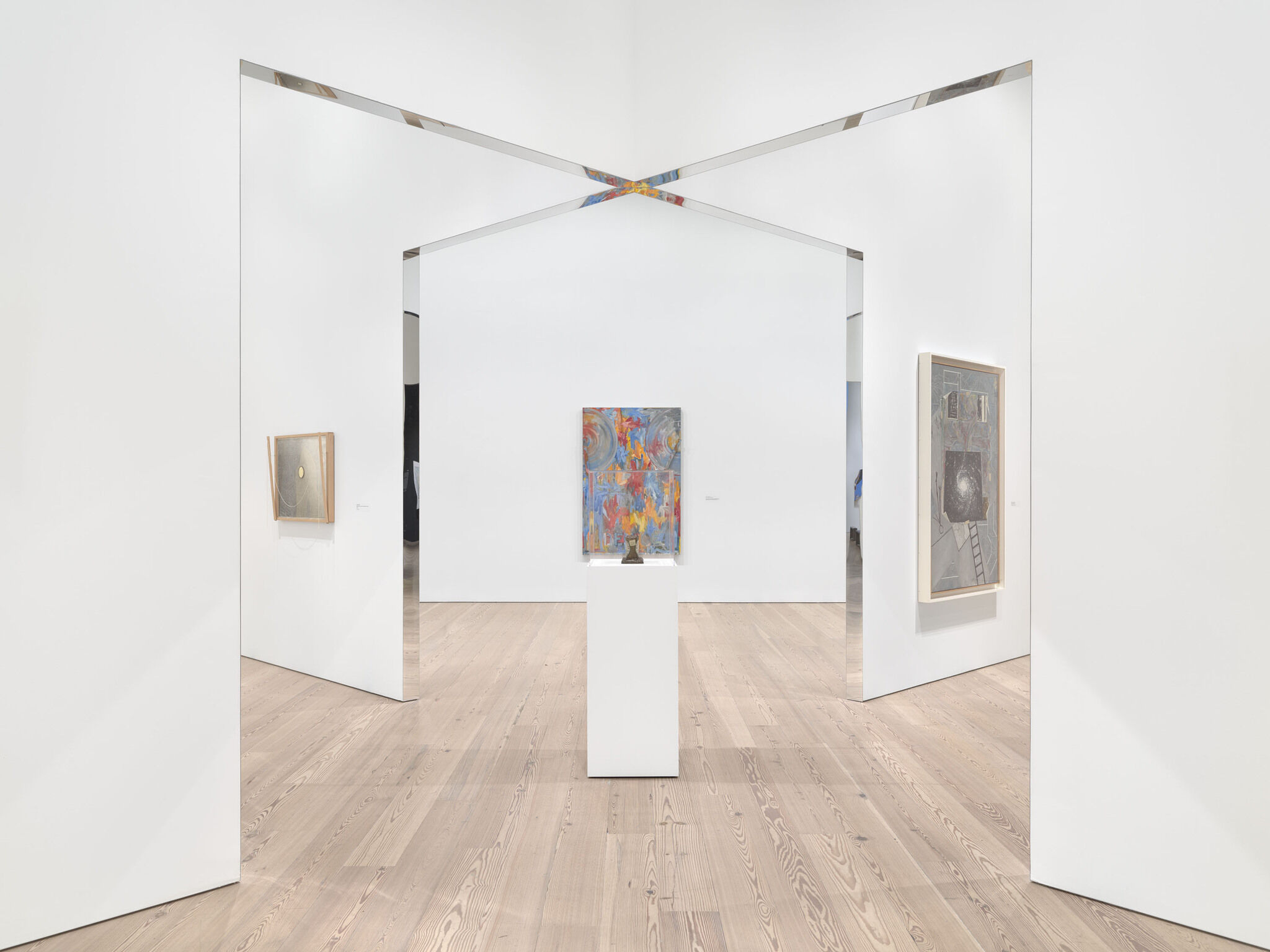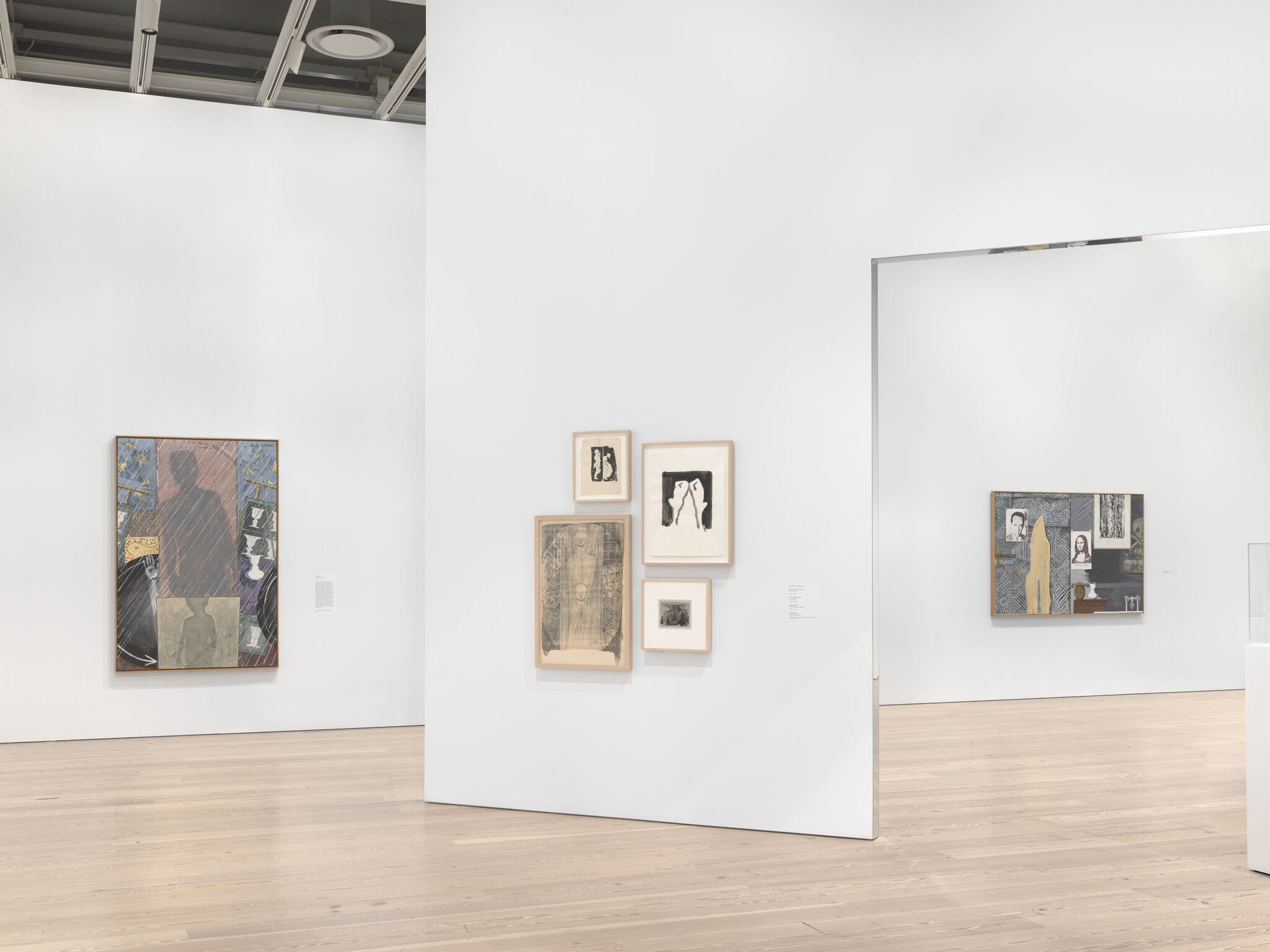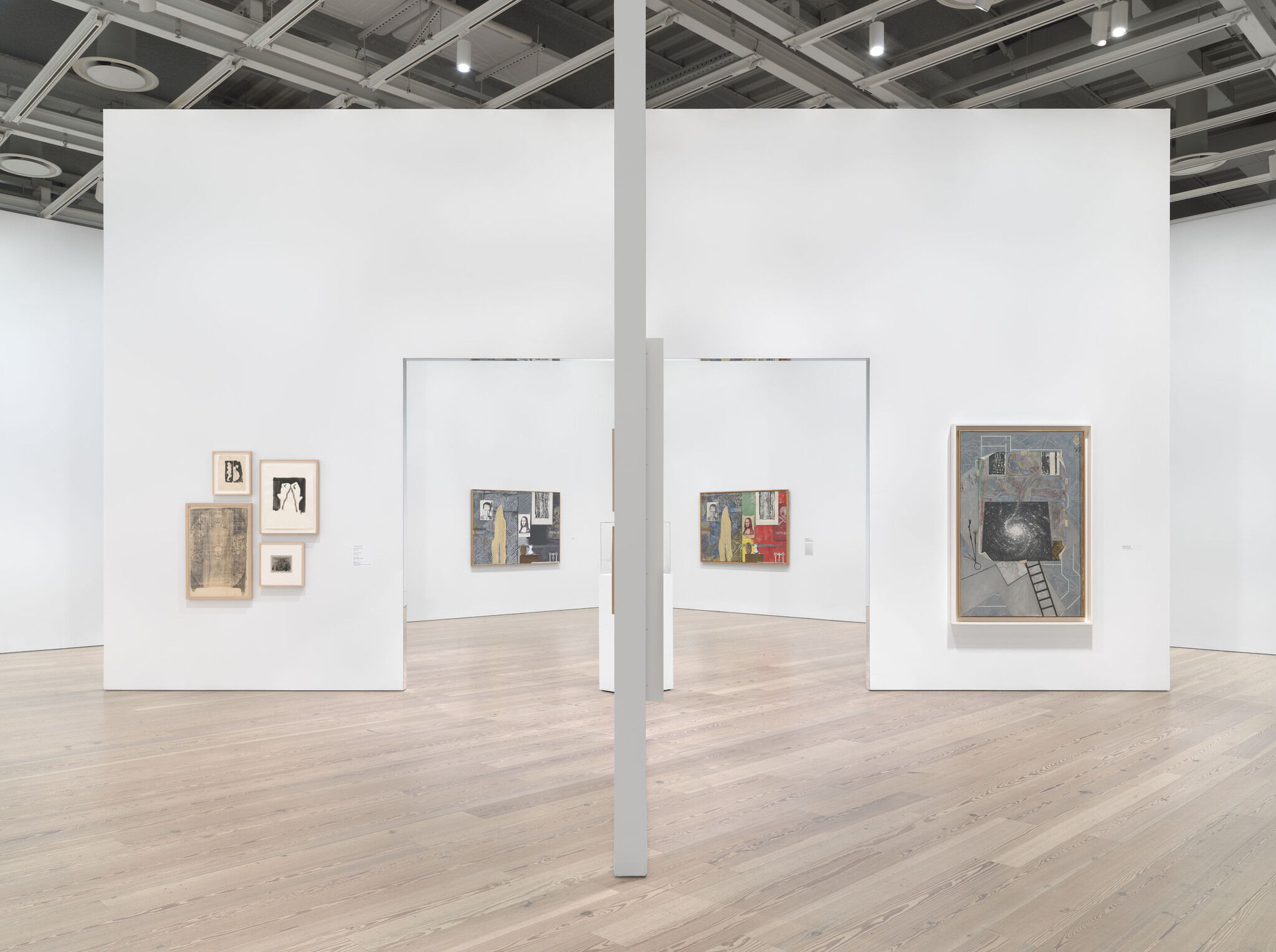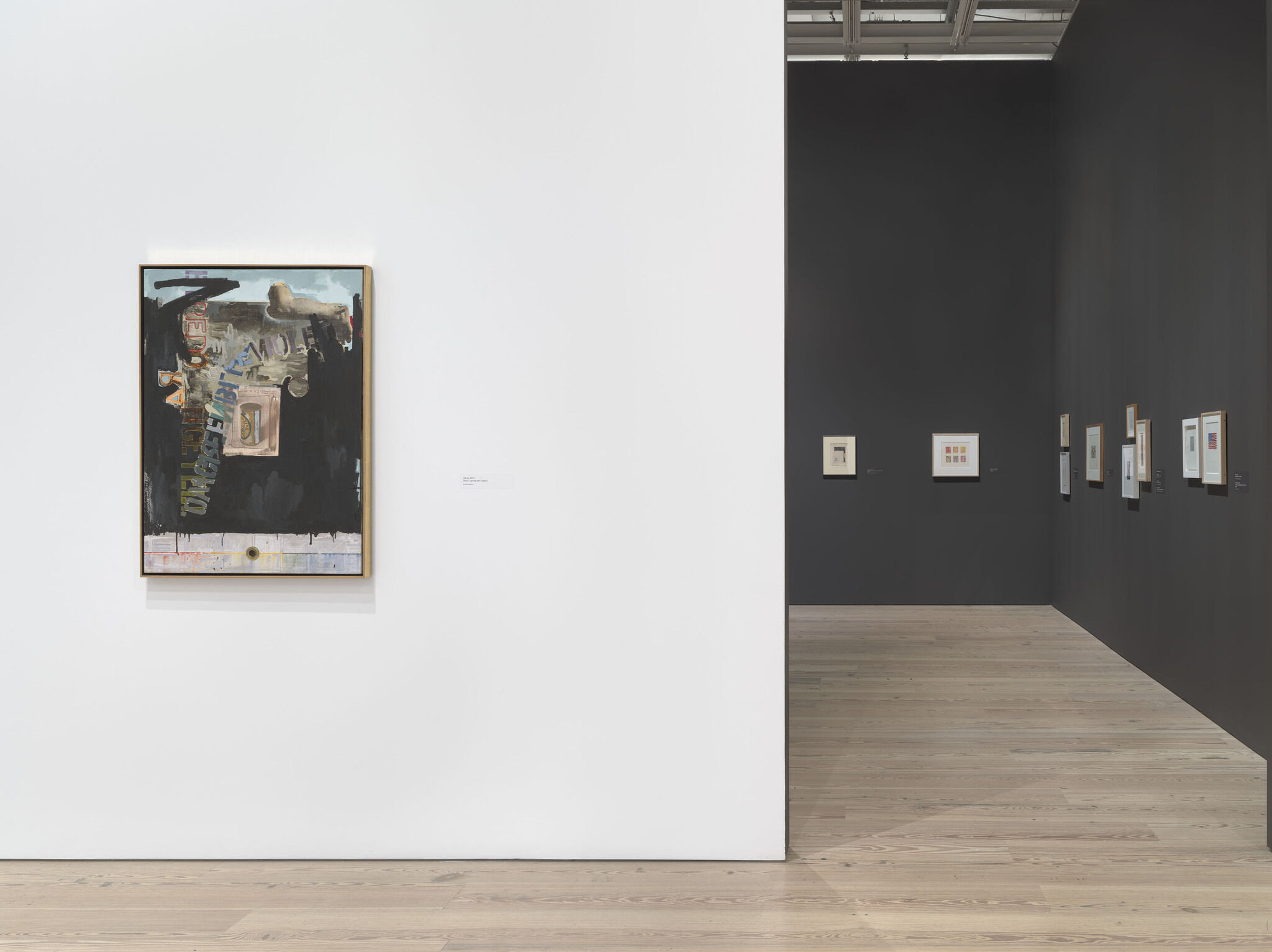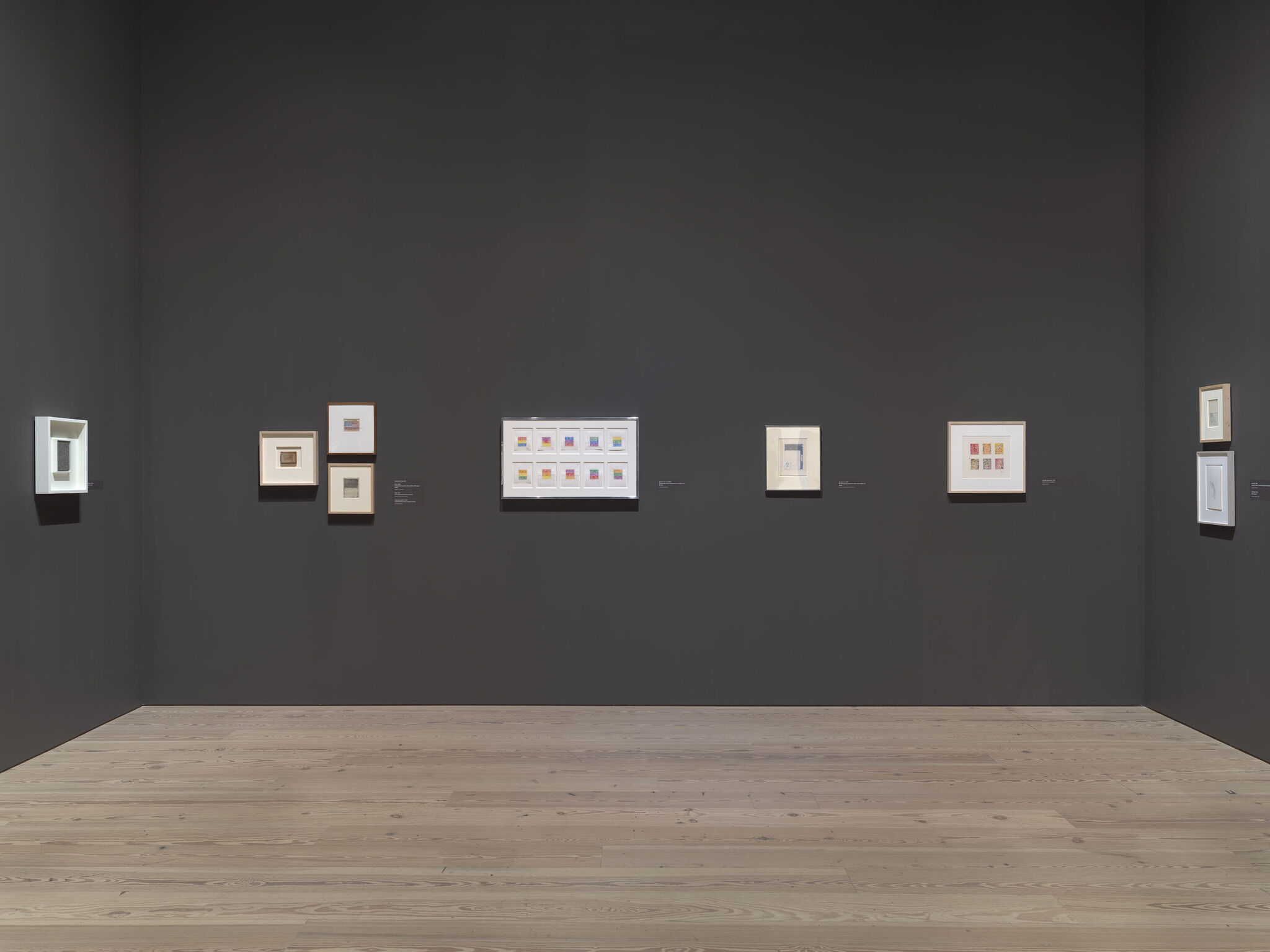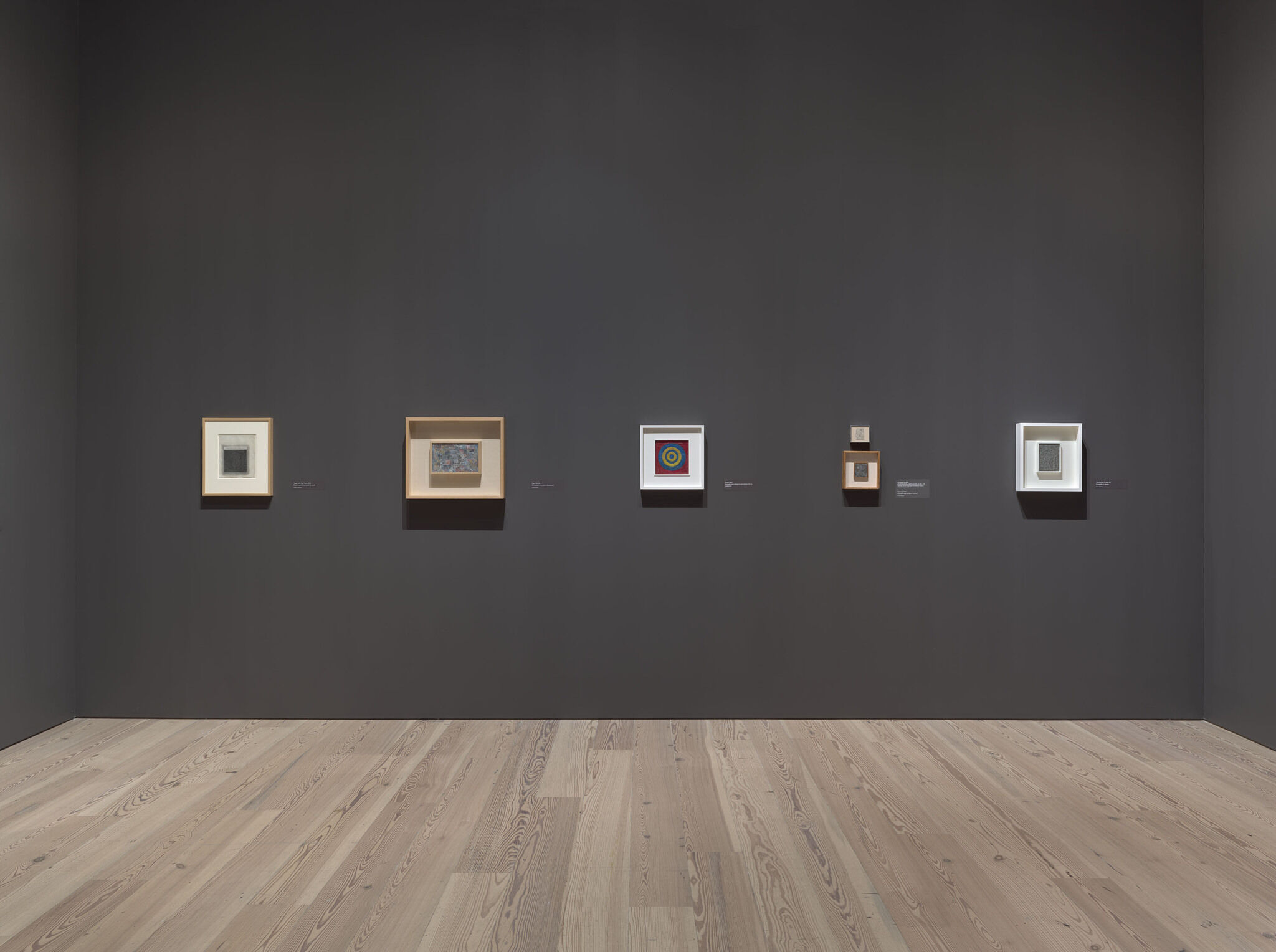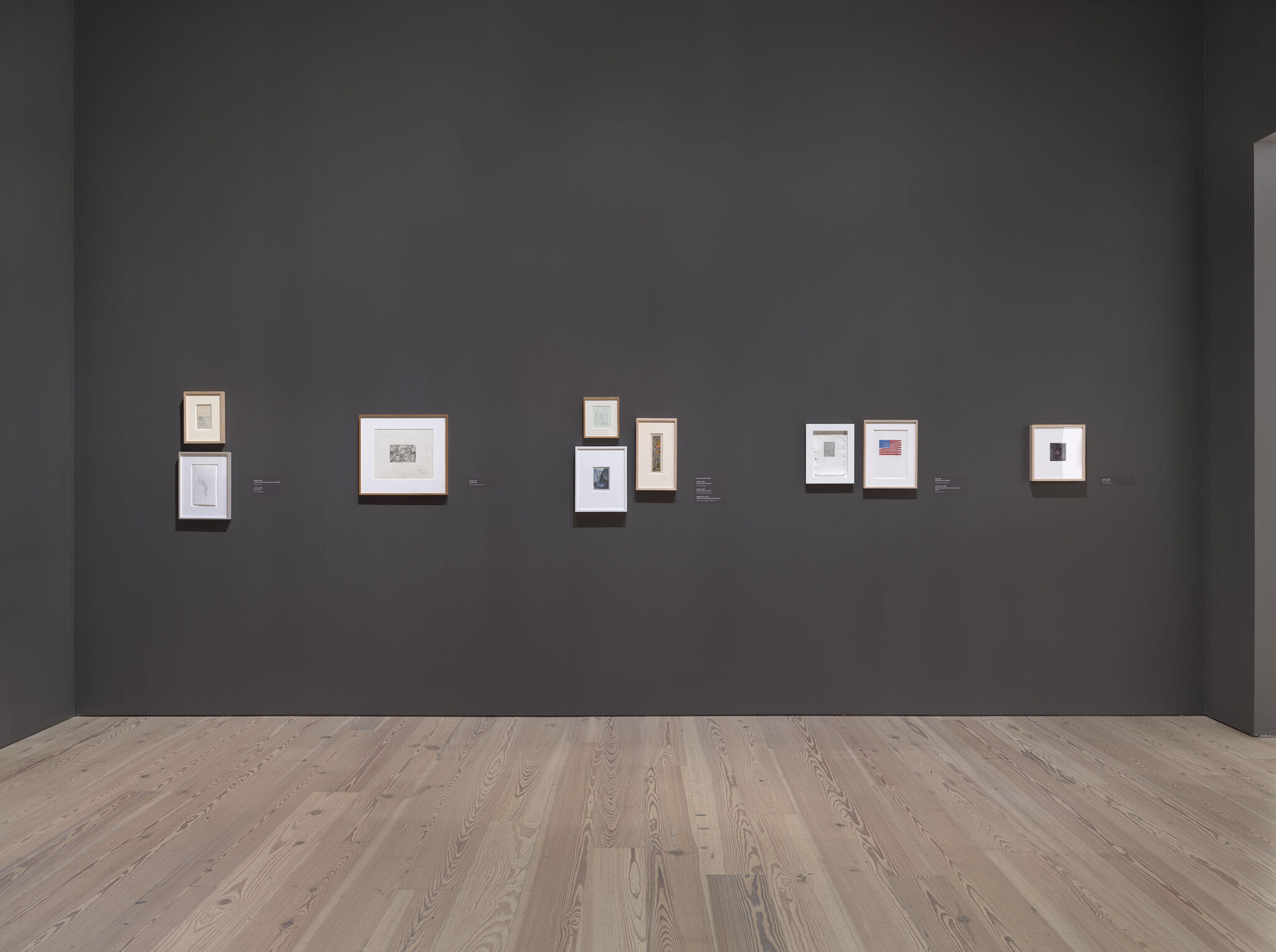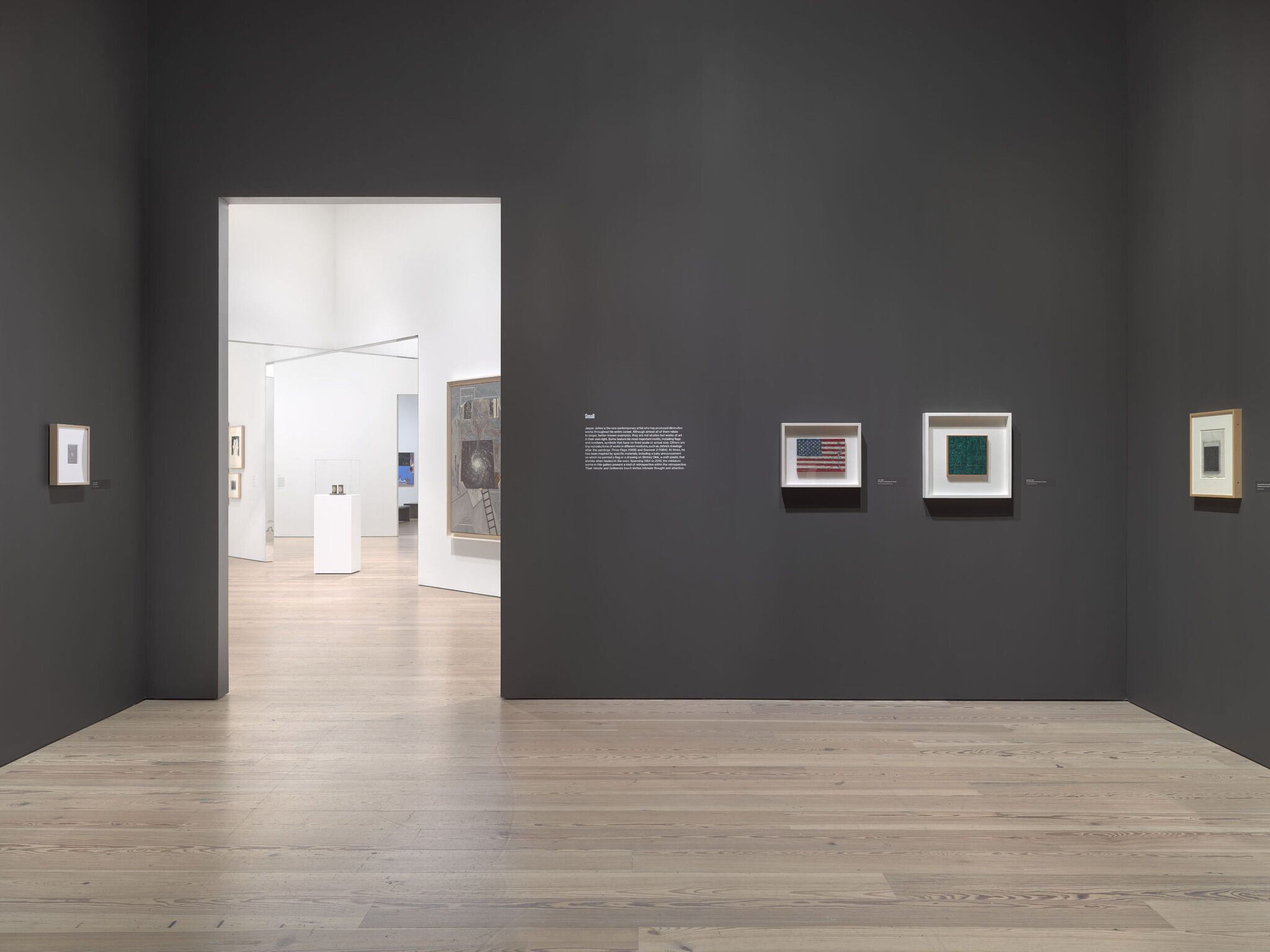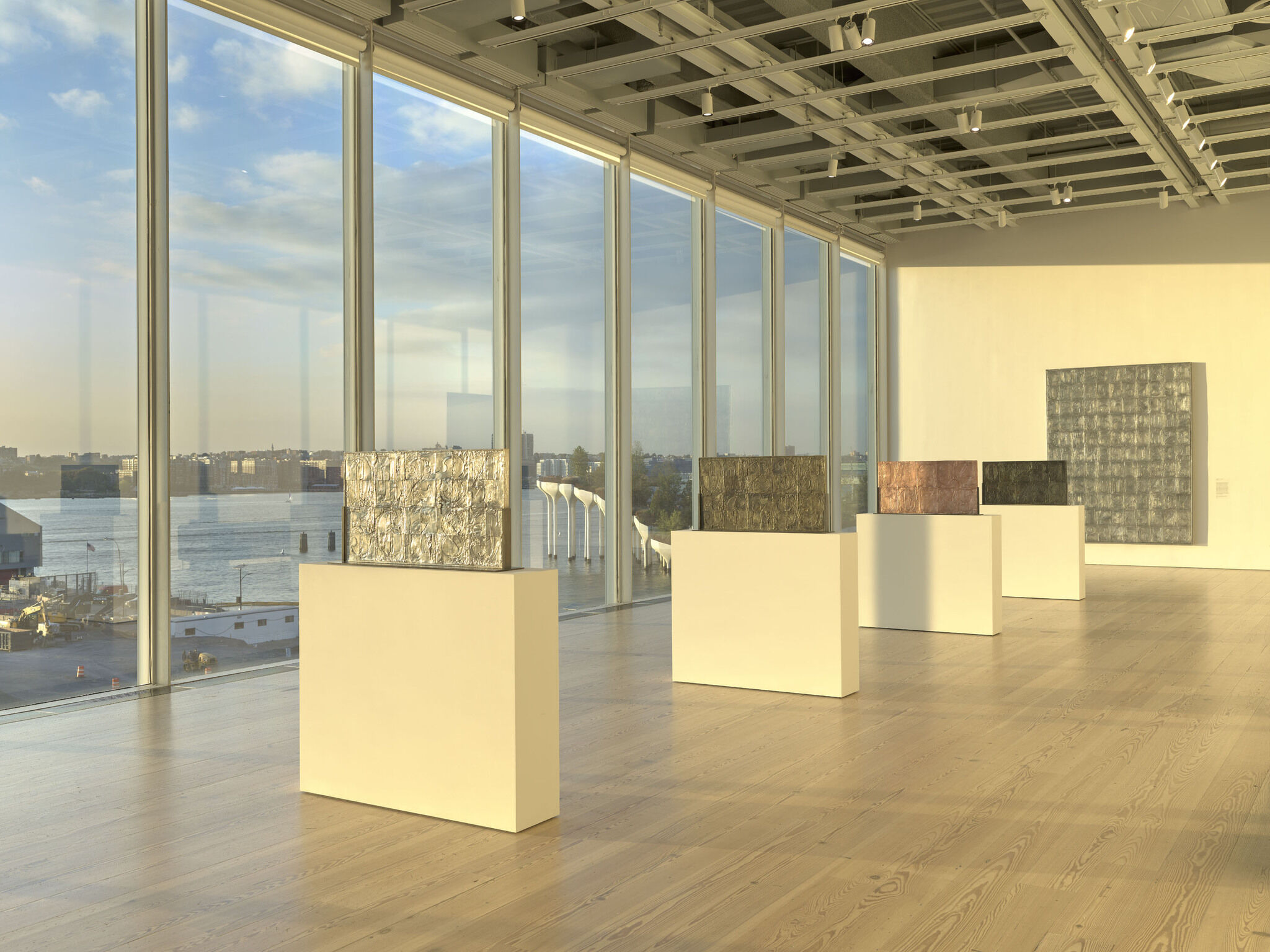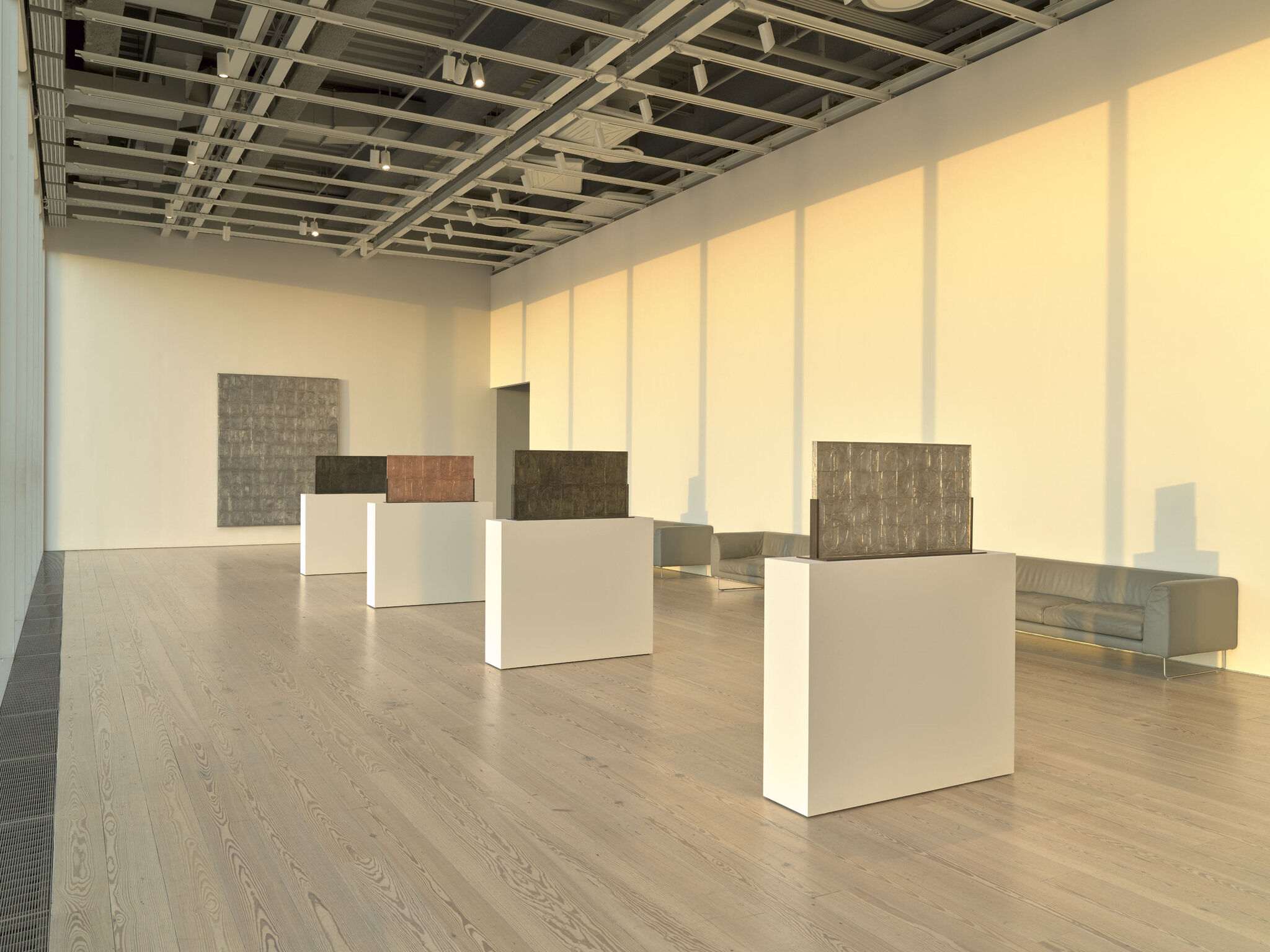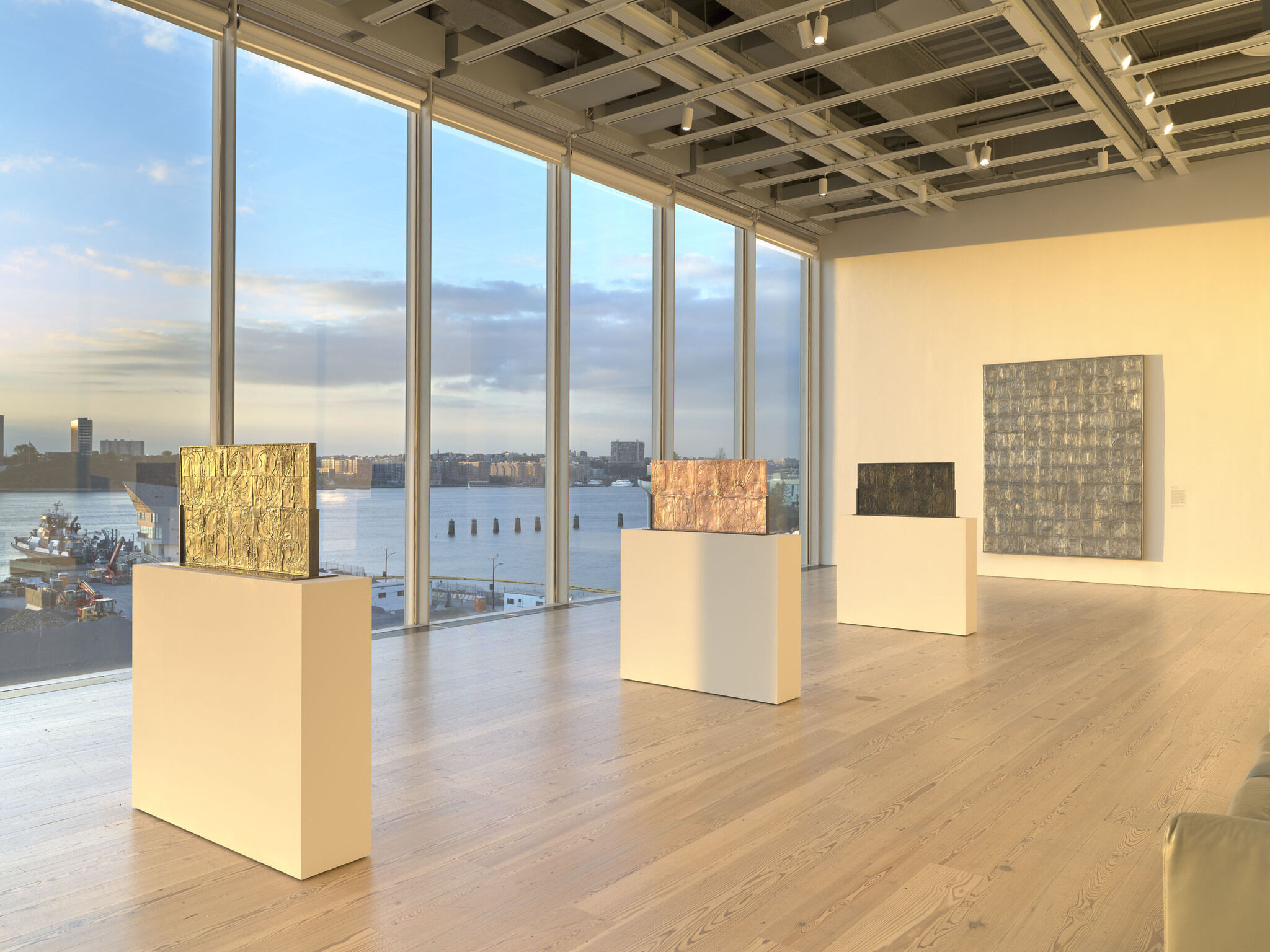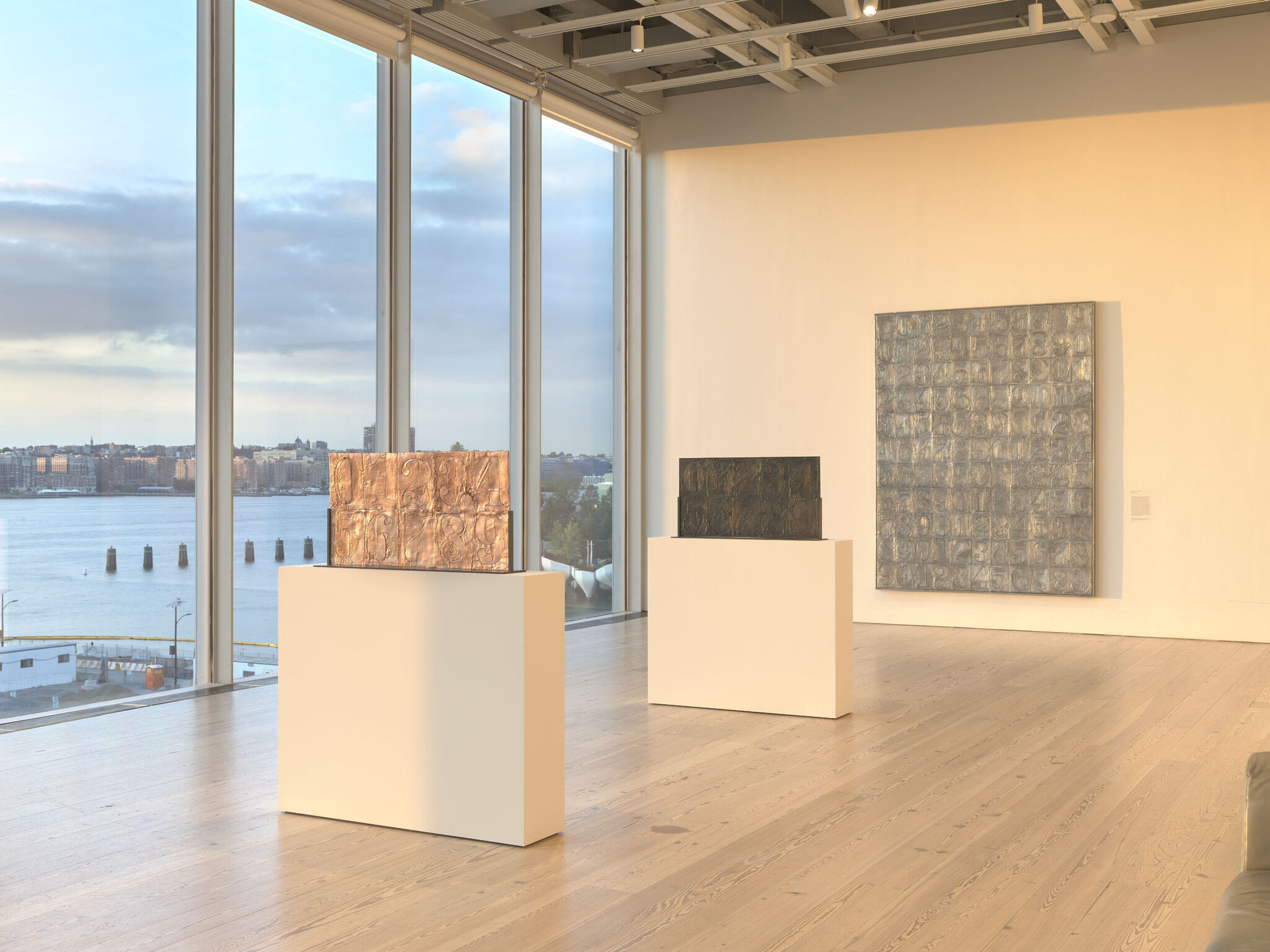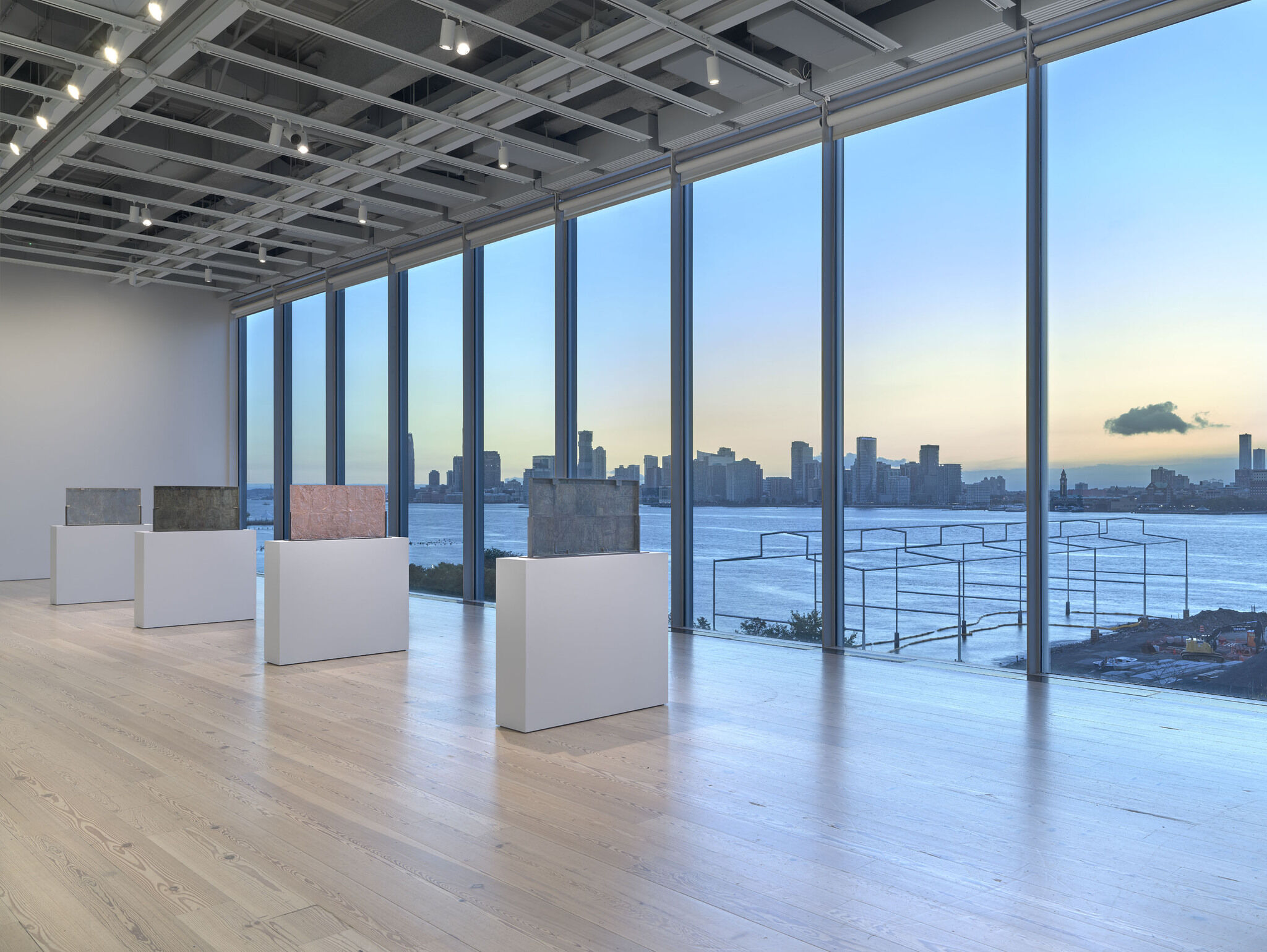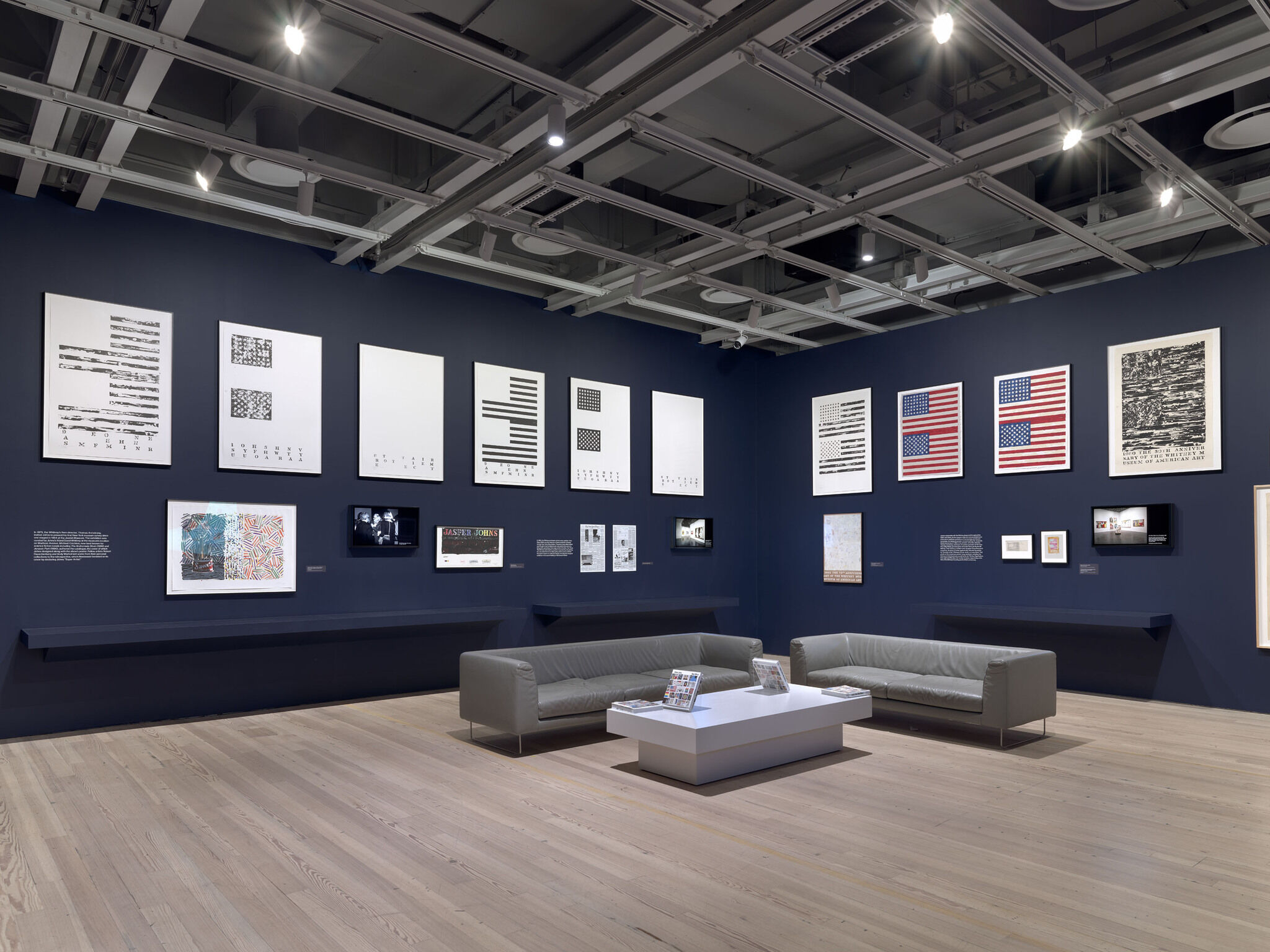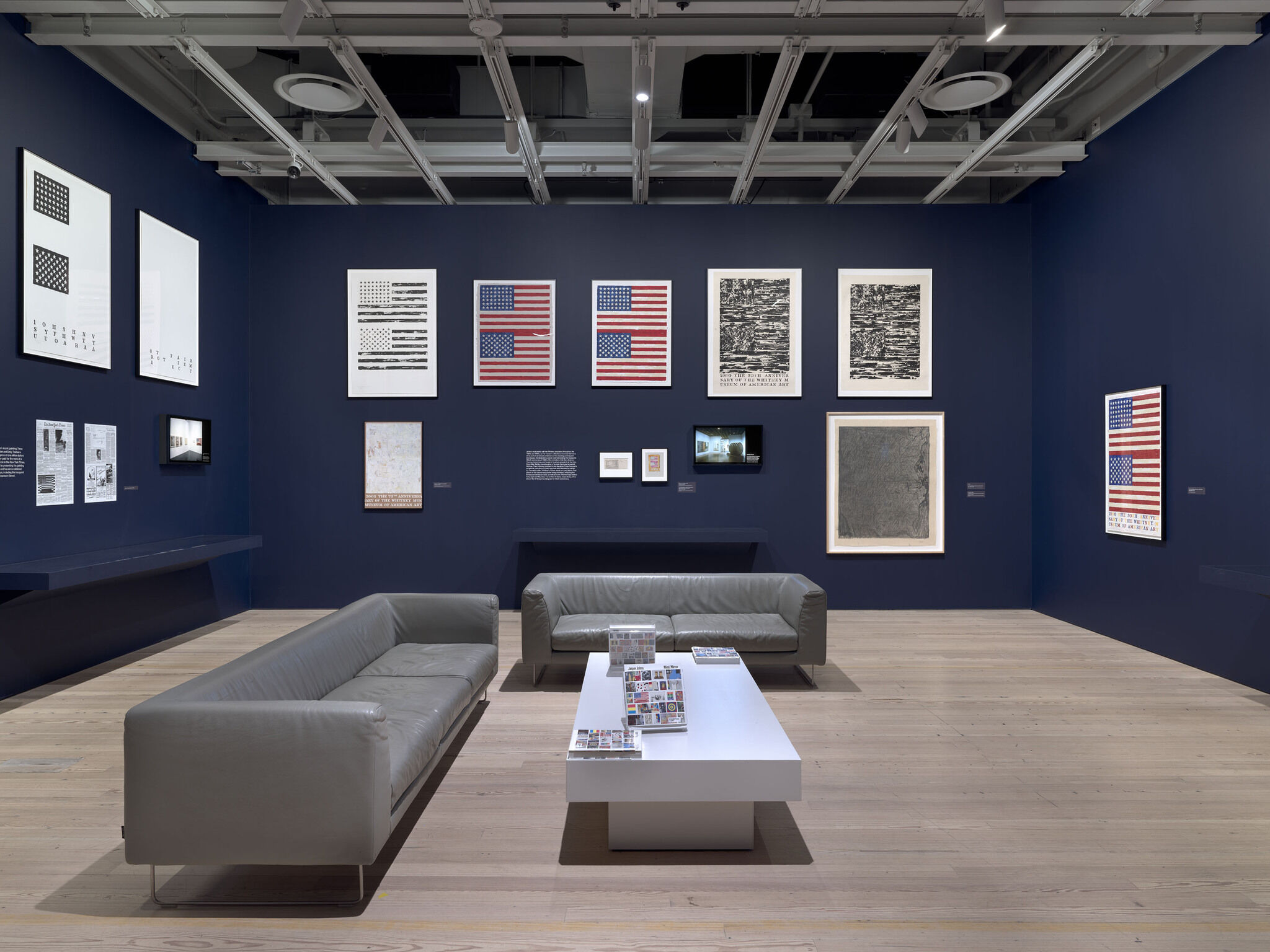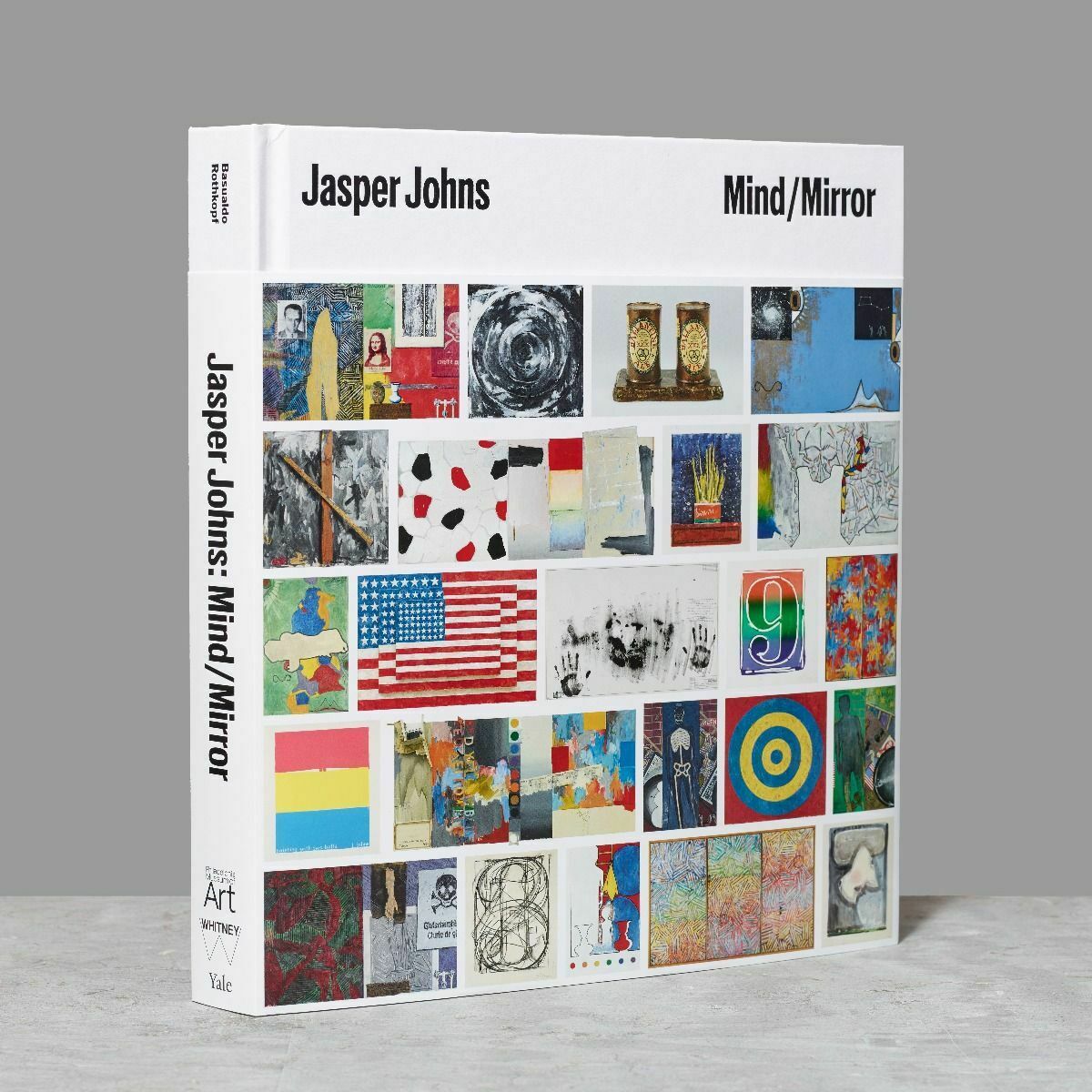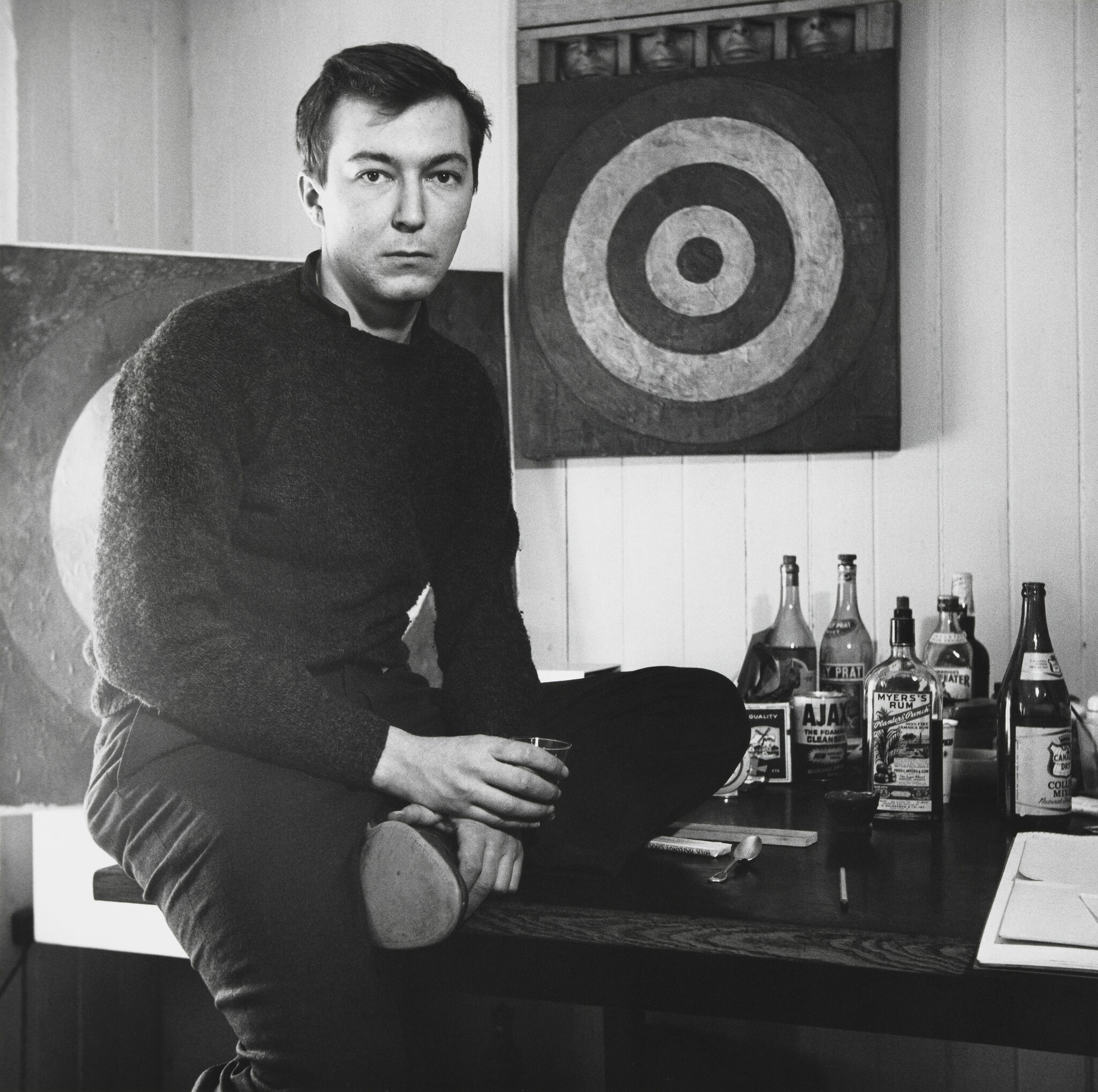Jasper Johns: Mind/Mirror
Sept 29, 2021–Feb 13, 2022
Jasper Johns’s groundbreaking work sent shock waves through the art world when it was first shown in the late 1950s, and he has continued to challenge new audiences—and himself—over a career spanning more than sixty-five years. He was born in 1930 in Augusta, Georgia; spent the majority of his adult life in New York; and today lives in Sharon, Connecticut, where, at the age of ninety-one, he remains active in his studio. Johns’s early use of common objects and motifs, language, and inventive materials and formats upended conventional notions of what an artwork is and can be. His profoundly generative practice helped spark movements including Pop art, Minimalism, and Conceptualism, among others, and has inspired successive generations of artists to this day.
Jasper Johns: Mind/Mirror is the most comprehensive retrospective ever devoted to Johns’s art. Featuring his most iconic works along with many others shown for the first time, it comprises a broad range of paintings, drawings, prints, and sculptures from 1954 to today across two sites. Conceived as a whole but displayed in two distinct parts, the exhibition appears simultaneously here at the Whitney and at the Philadelphia Museum of Art, two institutions with which Johns has had long-standing relationships. This unique dual structure draws on the artist’s lifelong fascination with mirroring and doubles, so that each half of the exhibition echoes and reflects the other. Organized in largely chronological order, the retrospective presents pairs of related galleries—one in each city—that offer varied perspectives on the artist’s turns of mind. Individually, each gallery focuses on a particular aspect of Johns’s thought and work through the lens of different themes, processes, images, mediums, and even emotional states. Taken together, they provide an immersive exploration of the many phases, treasures, and mysteries of a radical, enduring, and still-evolving career.
This exhibition is organized by the Whitney Museum of American Art and the Philadelphia Museum of Art.
The organizing curators are Carlos Basualdo, Keith L. and Katherine Sachs Senior Curator of Contemporary Art, Philadelphia Museum of Art, and Scott Rothkopf, Senior Deputy Director and Nancy and Steve Crown Family Chief Curator, Whitney Museum of American Art, New York, with Sarah B. Vogelman, Exhibition Assistant, in Philadelphia, and Lauren Young, Curatorial Assistant, in New York.
Jasper Johns: Mind/Mirror is organized by the Whitney Museum of American Art and the Philadelphia Museum of Art.
Jasper Johns: Mind/Mirror is presented by
Leonard and Judy Lauder
Leadership support is provided by
Kenneth C. Griffin
Susan and John Hess
Bank of America is the National Sponsor

In New York, this exhibition is sponsored by

Generous support is provided by Judy Hart Angelo; Neil G. Bluhm; Matthew Marks; and Kevin and Rosemary McNeely, Manitou Fund.
Major support is provided by the Barbara Haskell American Fellows Legacy Fund; The Brown Foundation, Inc., of Houston; Nancy and Steve Crown; Anne and Joel Ehrenkranz; Ellsworth Kelly Foundation and Jack Shear; Agnes Gund; Kristen and Alexander Klabin; Helen and Charles Schwab; the Whitney’s National Committee; and an anonymous donor.
Significant support is provided by Constance R. Caplan, Marguerite Steed Hoffman and Tom Lentz, the Jon and Mary Shirley Foundation, Sueyun and Gene Locks, Susan and Larry Marx, Marsha and Jeffrey Perelman, Donna Perret Rosen and Benjamin M. Rosen, The Robert Lehman Foundation, and Stefan T. Edlis and H. Gael Neeson Foundation.
Additional support is provided by Aaron and Leslee Cowen, Kathy and Richard Fuld, Johanna and Leslie Garfield, Ashley Leeds and Christopher Harland, Mrs. Ronnie F. Heyman, Sheila and Bill Lambert, Barbara and Richard Lane, Margo Leavin, Janie C. Lee, Richard and Nancy Lubin, Martin Z. Margulies, the National Endowment for the Arts, Monique and Gregg Seibert, Norman Selby and Melissa Vail Selby, and Gloria H. Spivak.

This exhibition is supported by an indemnity from the Federal Council on the Arts and the Humanities.
The opening dinner is sponsored by Christie’s

New York magazine is the exclusive media sponsor.
Leo Castelli 1968
6
At certain moments throughout his career, Jasper Johns has made and displayed groups of new paintings in ways that emphasize their relationships to one another and the spaces in which they were shown. The next gallery precisely re-creates one such exhibition, which he staged in 1968 at Leo Castelli Gallery in Manhattan. Johns filled the intimate townhouse gallery with a dramatic set piece of six paintings interconnected through shared imagery, processes, and a concern for architectural space.
Four of these works were made with the same silkscreen, in which a note indicates an image of a fork be reproduced at a scale of seven inches long, though it is actually printed at twice that length. This discrepancy foregrounds the space between reality and its representation, as well as the gaps between what we read, see, and believe. Other motifs, by contrast, appear at actual size, including rulers and window frames pressed directly on the canvases. Such elements play on the trope of painting as an illusionistic portal onto other realms, while also literally referencing the built environment, as do the flagstones Johns designed from his memory of a wall painted to look like stone. Throughout these works, airy color and open brushwork tense against rectangular borders and interior divisions, suggesting walls within canvases and sky within frames. As a whole, they form a carefully choreographed ensemble that points to their inner structural conditions and to those of the room that contains them.
The corresponding gallery at the Philadelphia Museum of Art re-creates Johns’s Leo Castelli exhibition from 1960.
Artists
Events
View all-
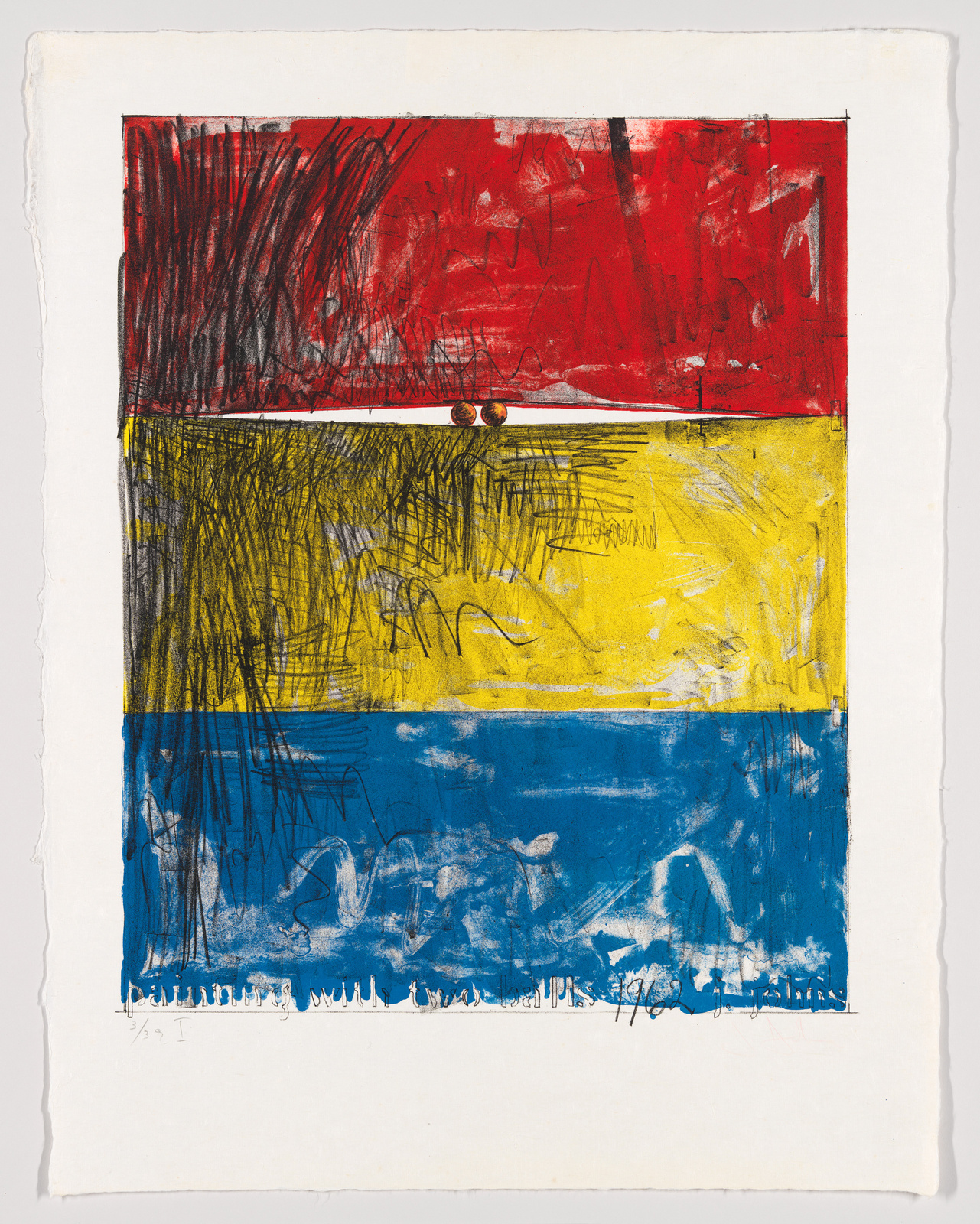
Open Studio From Home: Robert Blackburn Printmaking Workshop
Saturday, February 5, 2022
11 am–12 pm -
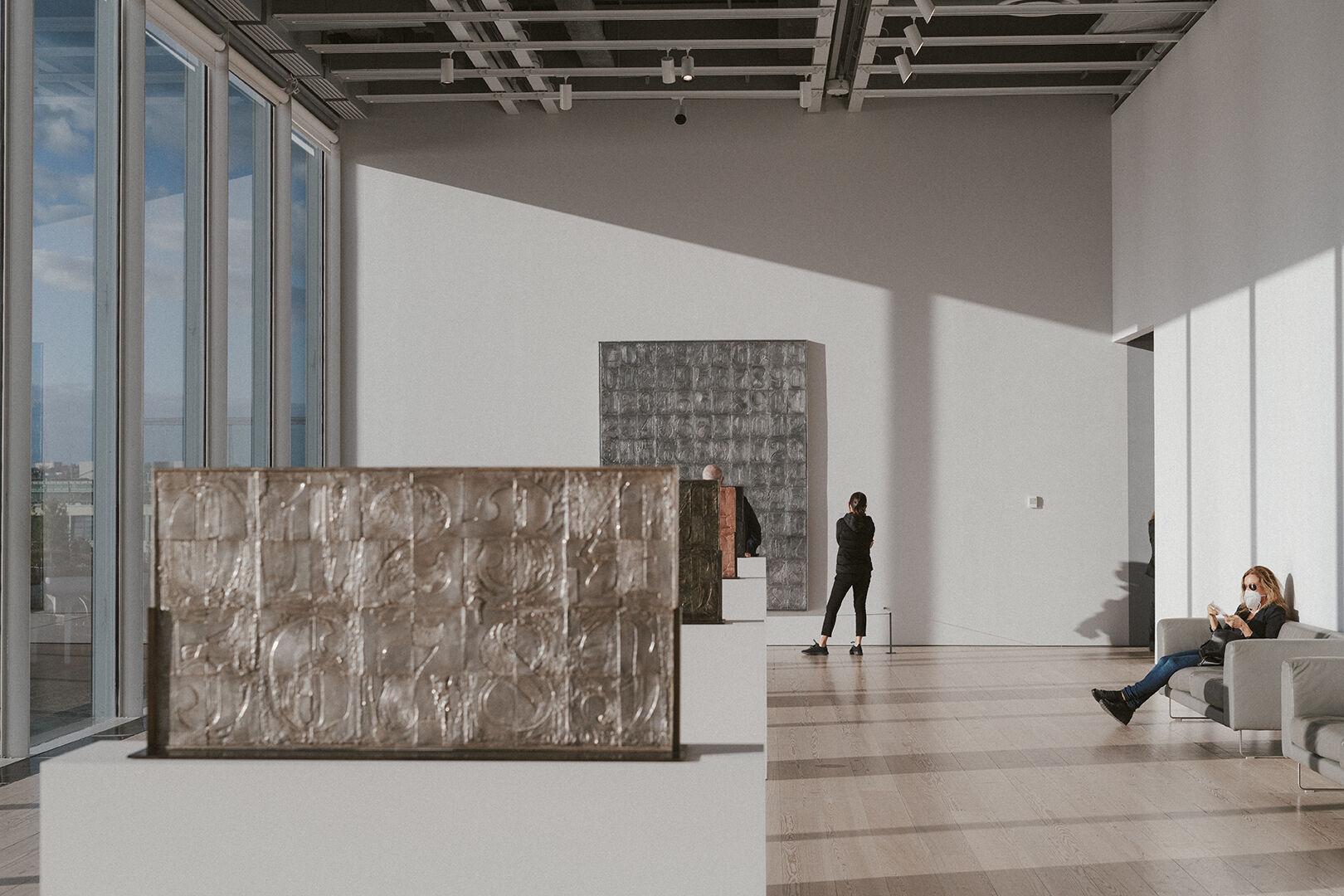
Weekend Member Mornings: Last Look at Jasper Johns: Mind/Mirror
Repeats
Saturday, February 5, 2022
10:30–11 am -
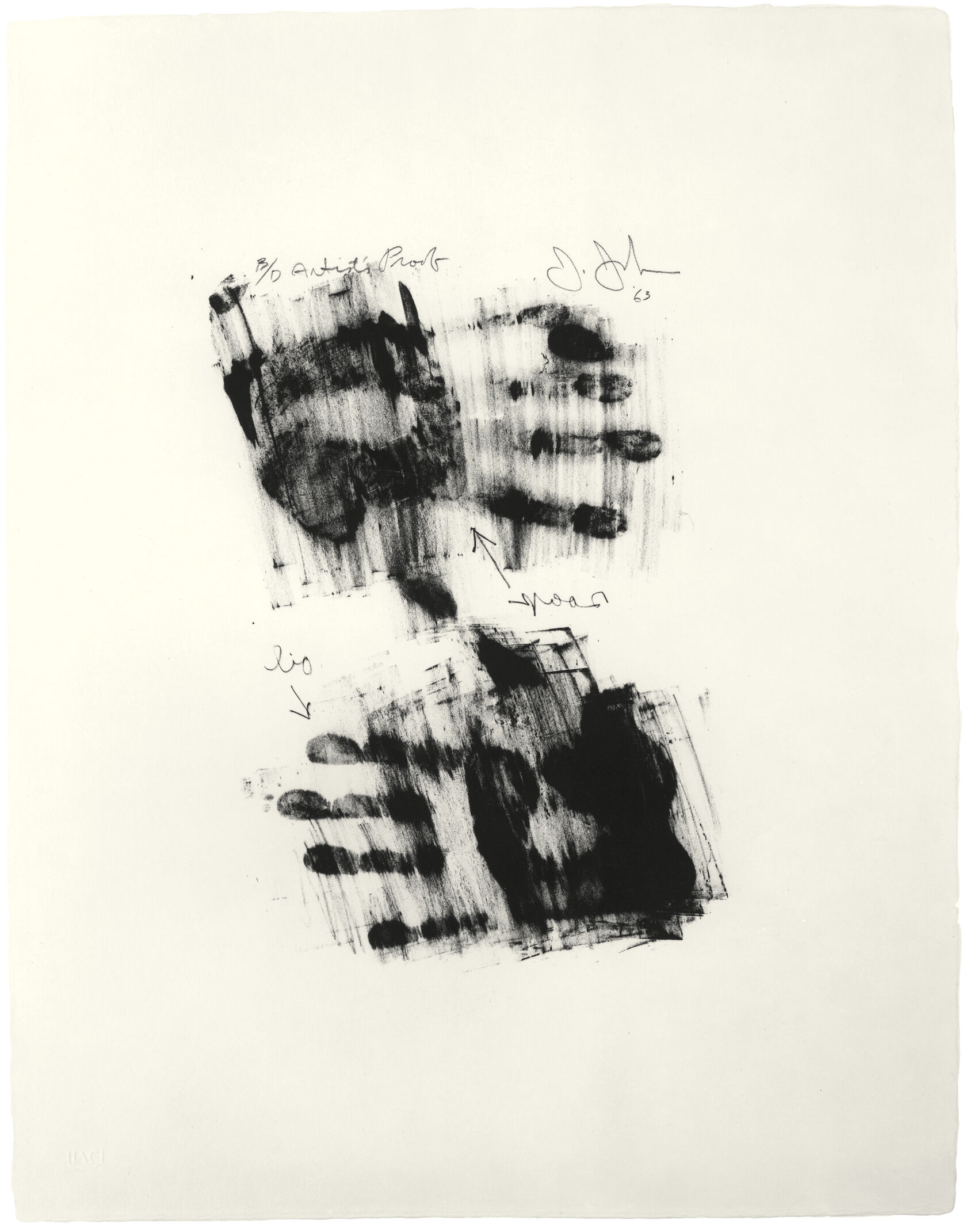
Print and Process After Johns
Thursday, January 27, 2022
6 pm -
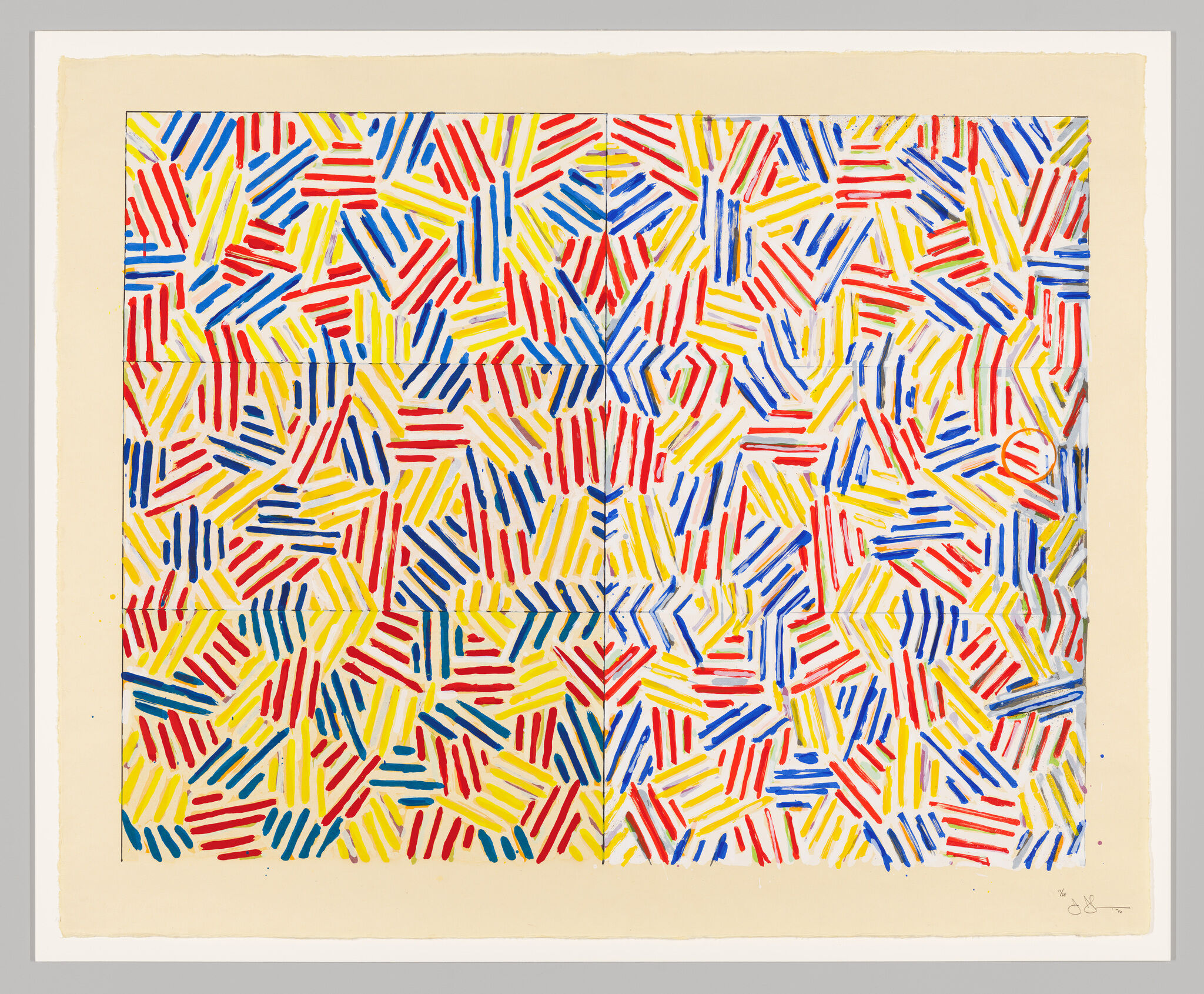 Mirroring Practice: Poets Respond to Jasper Johns
Mirroring Practice: Poets Respond to Jasper JohnsThursday, January 20, 2022
7 pm
Mobile guides
Hear from artists, curators, and scholars on selected works from the exhibition.
Exhibition Catalogue
Jasper Johns (b. 1930) is arguably the most influential artist living today. Over the past sixty-five years, he has produced a radical and varied body of work marked by constant reinvention. Inspired by the artist’s long-standing fascination with mirroring and doubles, this book provides an original and exciting perspective on Johns’s work and its continued relevance.
A diverse group of curators, academics, artists, and writers offer a series of essays—including many paired texts—that consider aspects of the artist’s work, such as recurring motifs, explorations of place, and use of a wide array of media. These include Carroll Dunham on dreams, Ruth Fine on monotypes and working proofs, Michio Hayashi on Japan, Terrance Hayes on flags, and Colm Toíbín on nightmares, among many others. The various themes are further explored in a series of in-depth plate sections that combine prints, drawings, paintings, and sculptures to draw new connections in Johns’s vast output.
Accompanying “mirroring” exhibitions held simultaneously at the Whitney Museum of American Art and the Philadelphia Museum of Art, this lavishly illustrated volume features a selection of rarely published works along with never-before-published archival content and is full of revelations that allow us to engage with and understand the artist’s rich and varied body of work in new and meaningful ways.
Buy now
Explore works from this exhibition
in the Whitney's collection
View 98 works
In the News
“The structure of the exhibition will open a window onto the beauty, meaning, and remarkable artistic order that organizes Johns’s work.” —ArtfixDaily
“The artist’s work has managed to speak both to and for the country’s consciousness for the last 60 years—and he’s not done yet.” —T Magazine
"[A]n absolute must-see"—Vogue
"It’s a broad and restless confrontation of the work of one of the country’s best-known artists . . . ." —Boston Globe
"This is the first genuine, must-see blockbuster exhibition to open since the pandemic began in 2019, and it might be an occasion for euphoria.” —Washington Post
"It’s a testimony to [Johns's] long, productive career that Jasper Johns: Mind/Mirror needs two museums . . . ." —Wall Street Journal
". . . a spectacular exhibition, spanning the artist's 65-year career and featuring many of his most iconic works as well as rare pieces on public view here for the first time."—Gothamist
"Mind/Mirror is a much-needed close-read, experimental new geography of this artist . . ."—New York Magazine
". . . a monumental retrospective [. . .] reveals an artist’s protean talent, changing perspectives and resiliency over six decades."—New York Times

